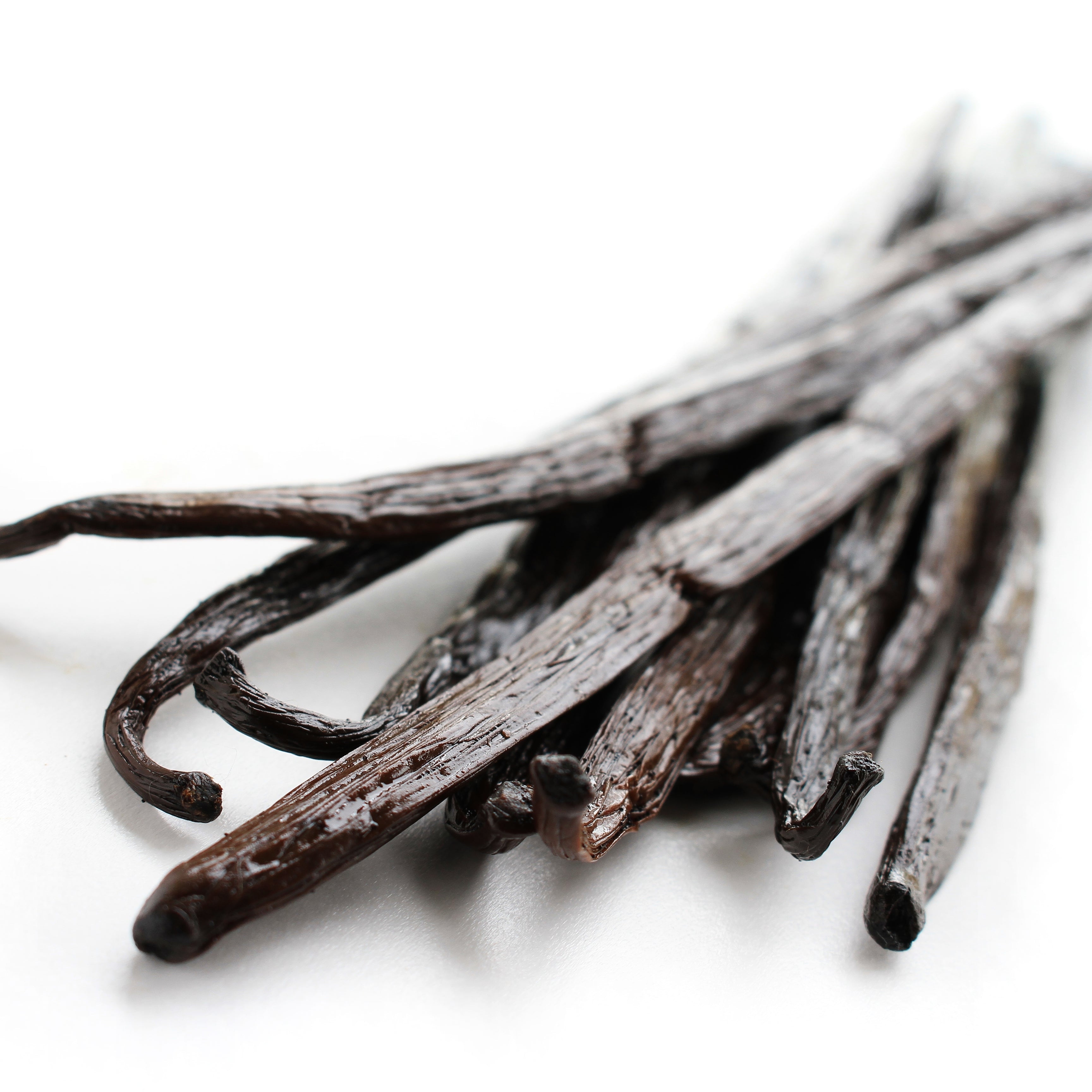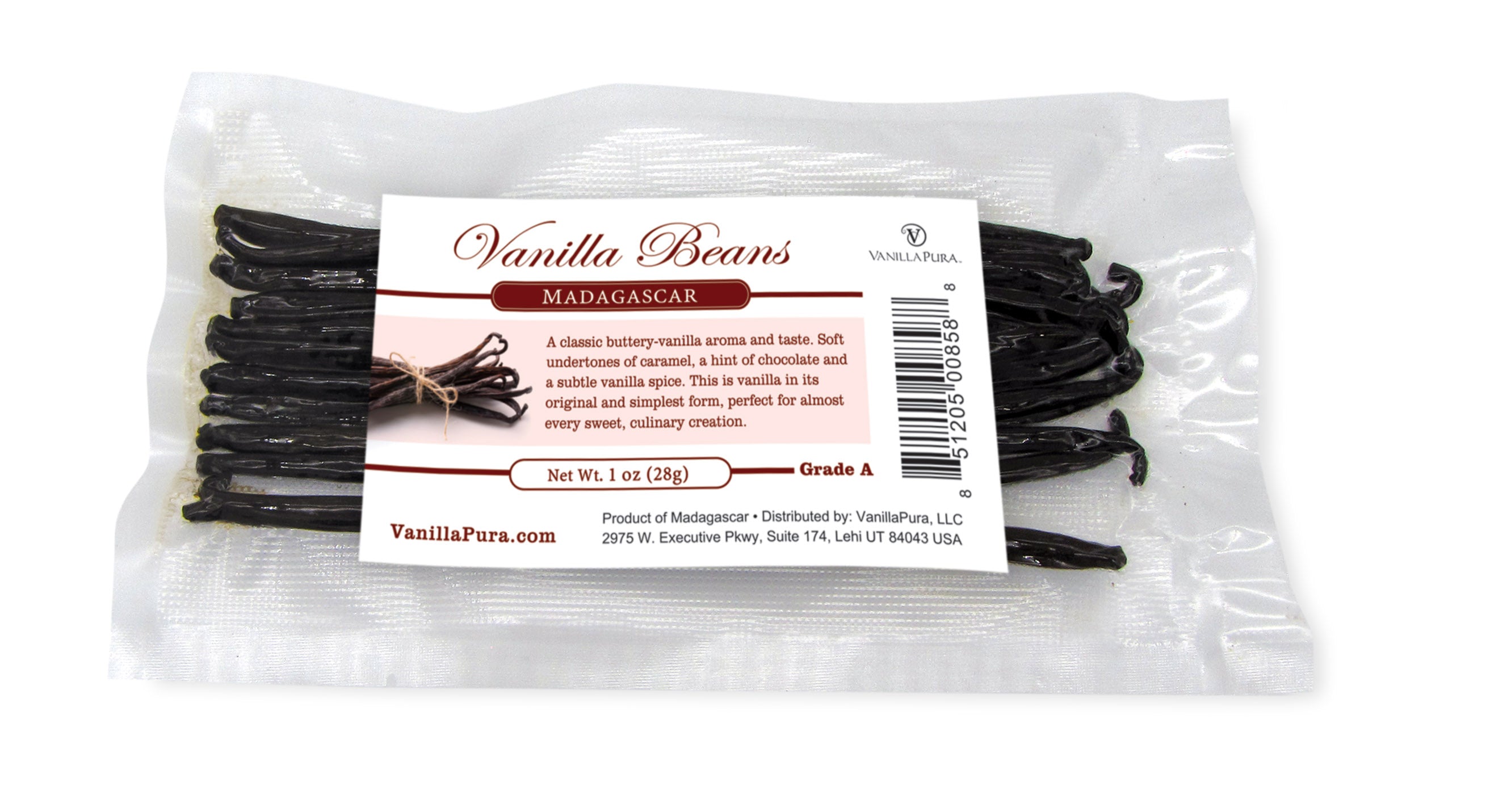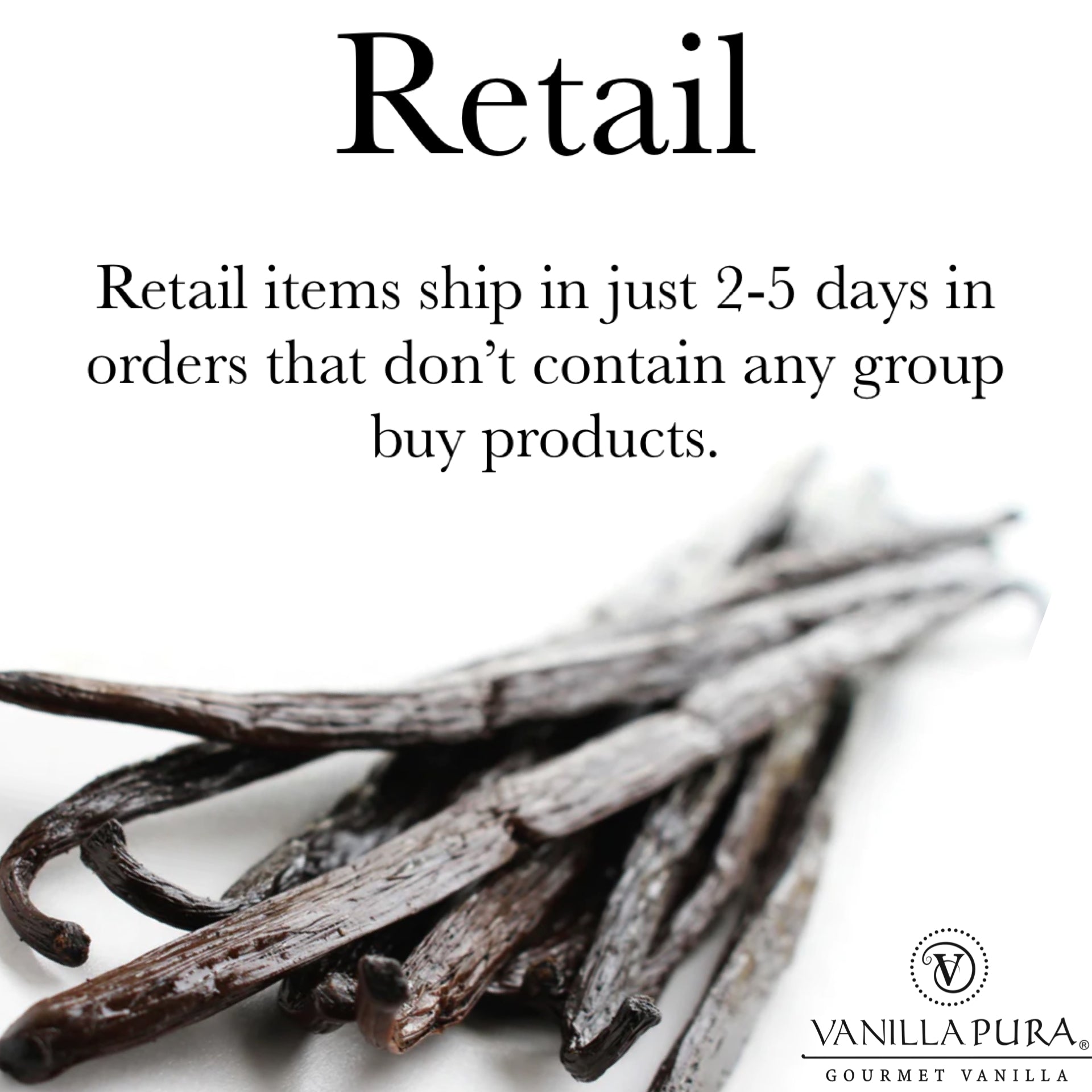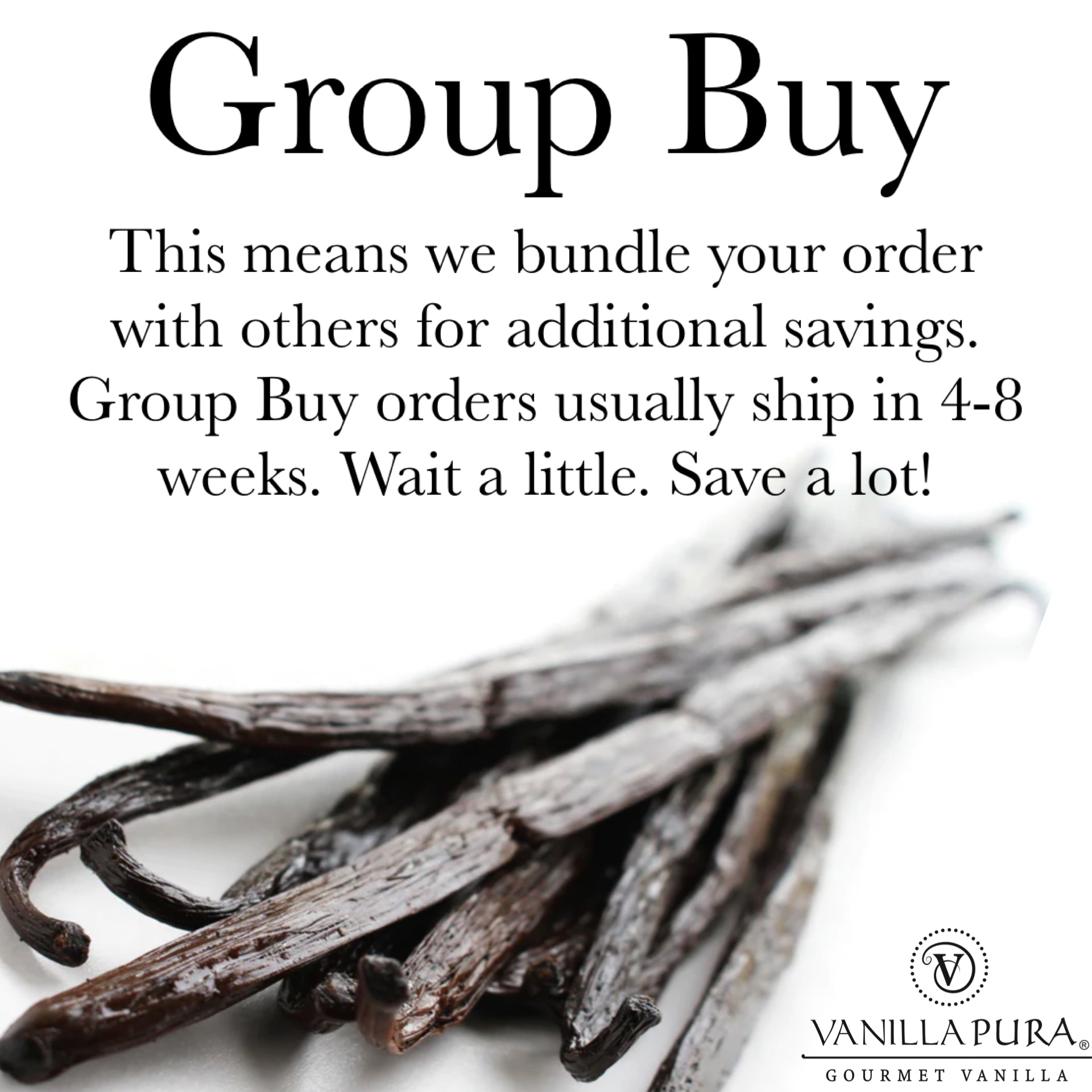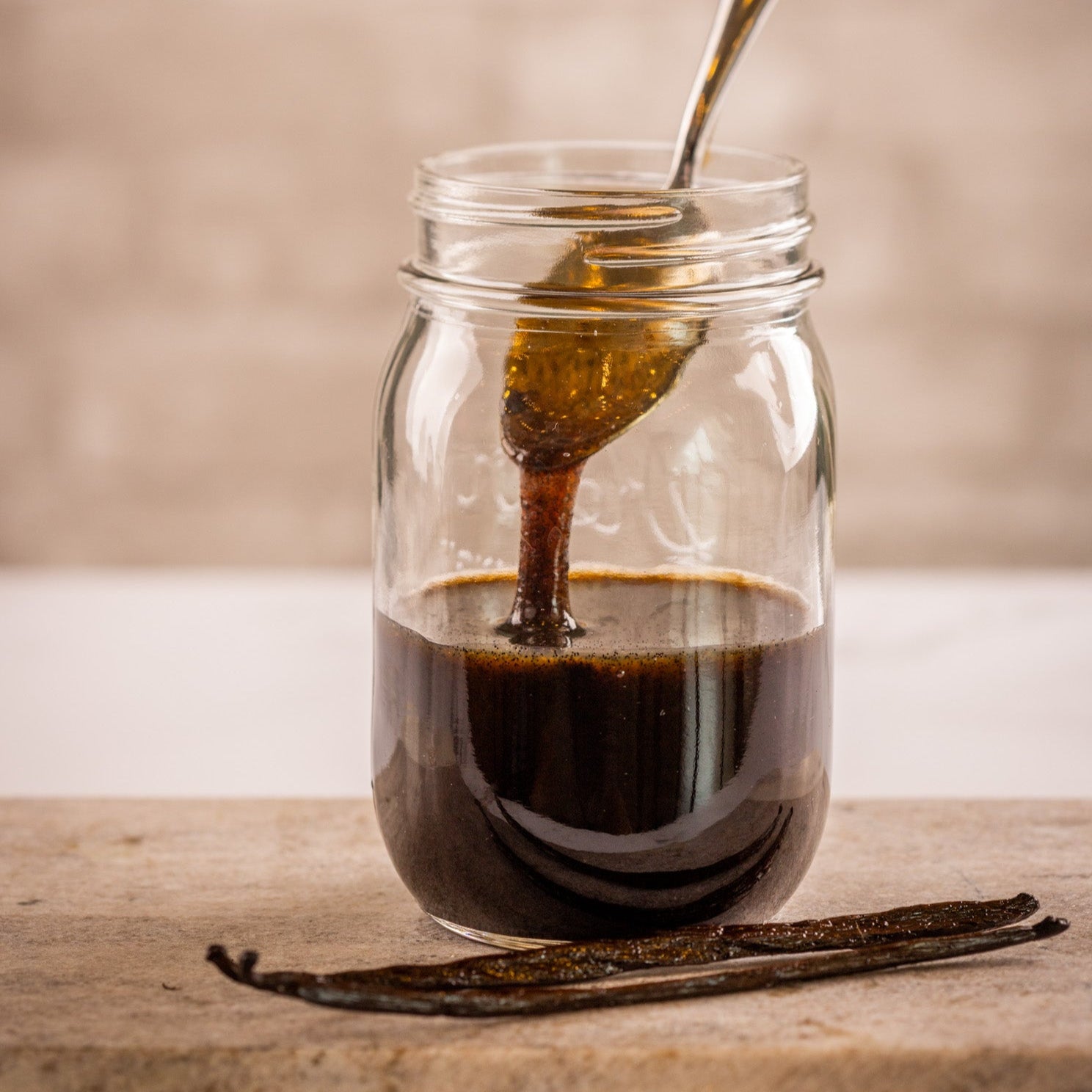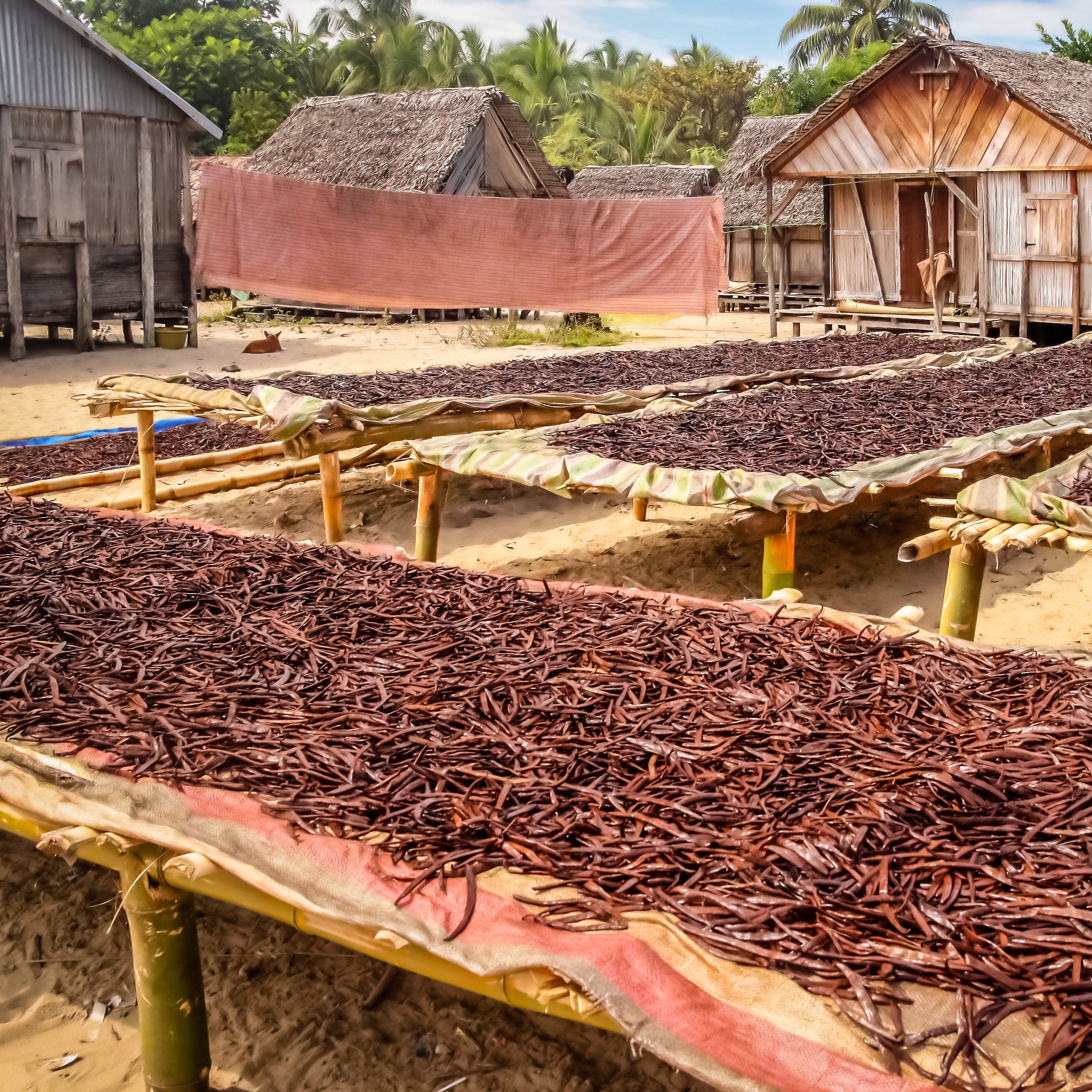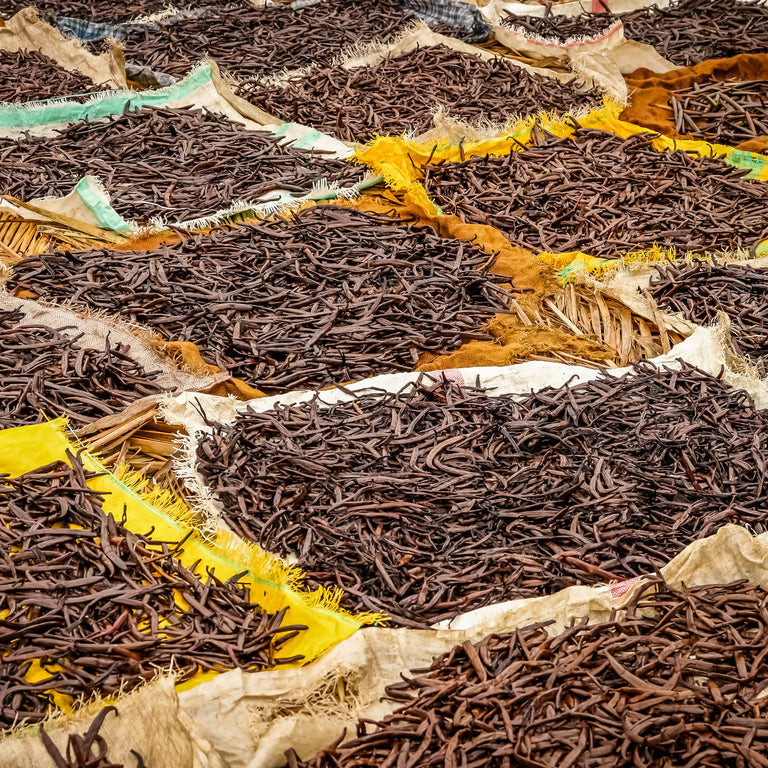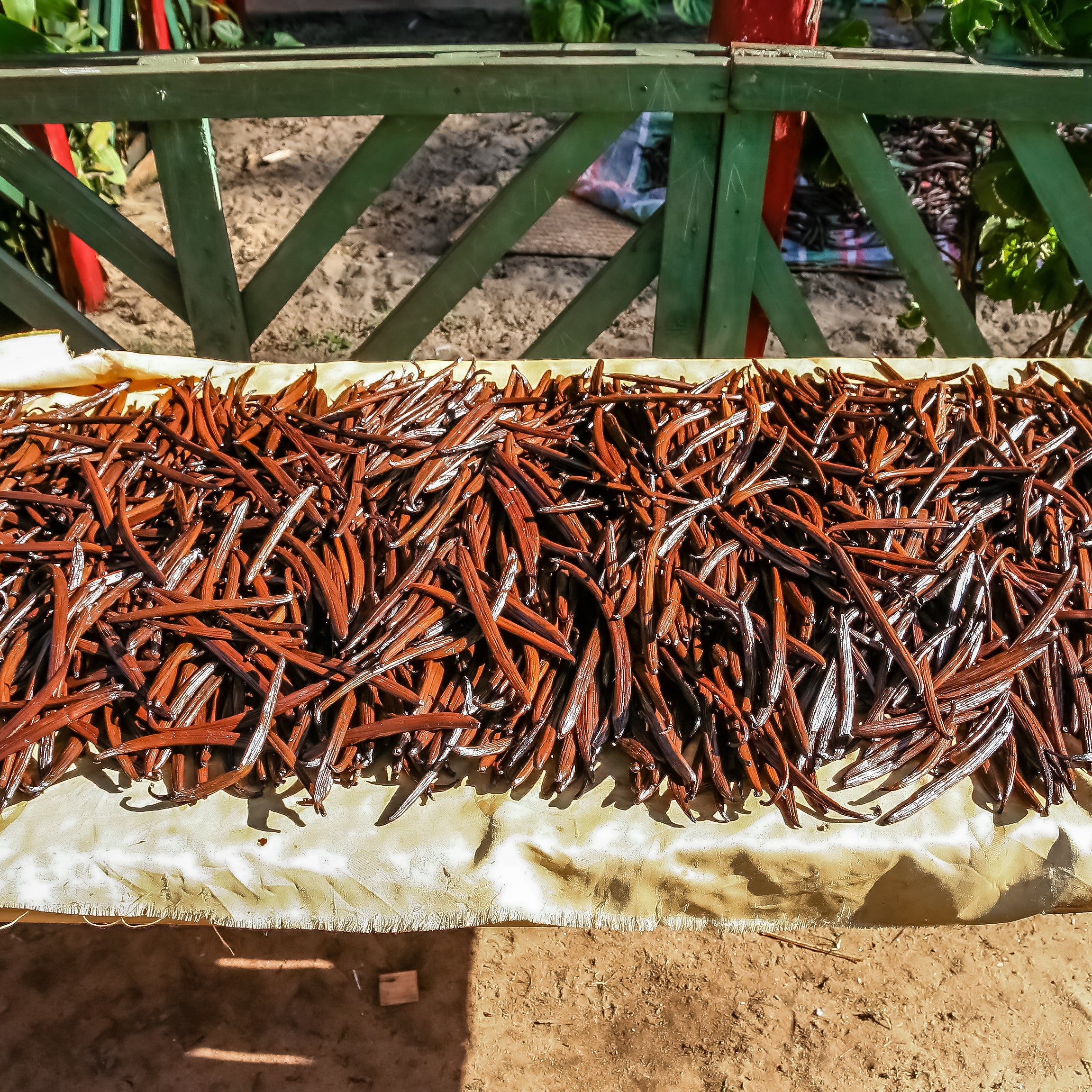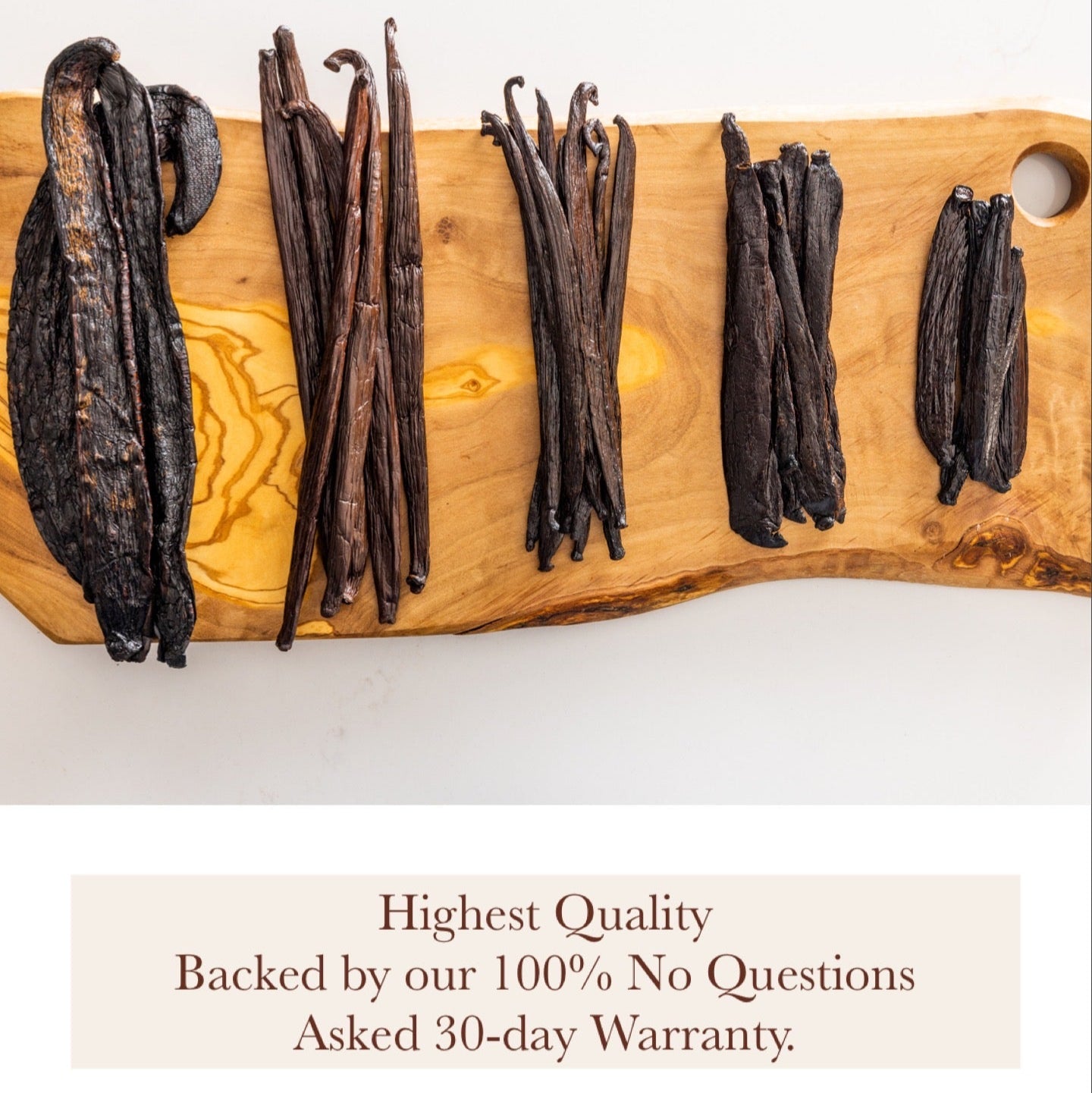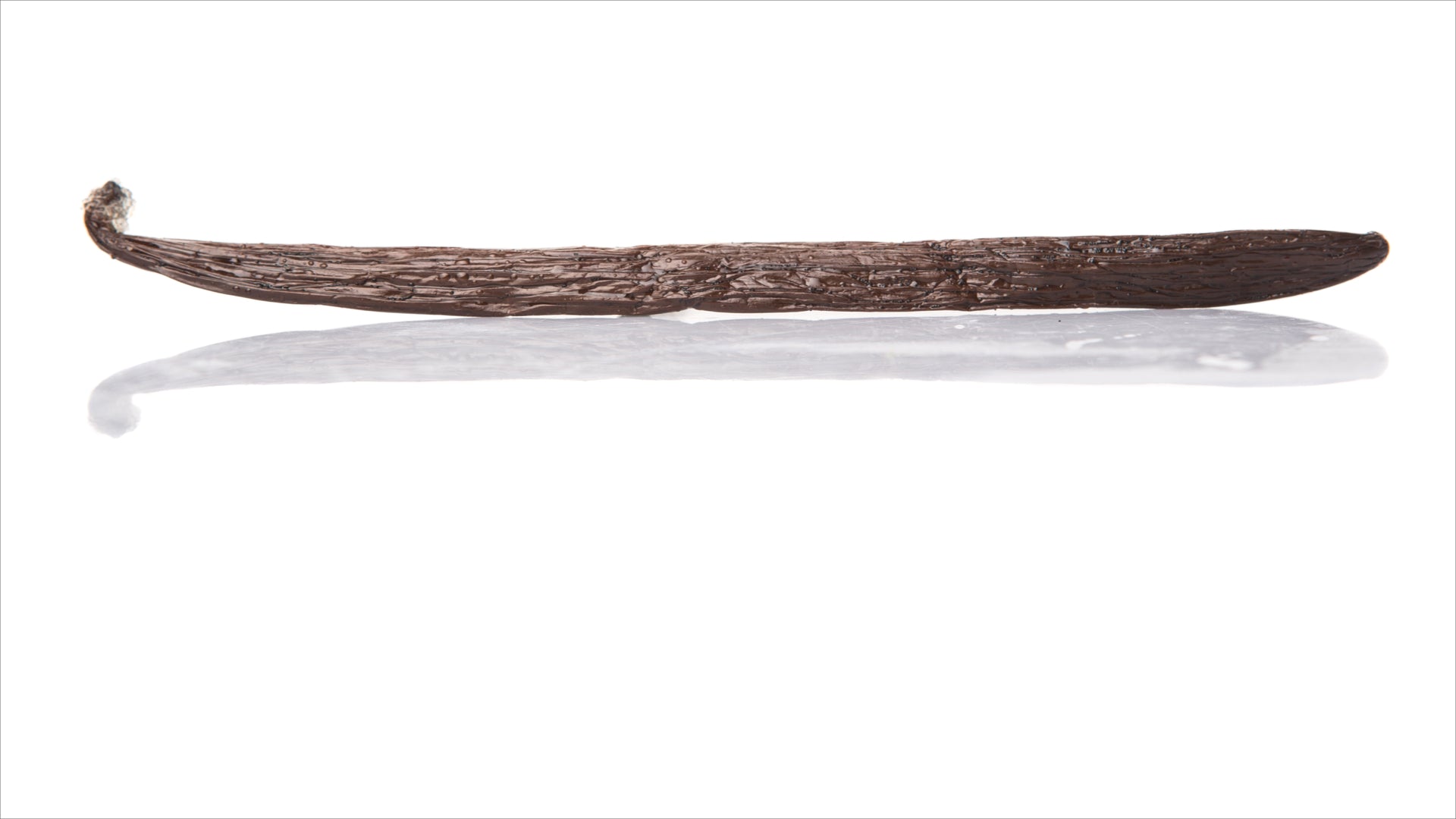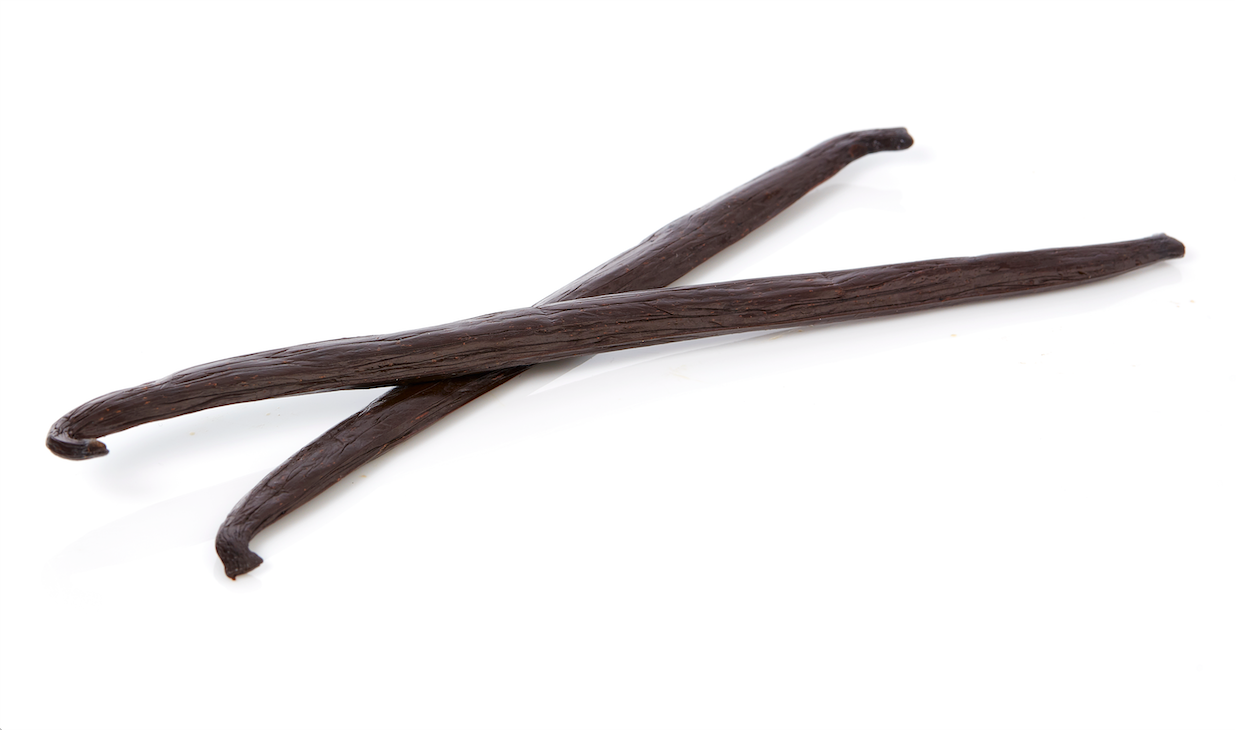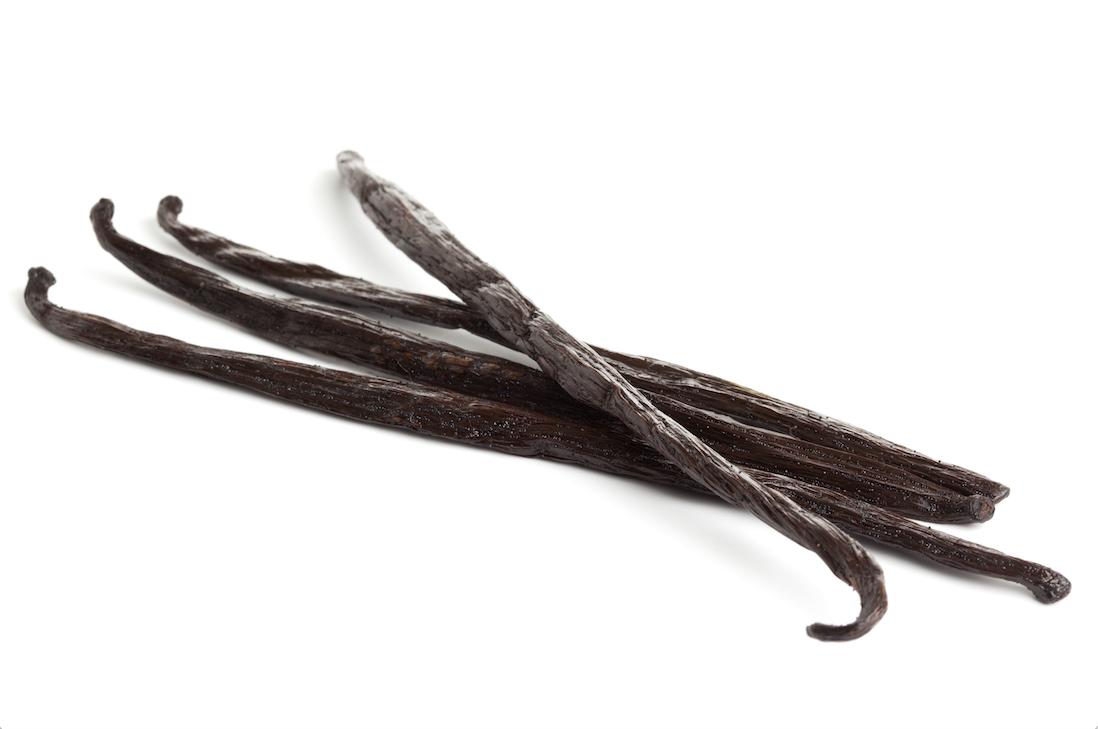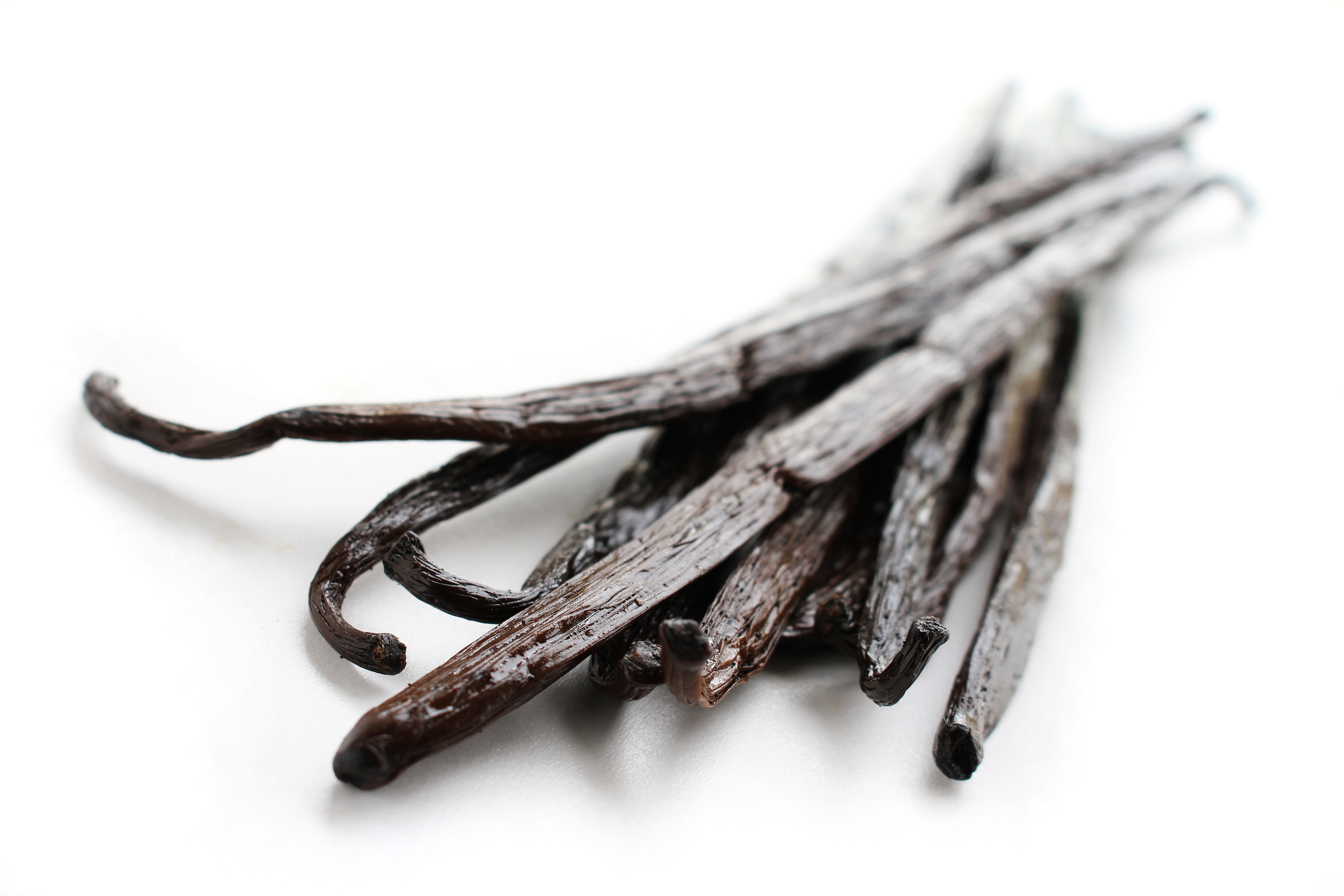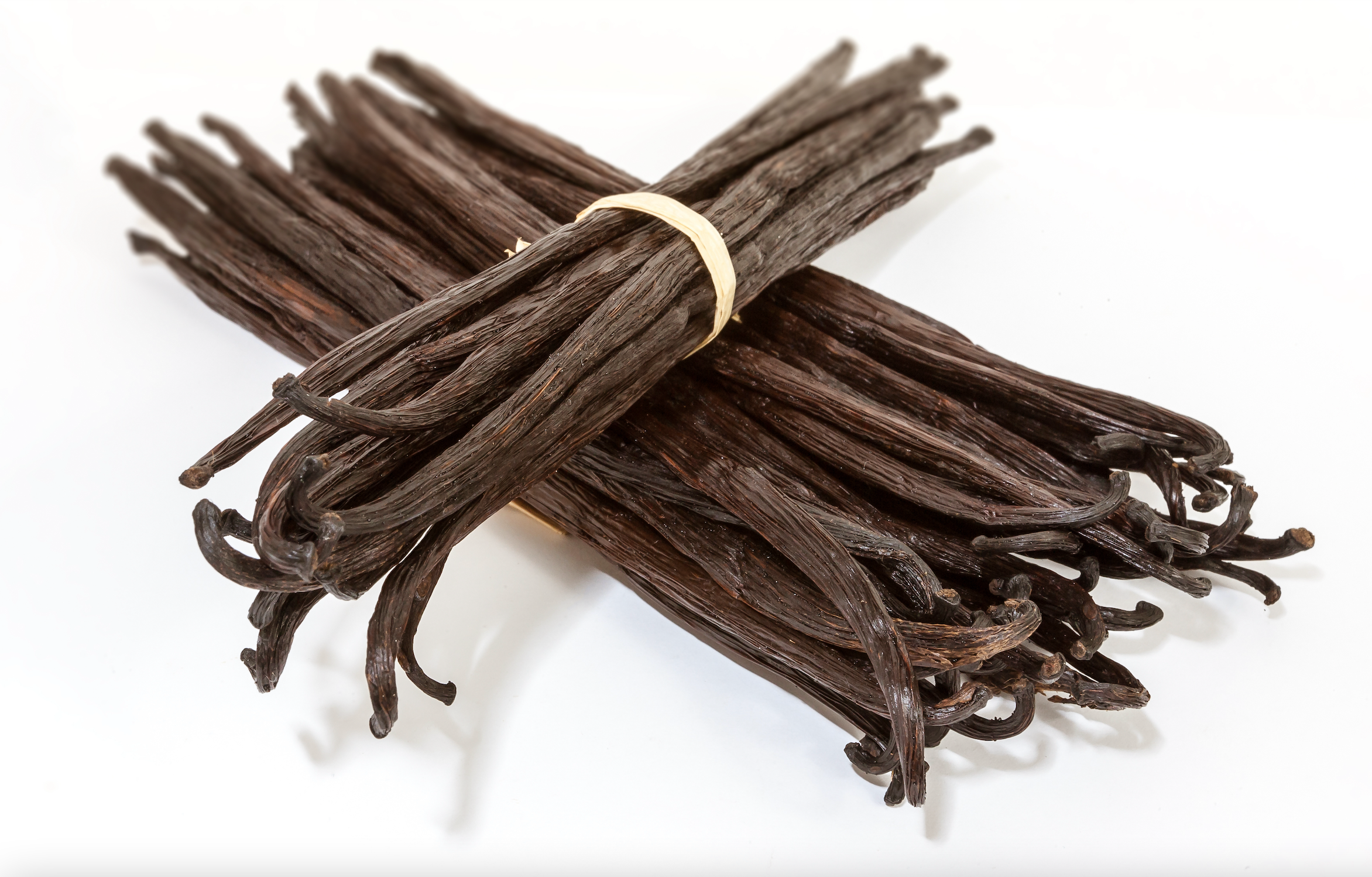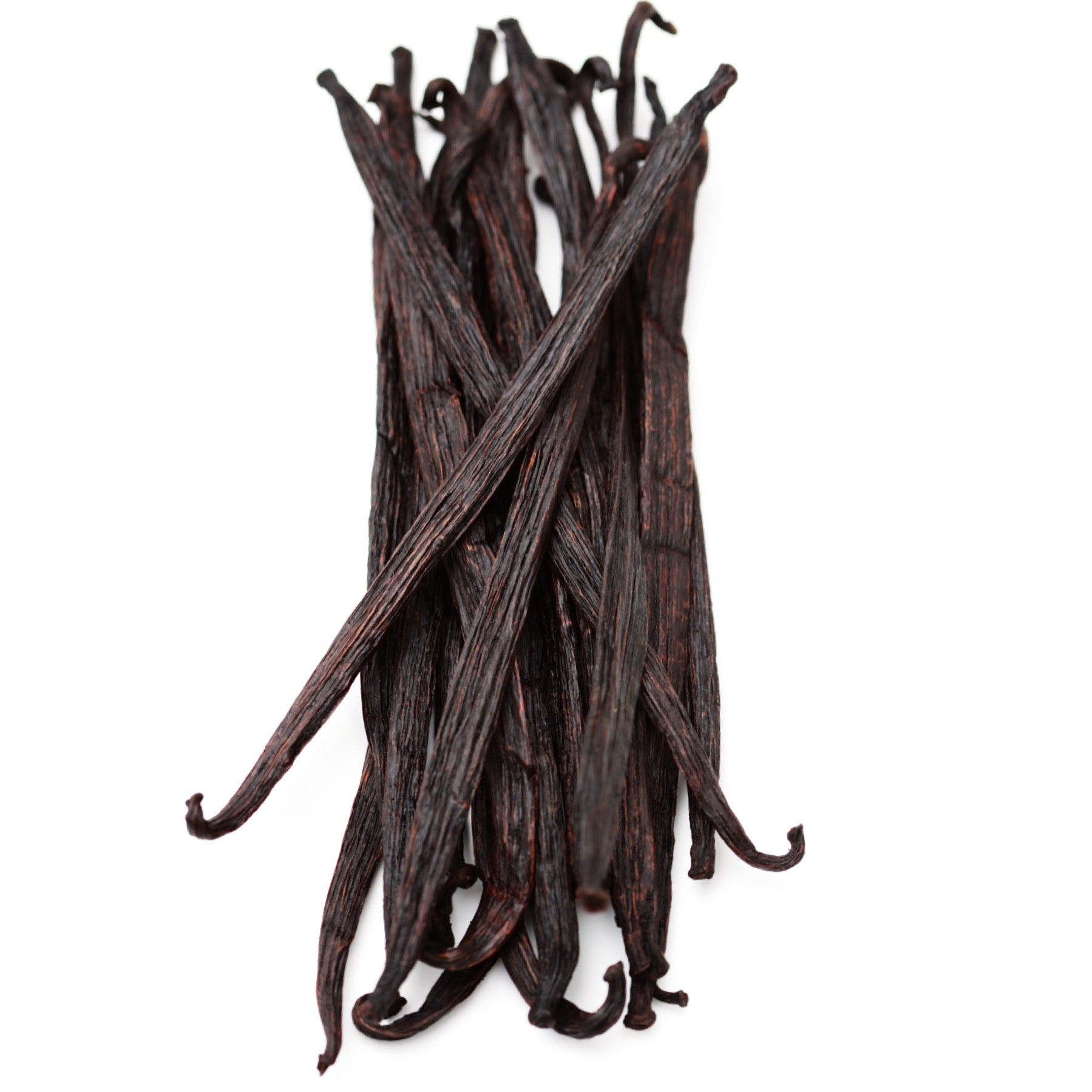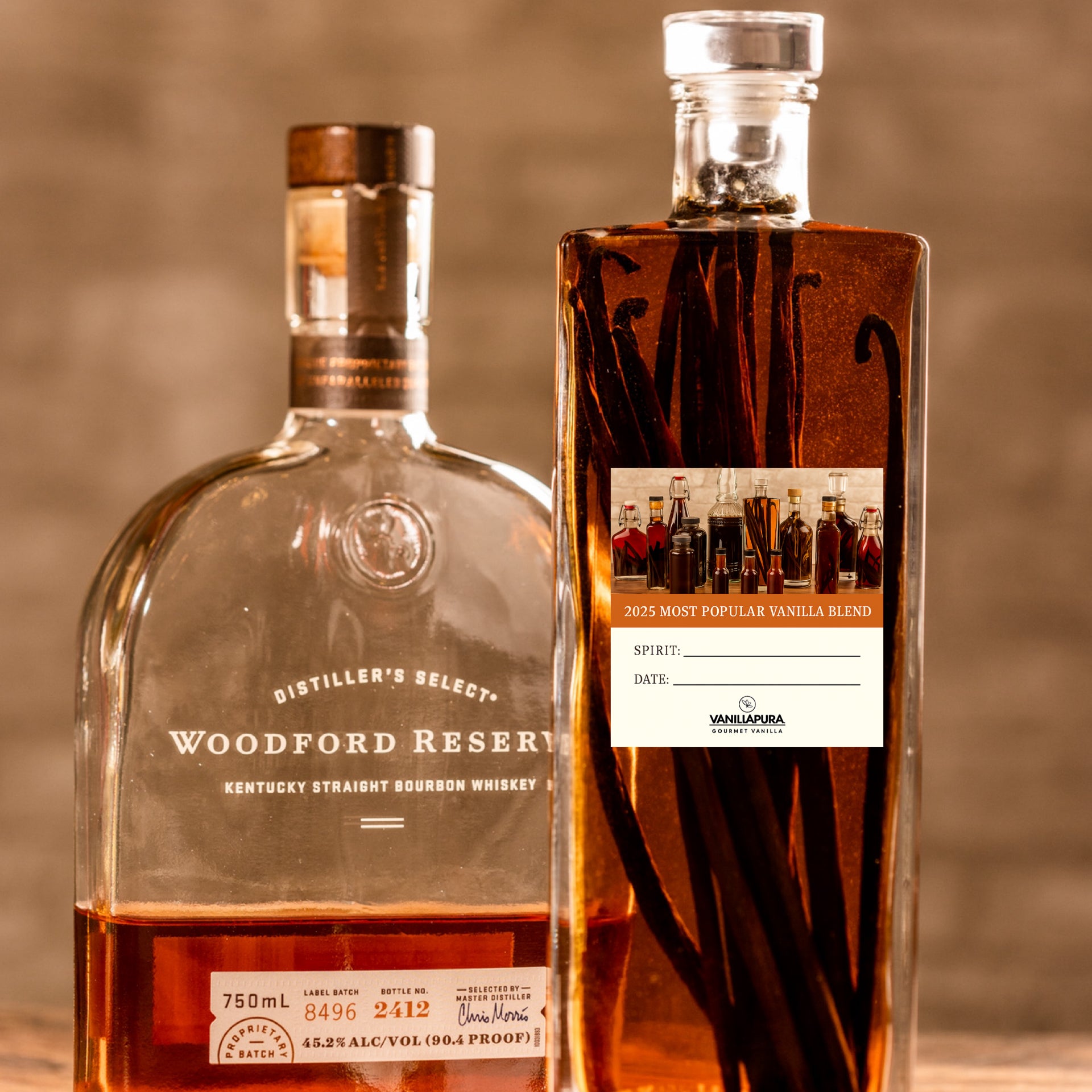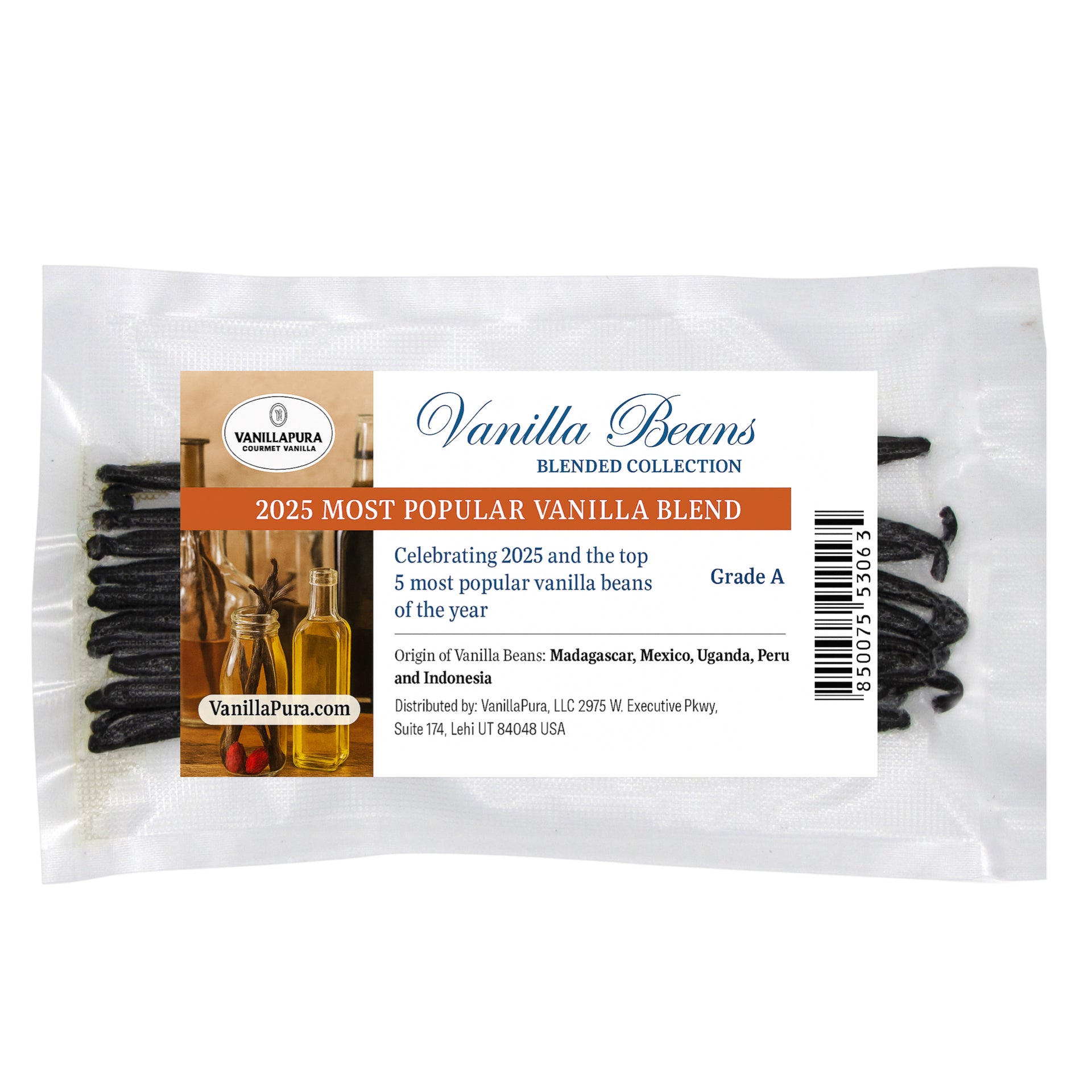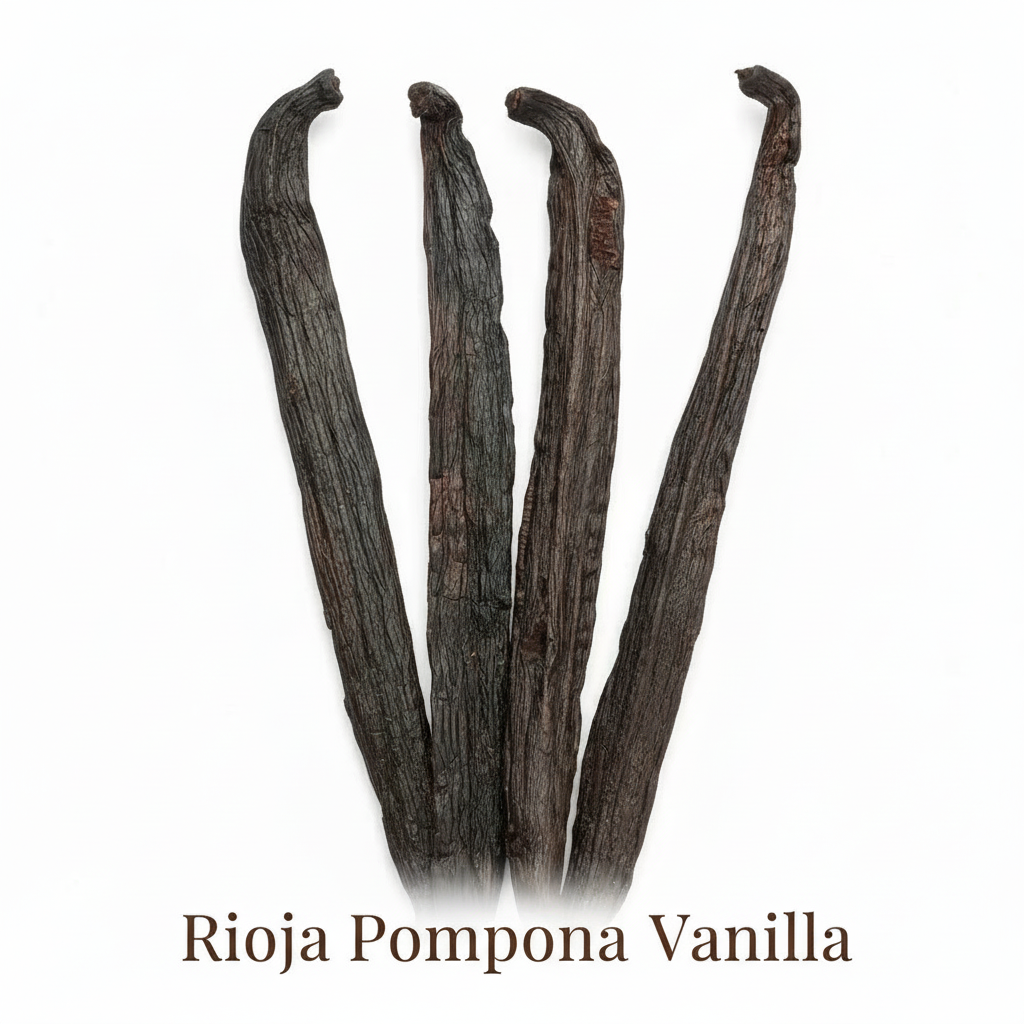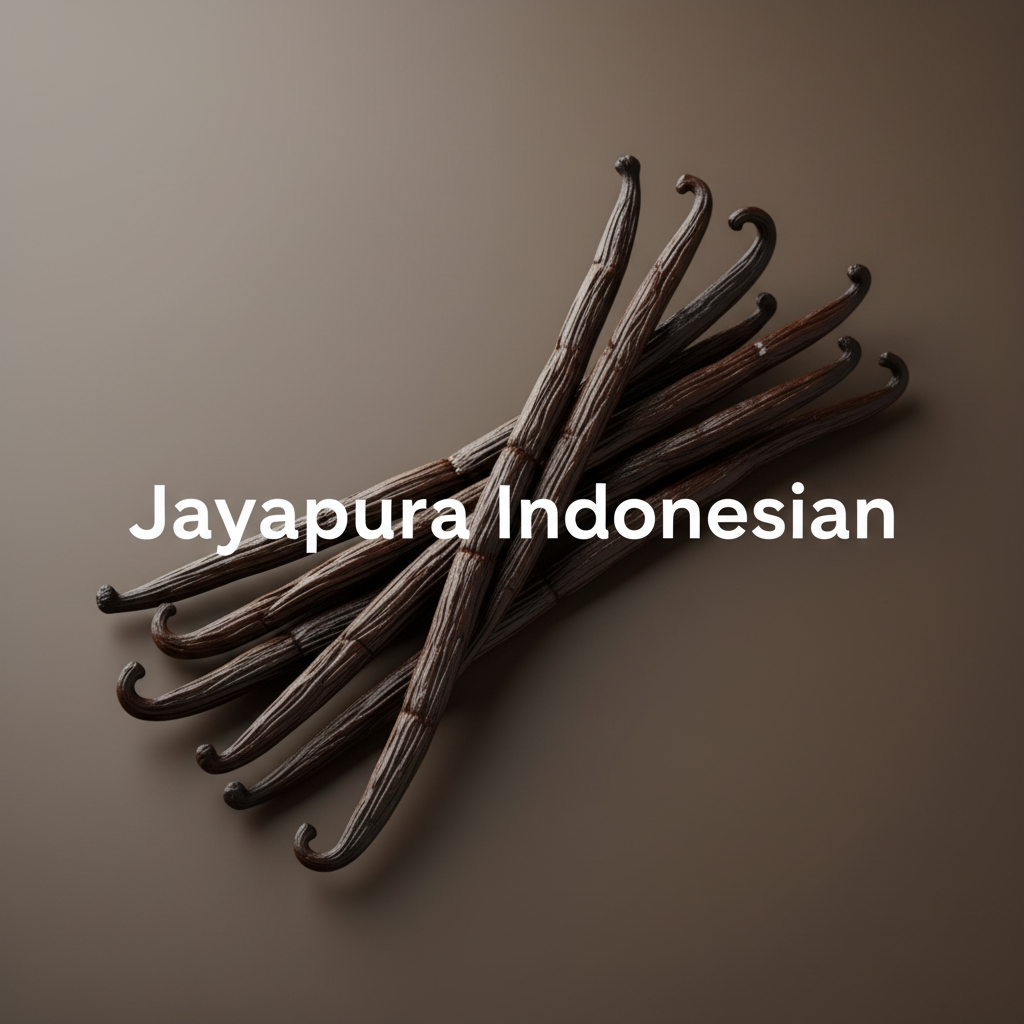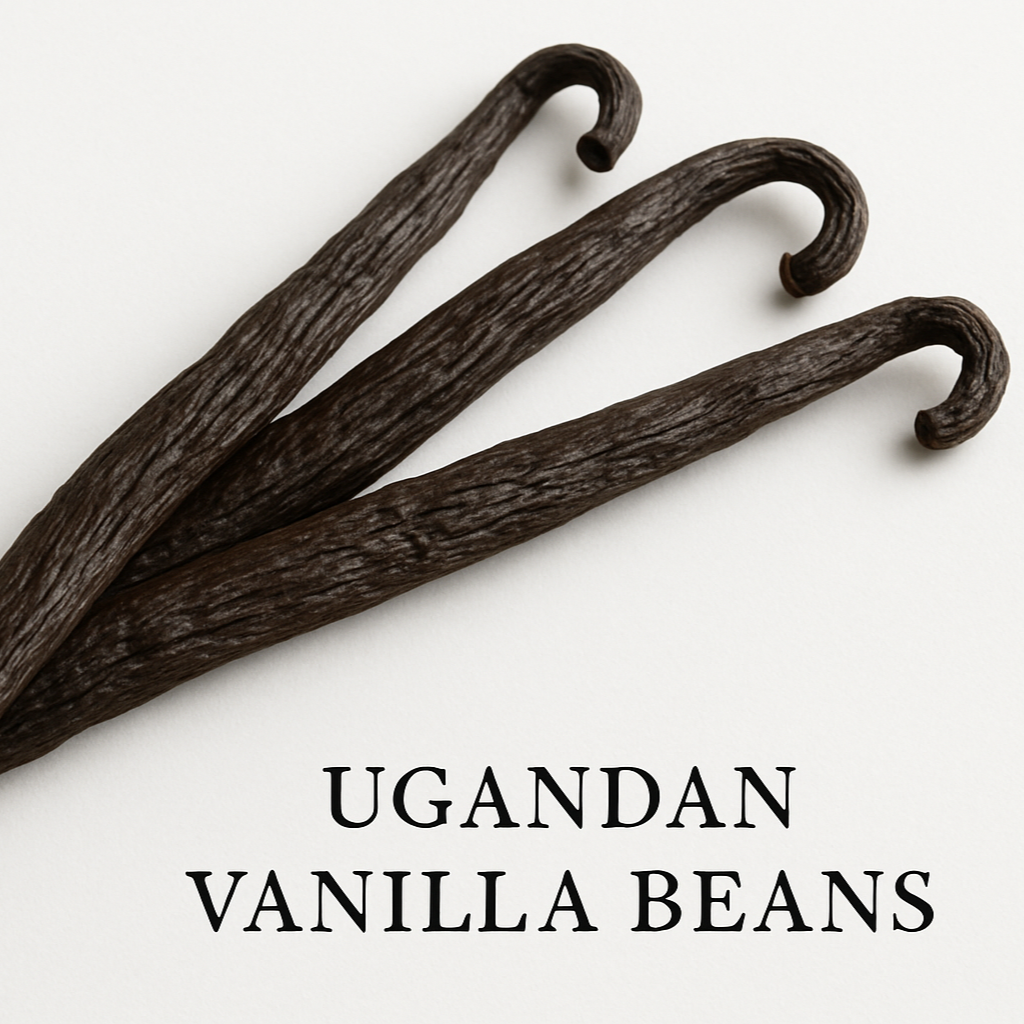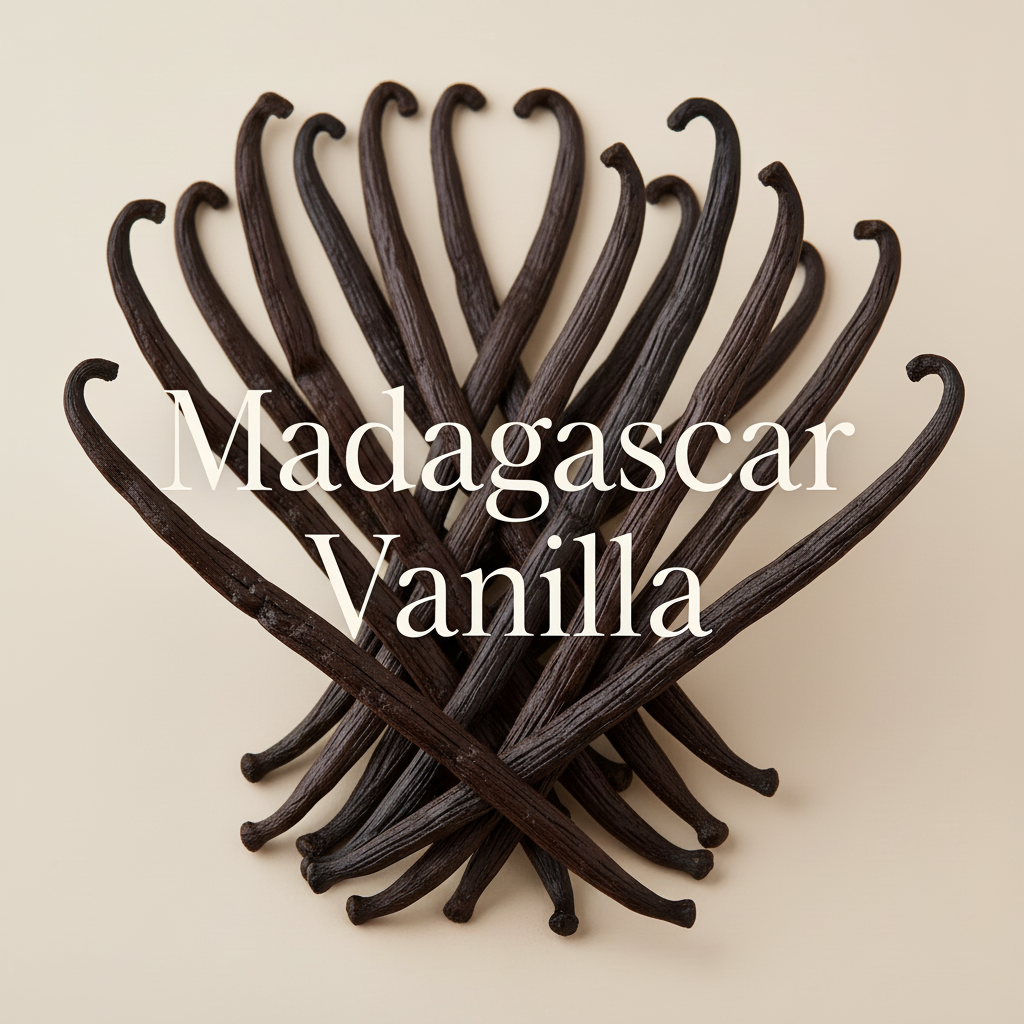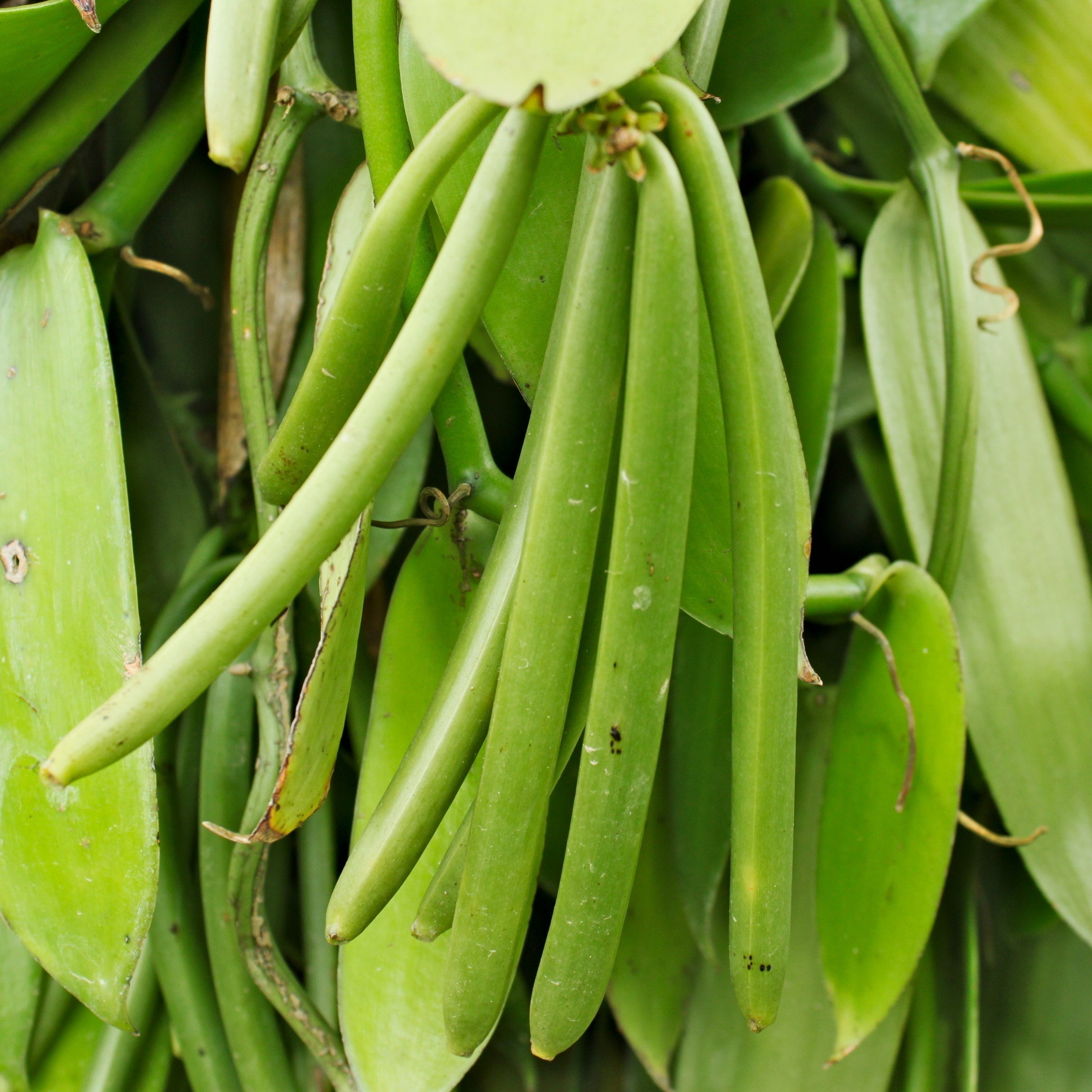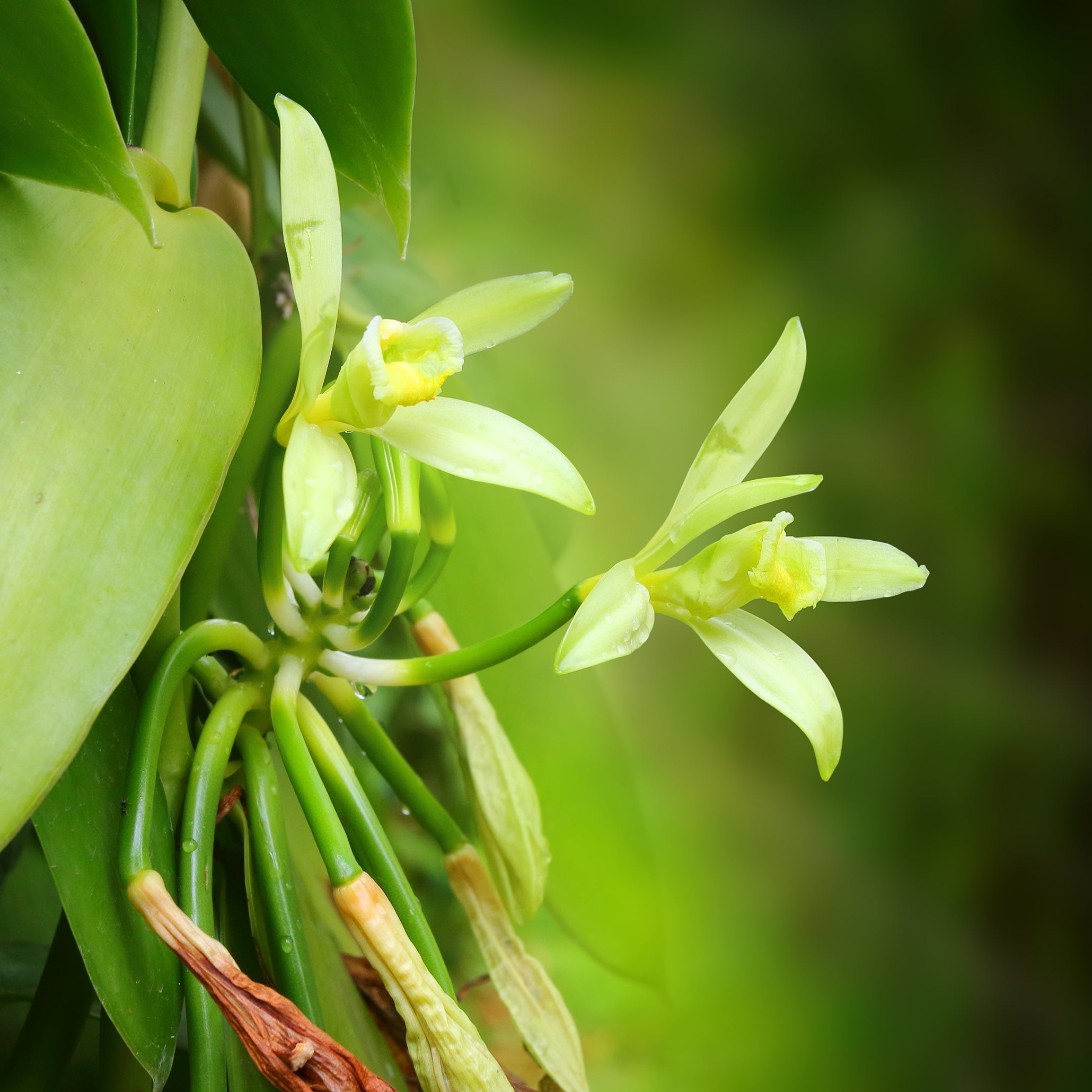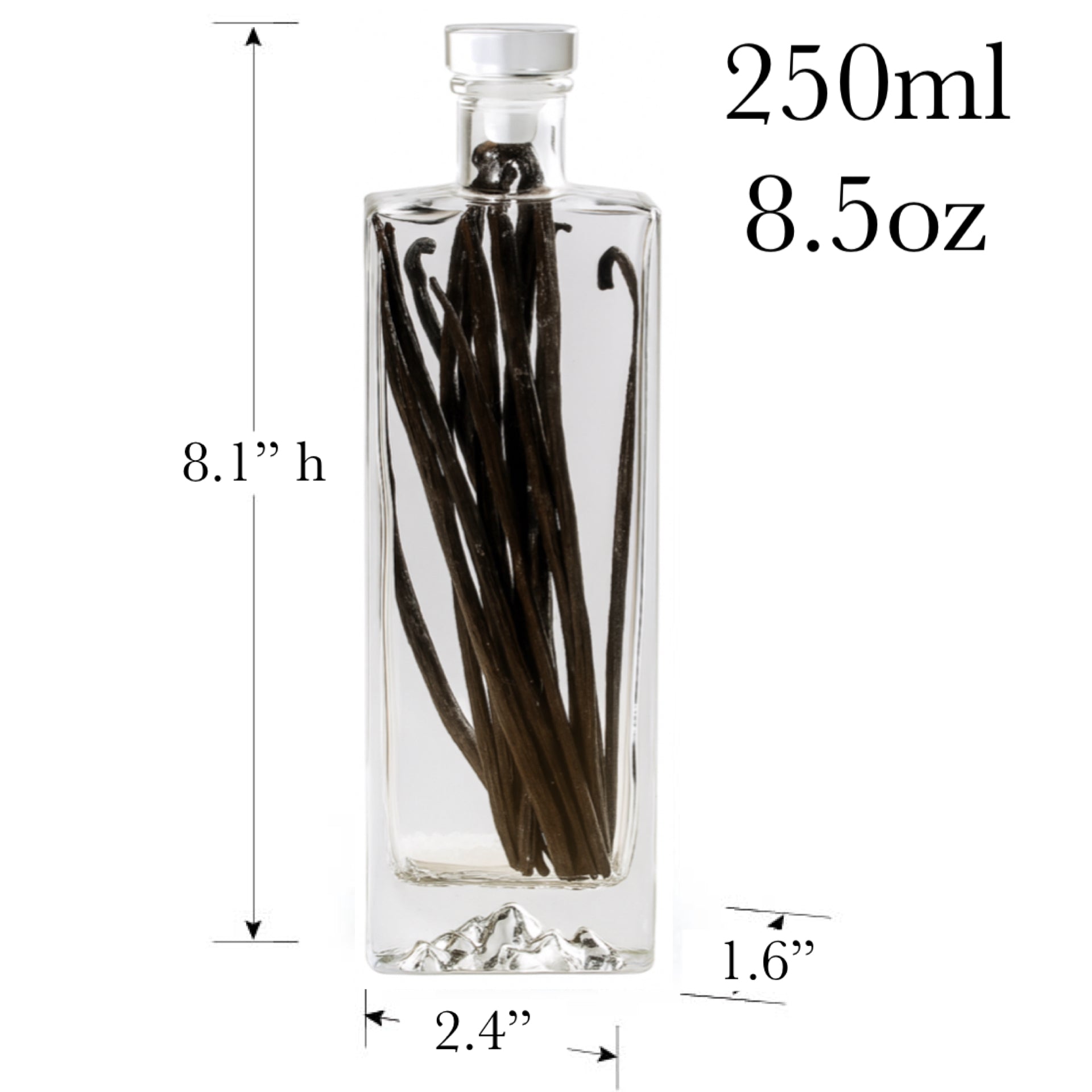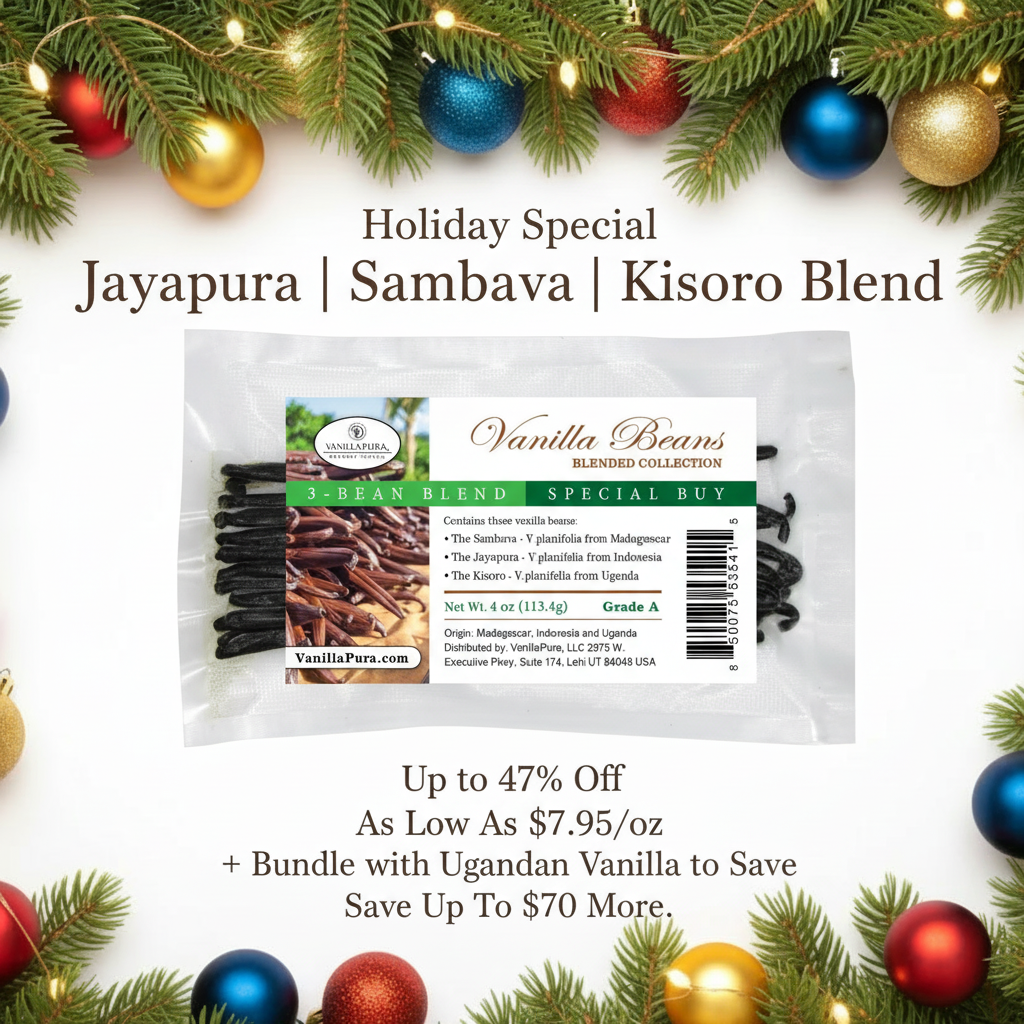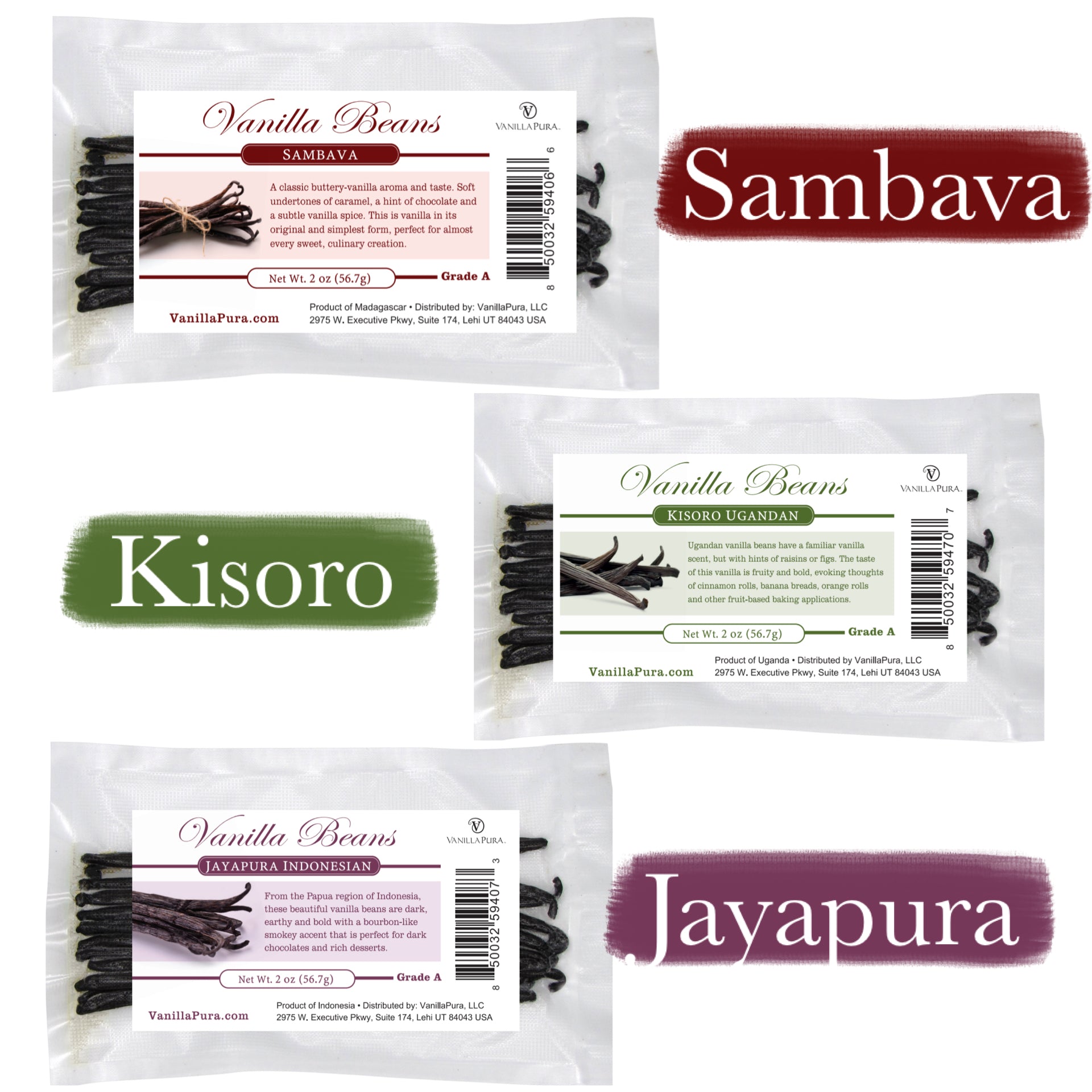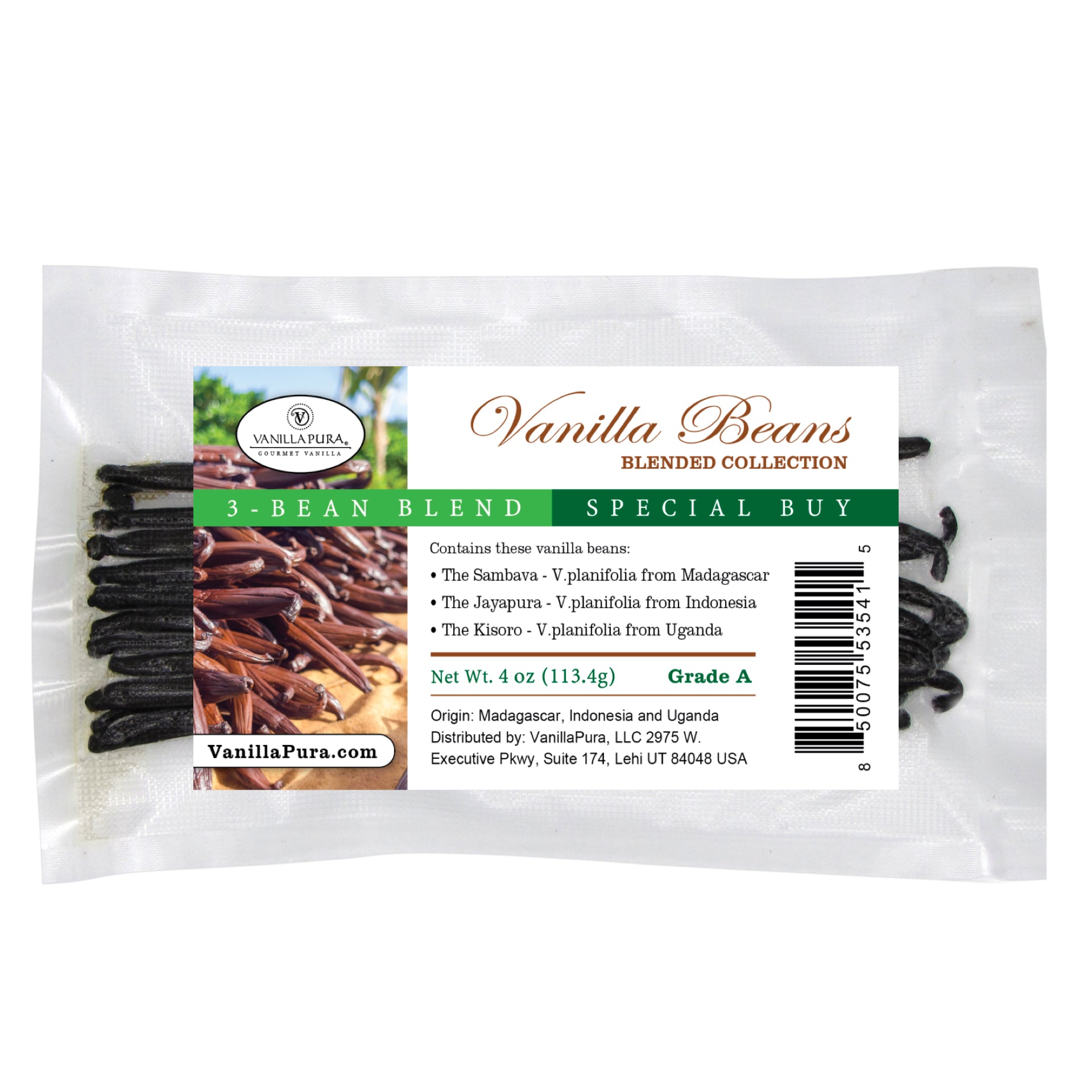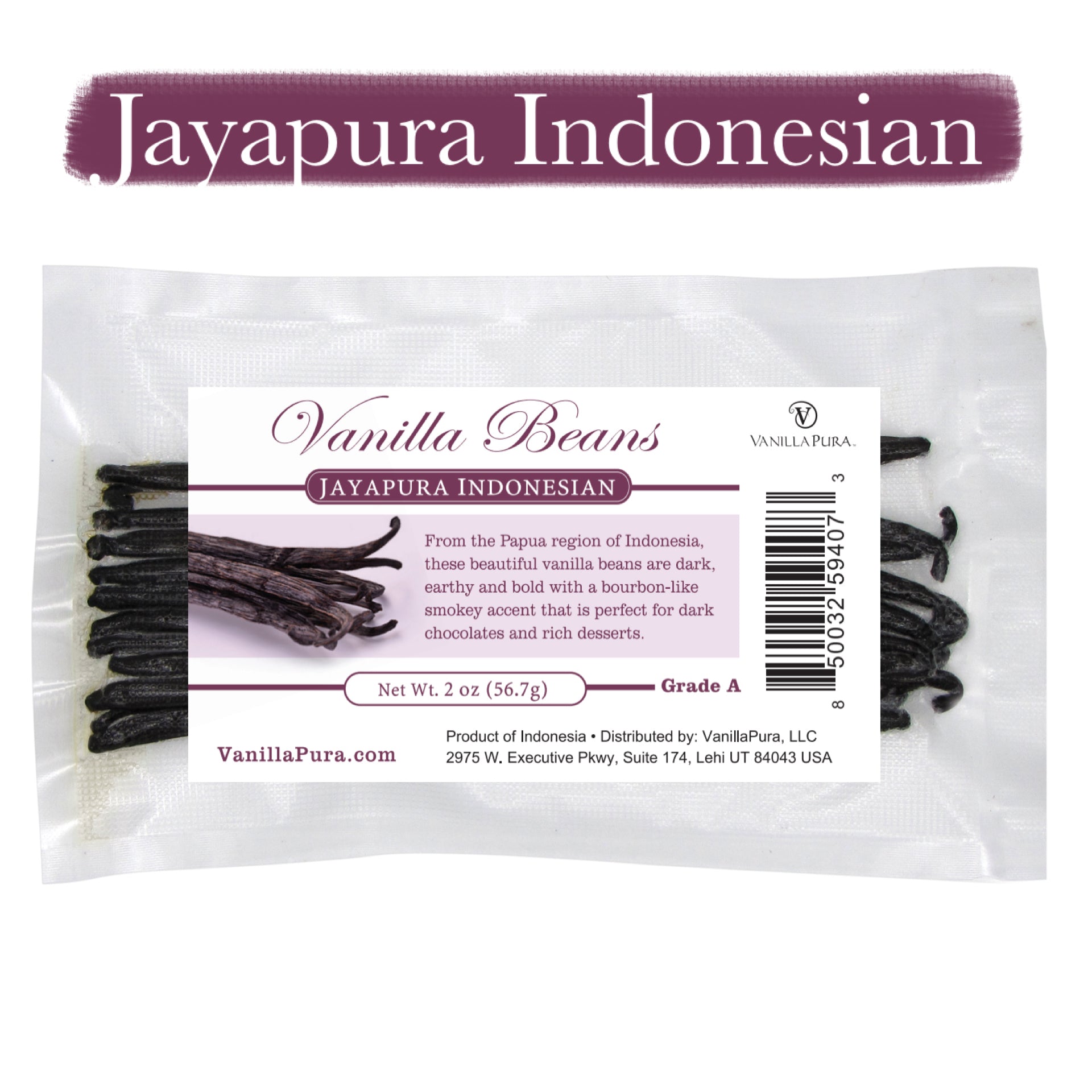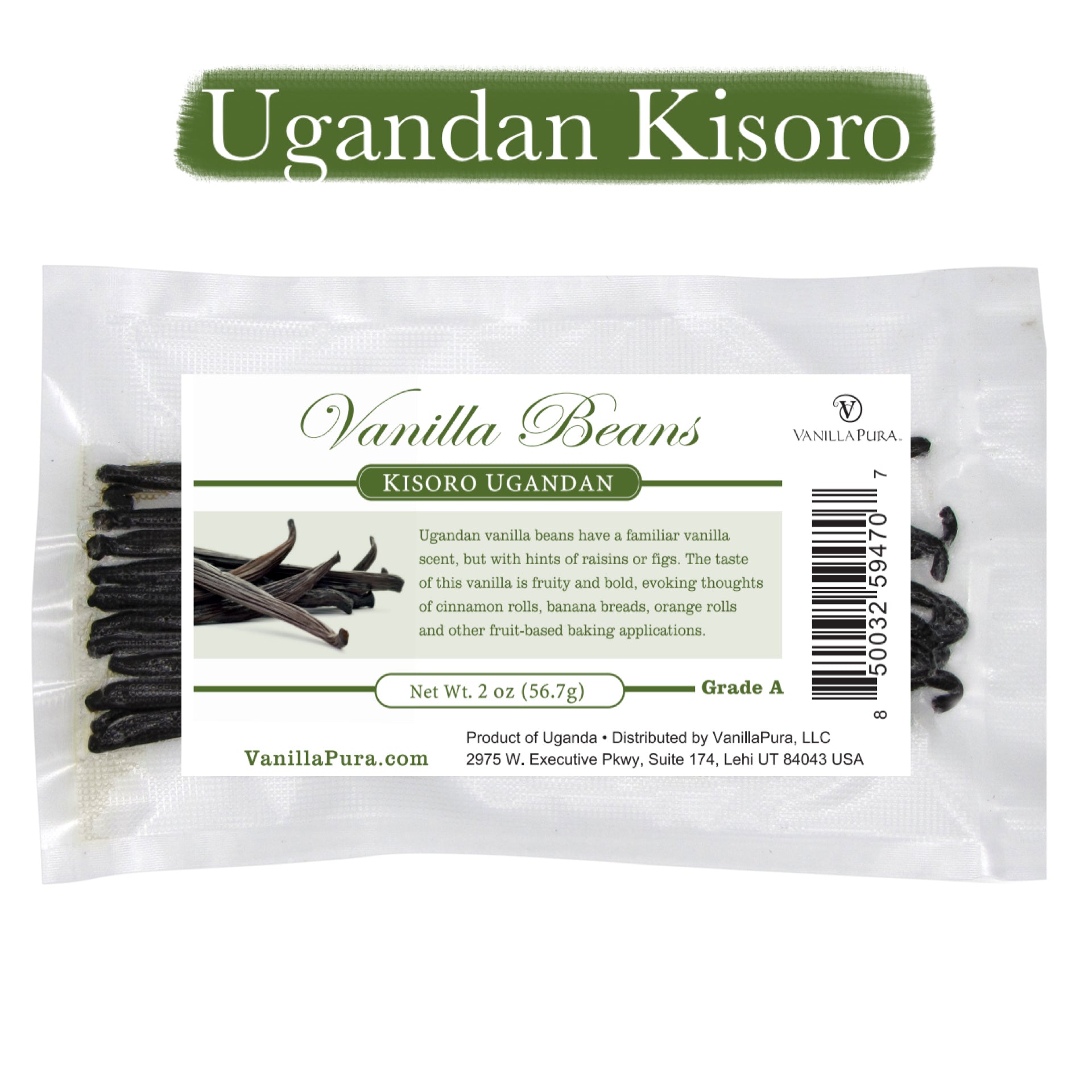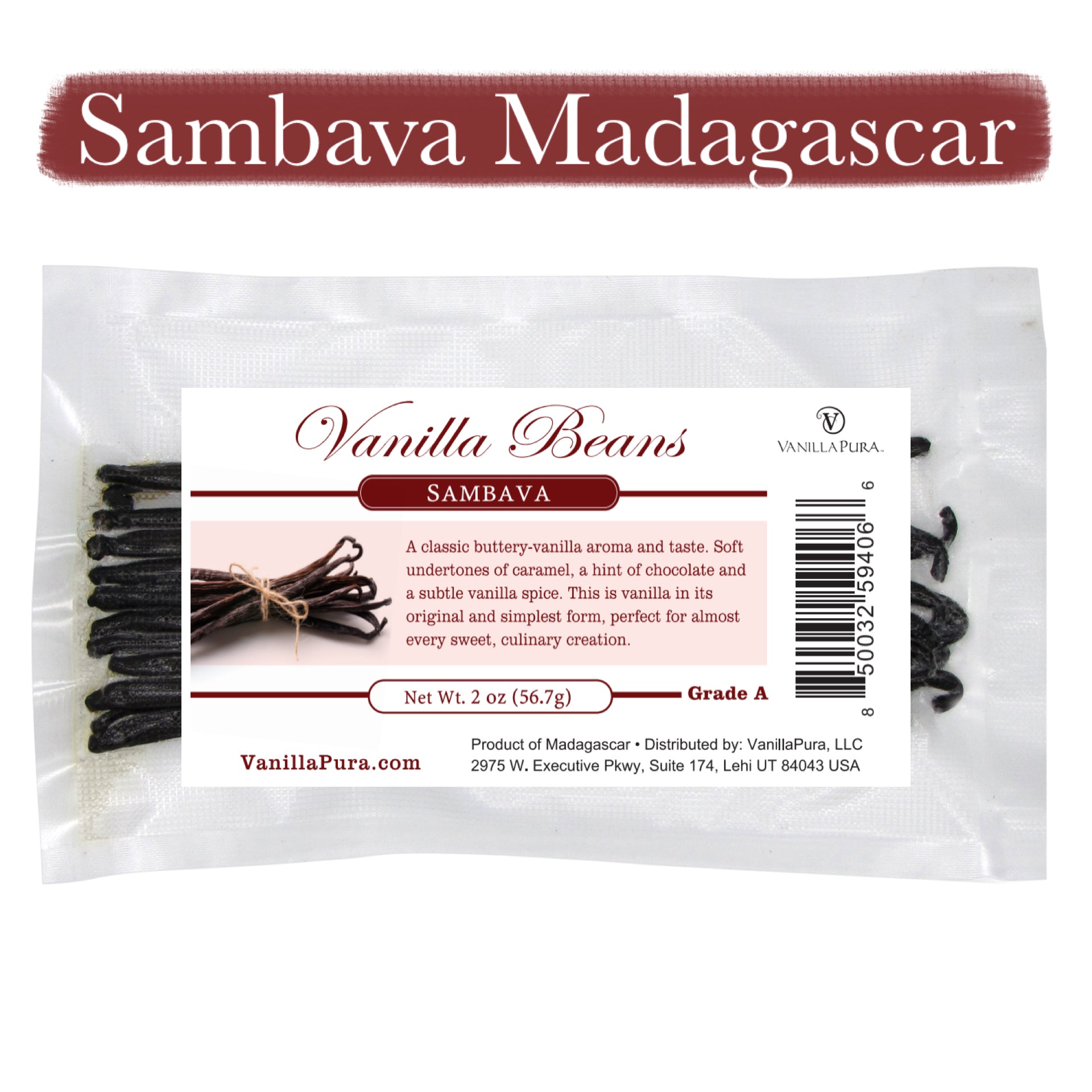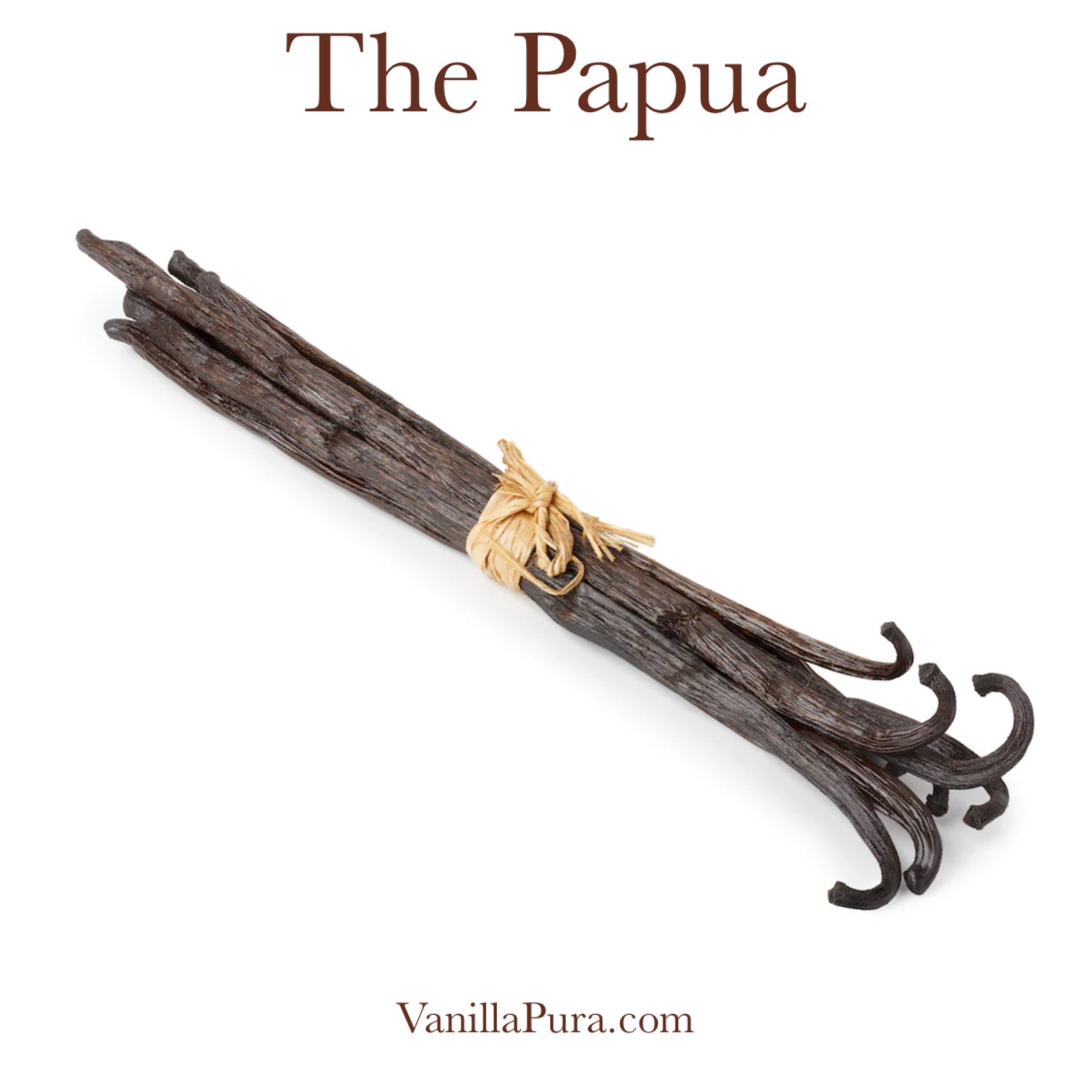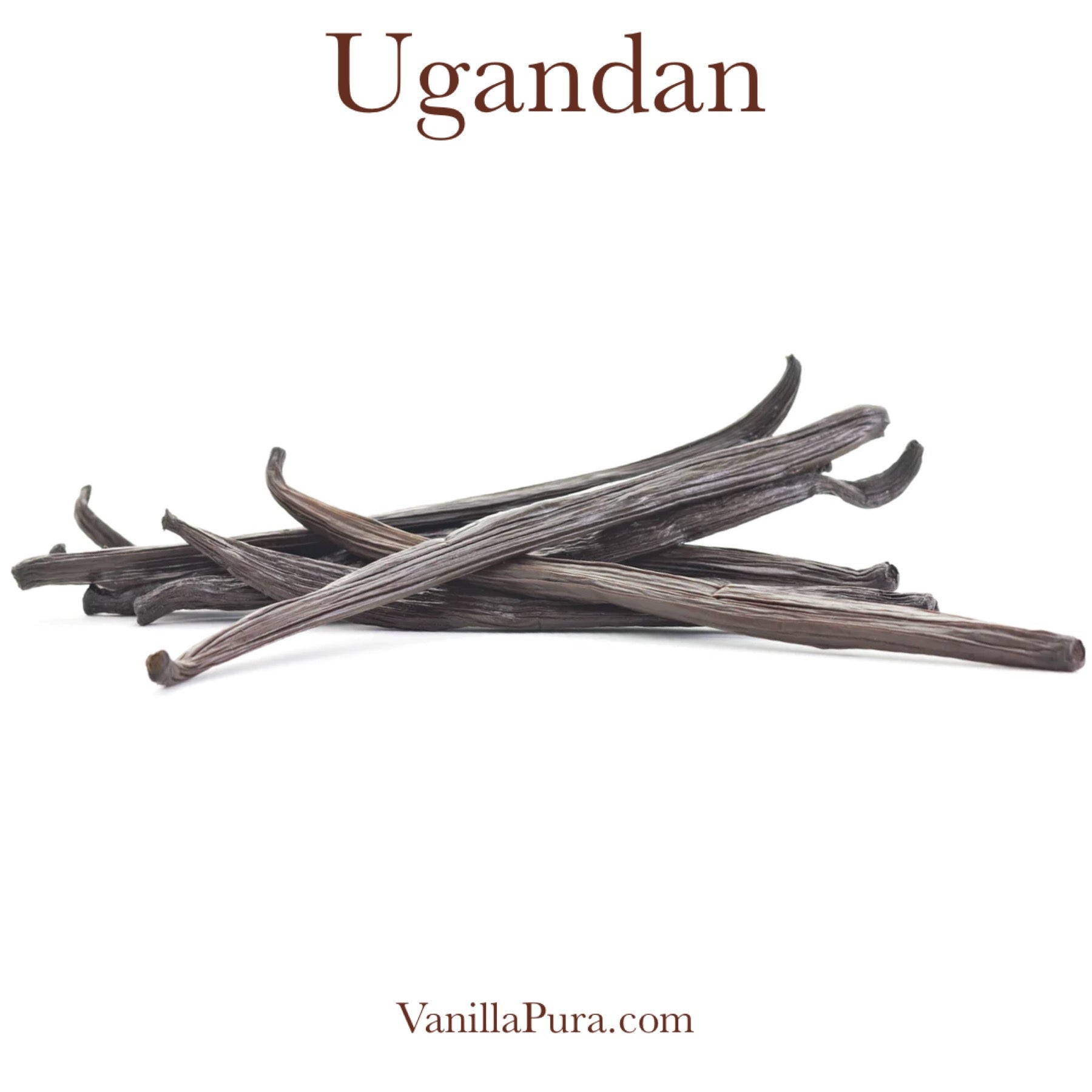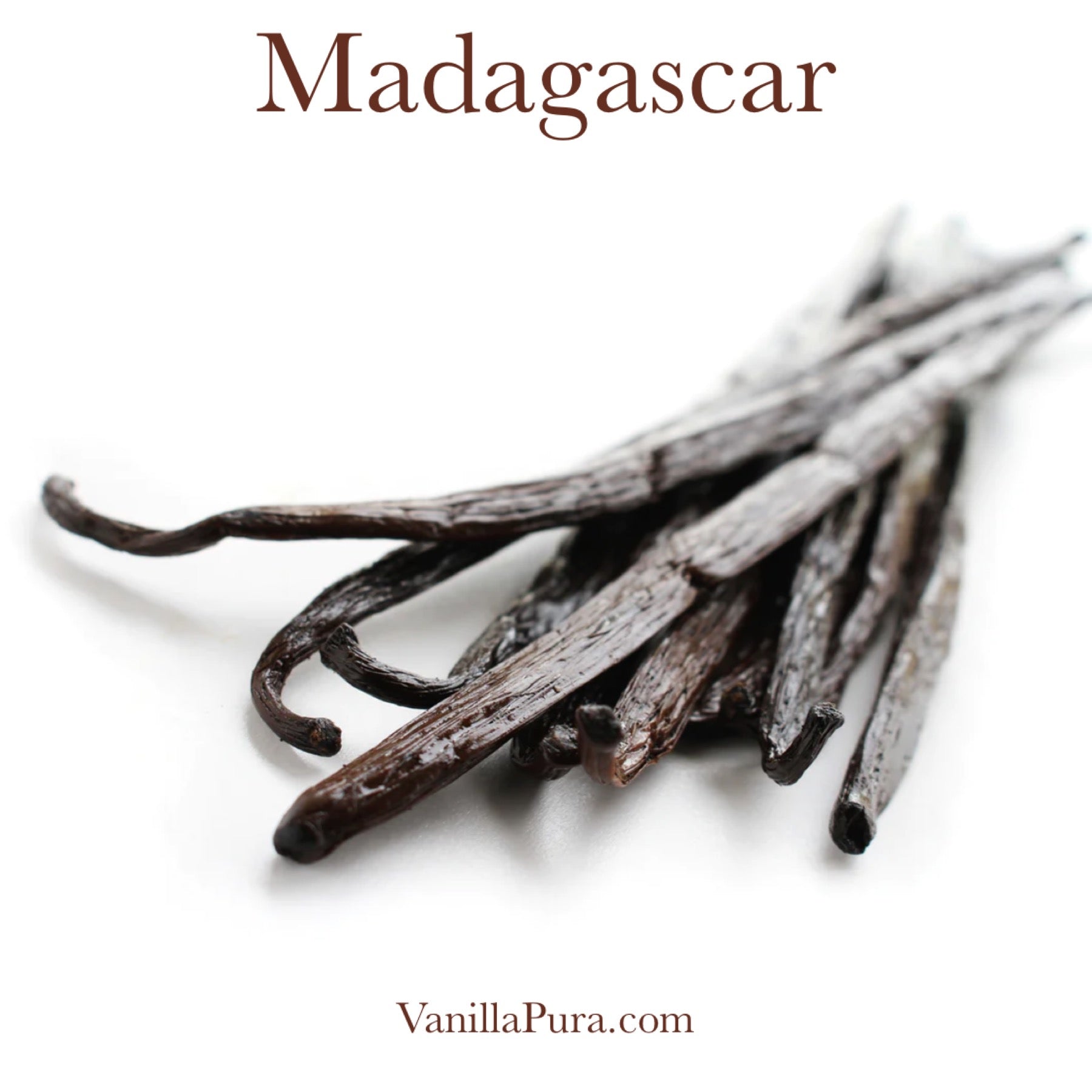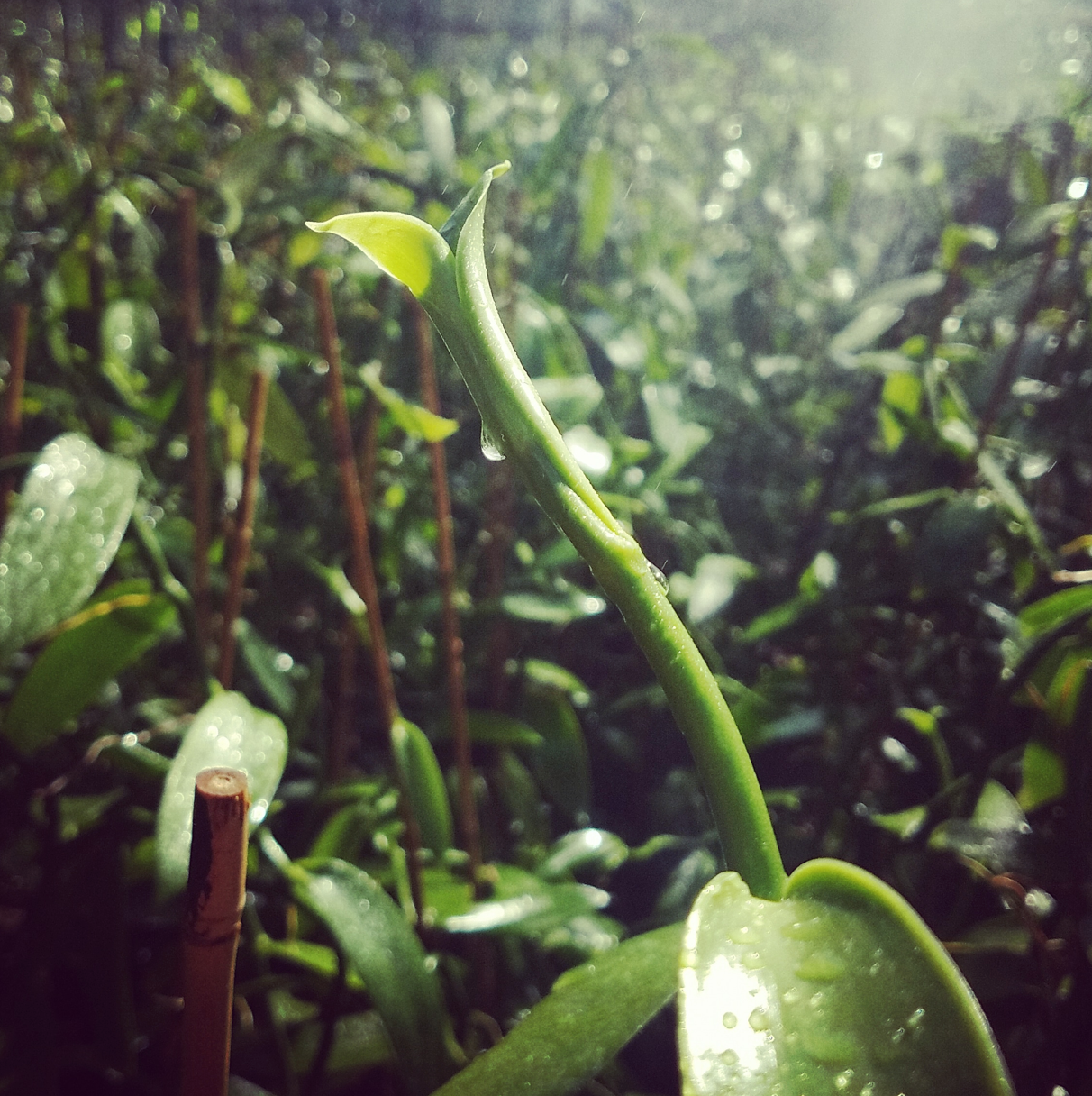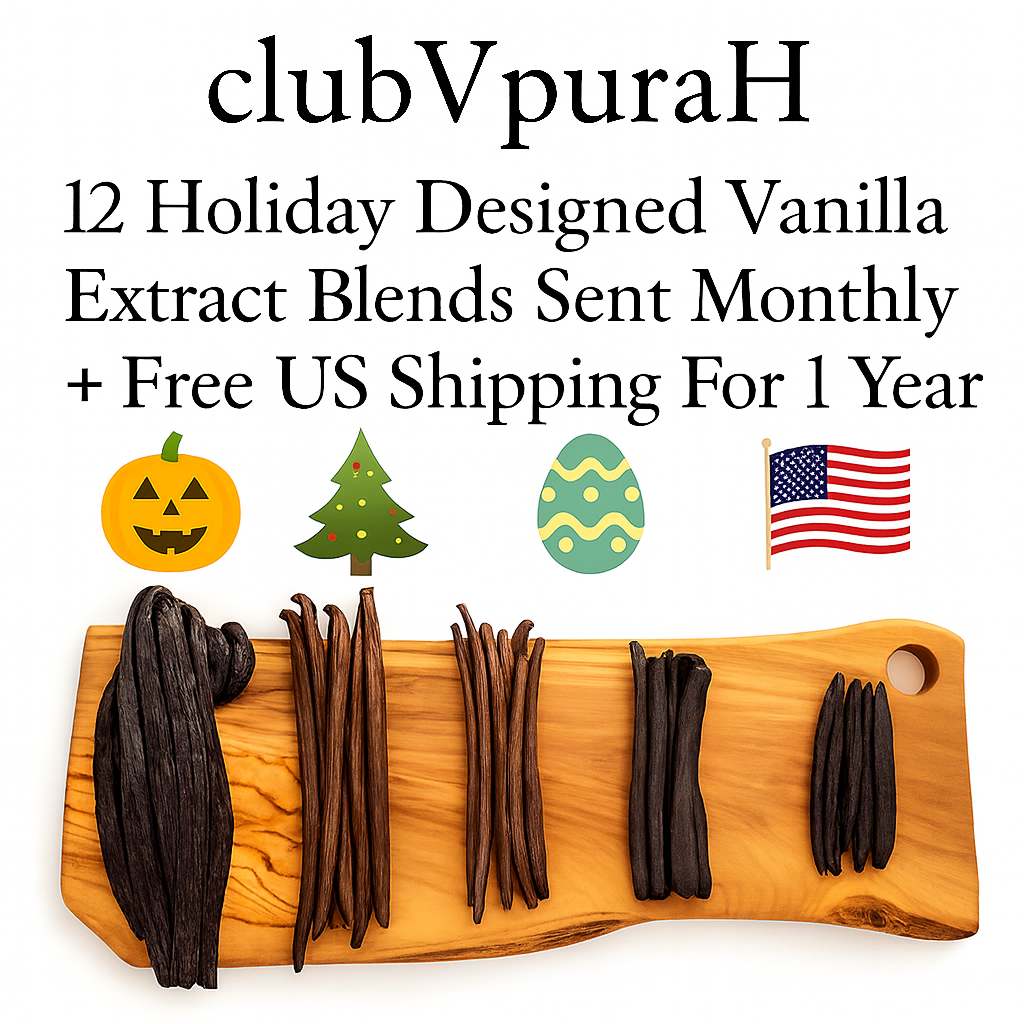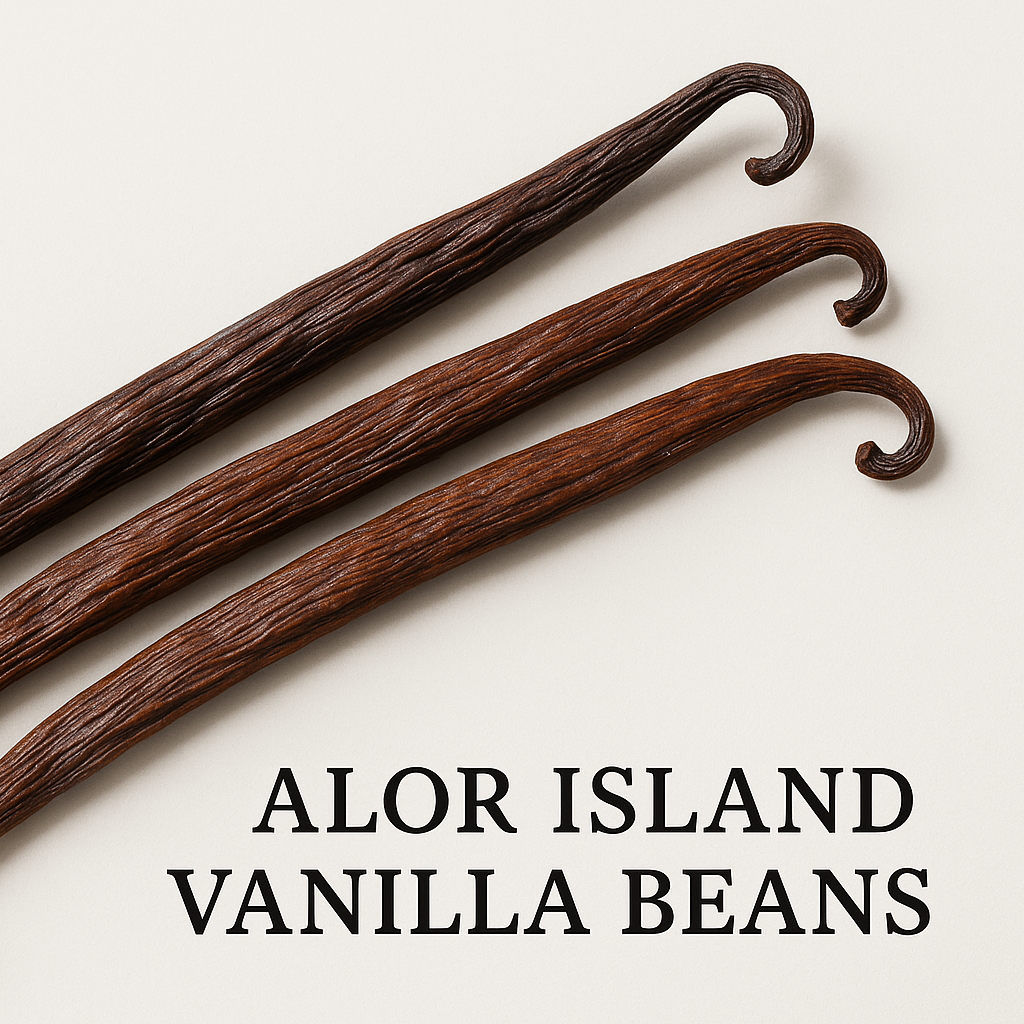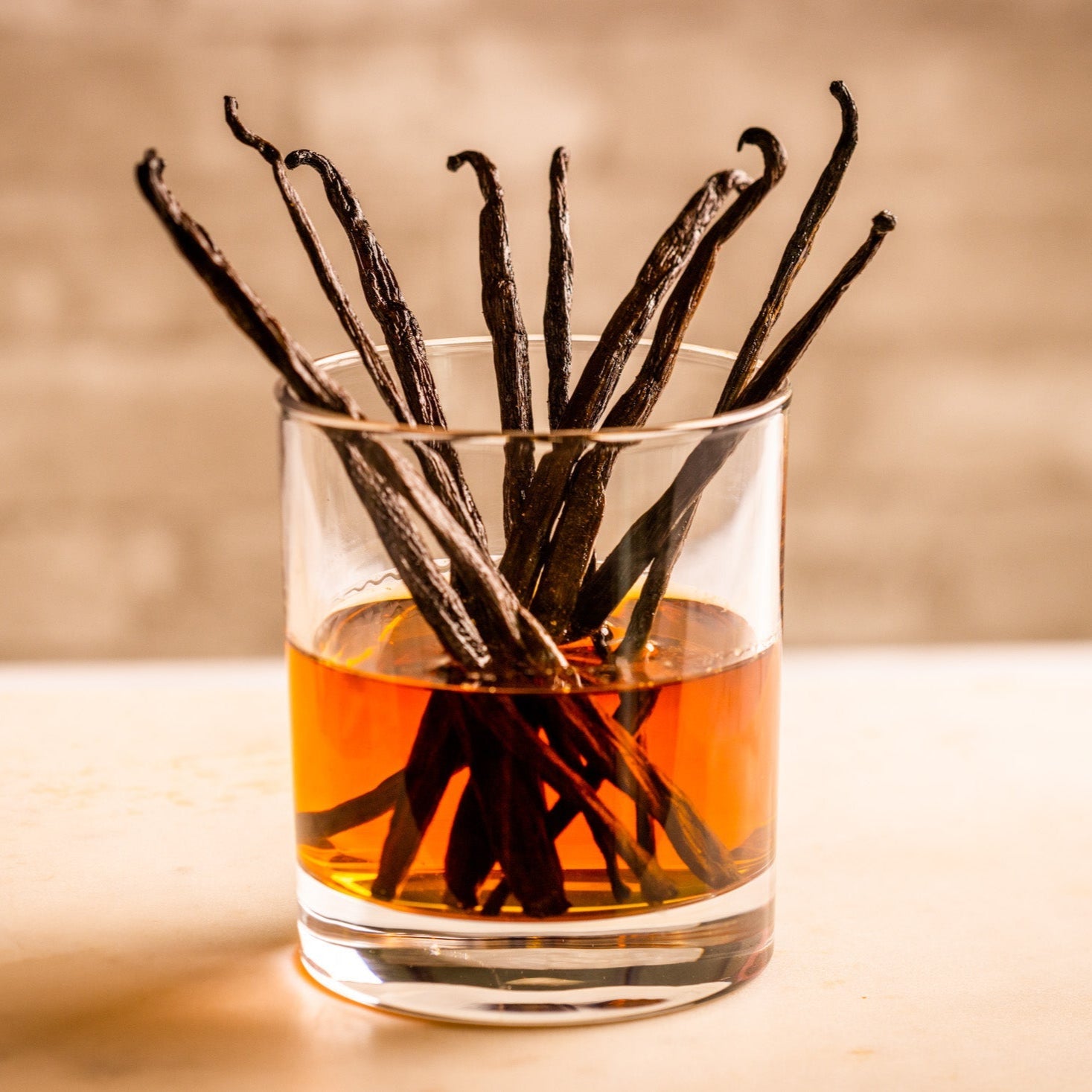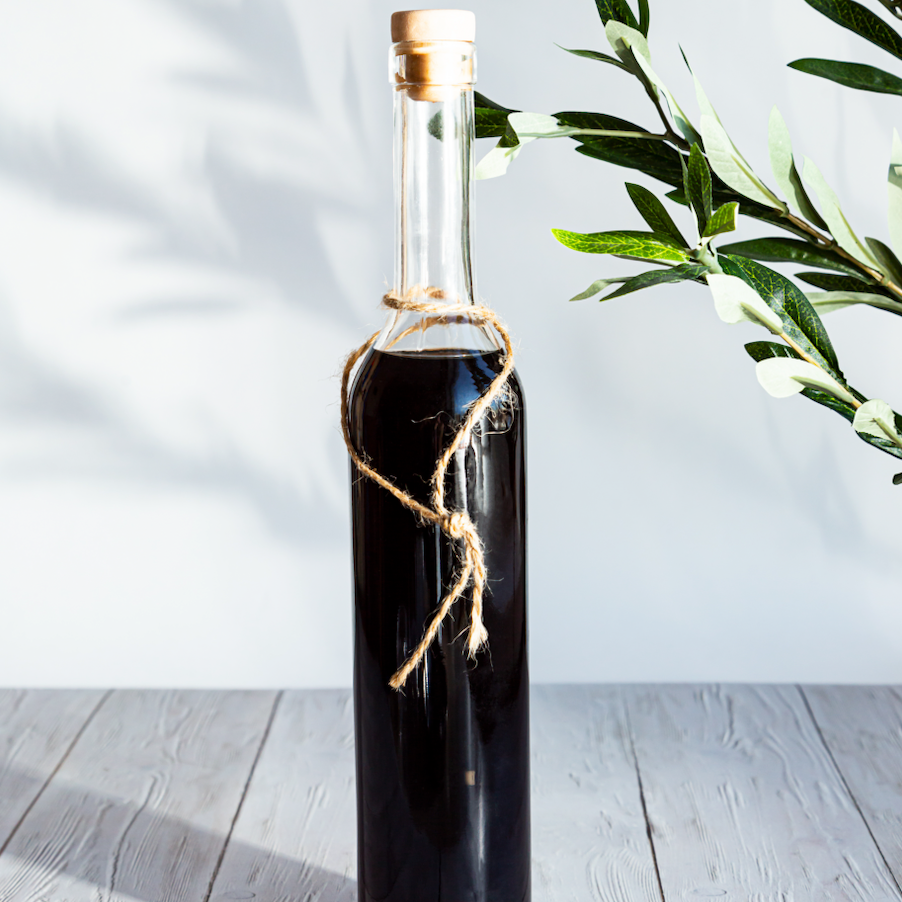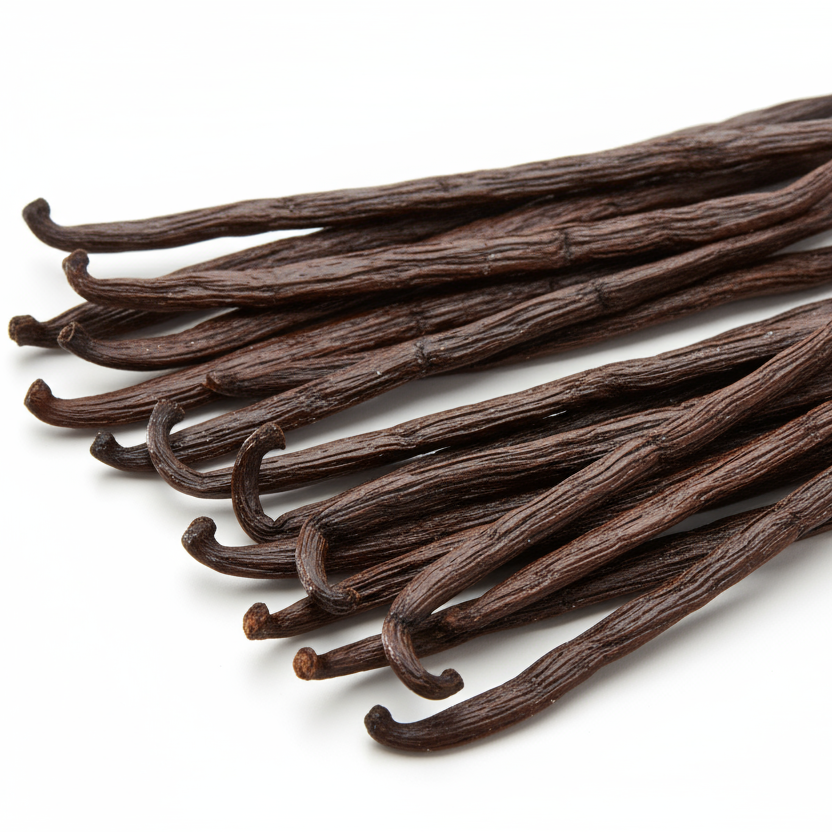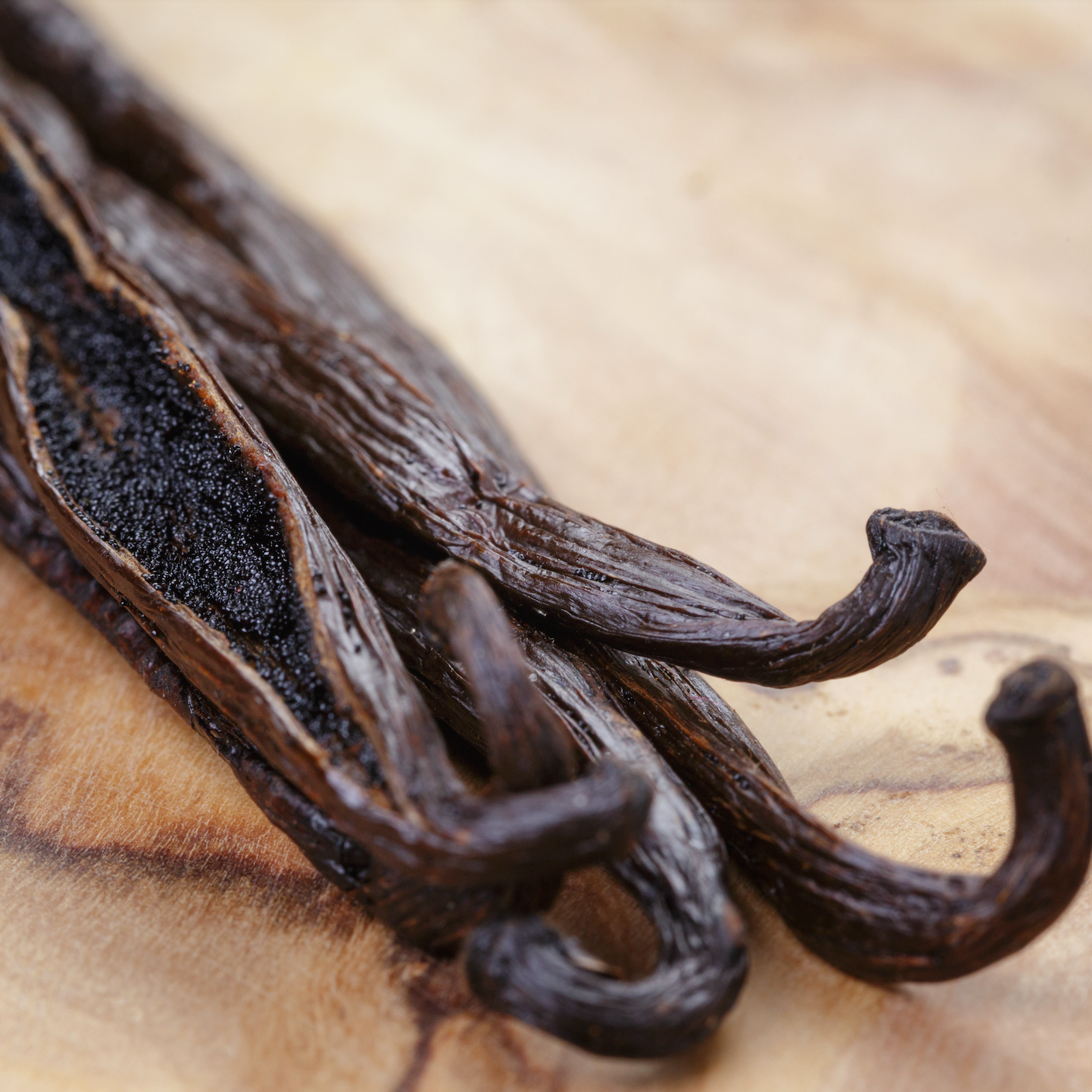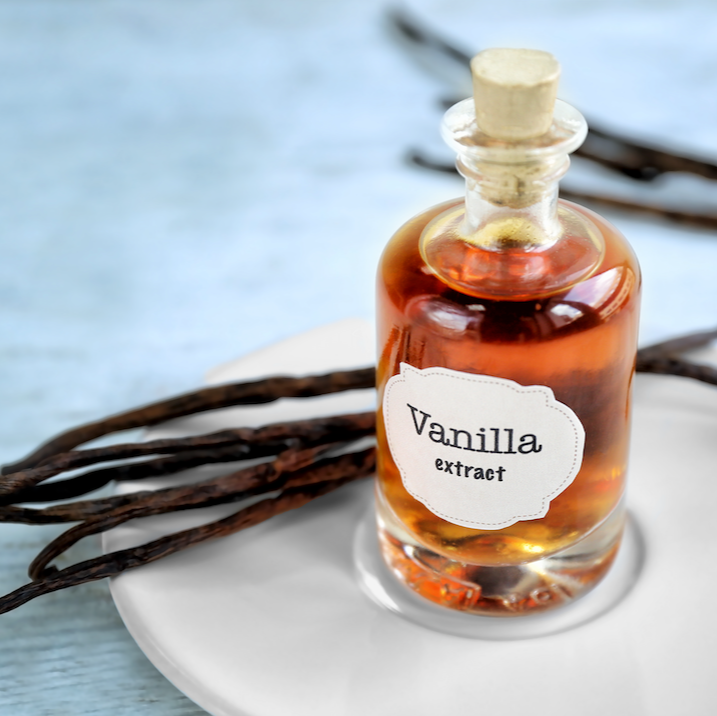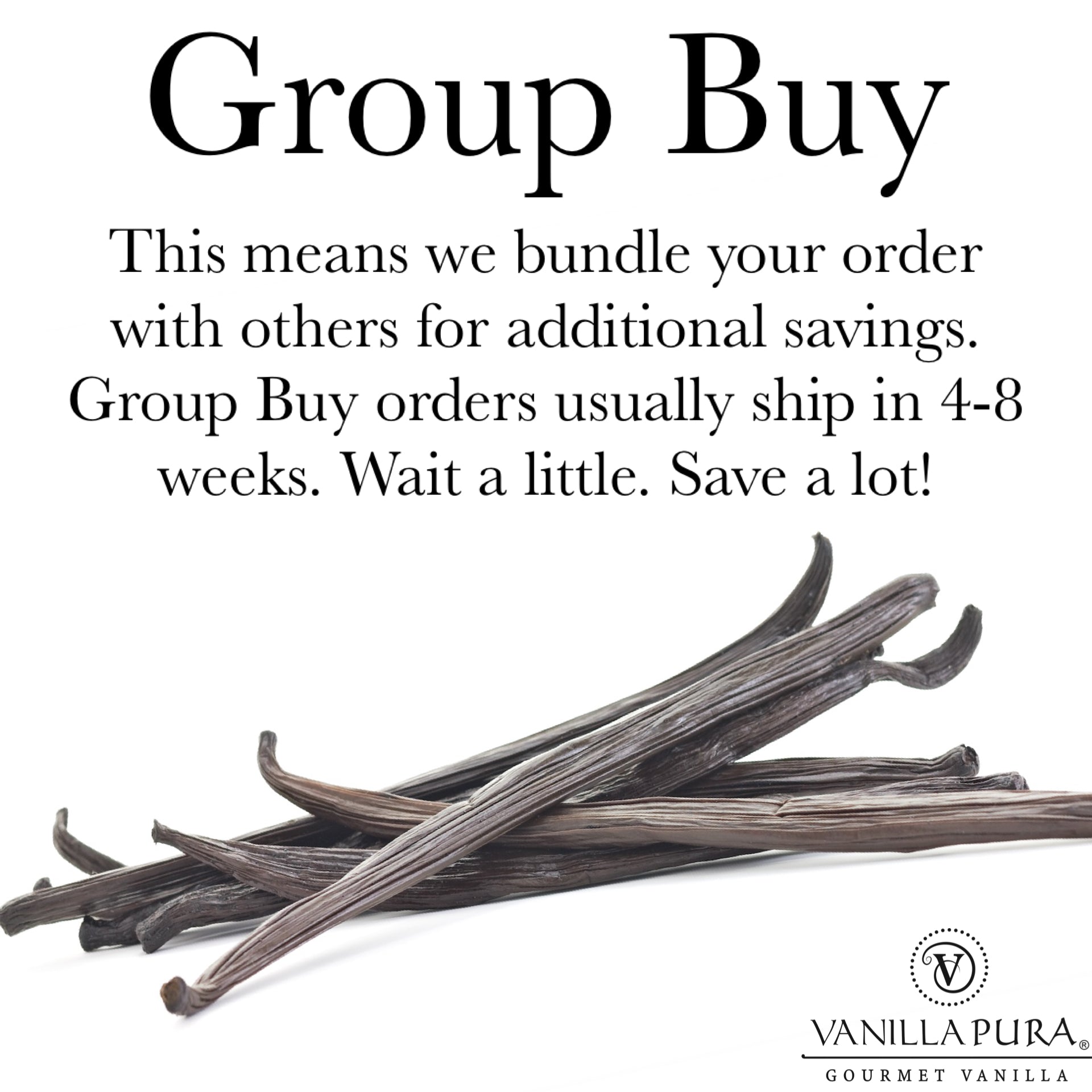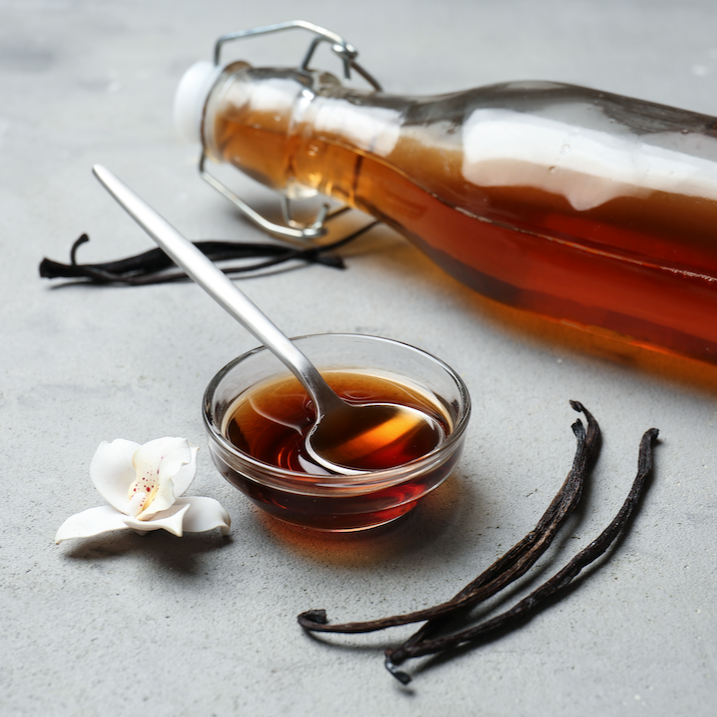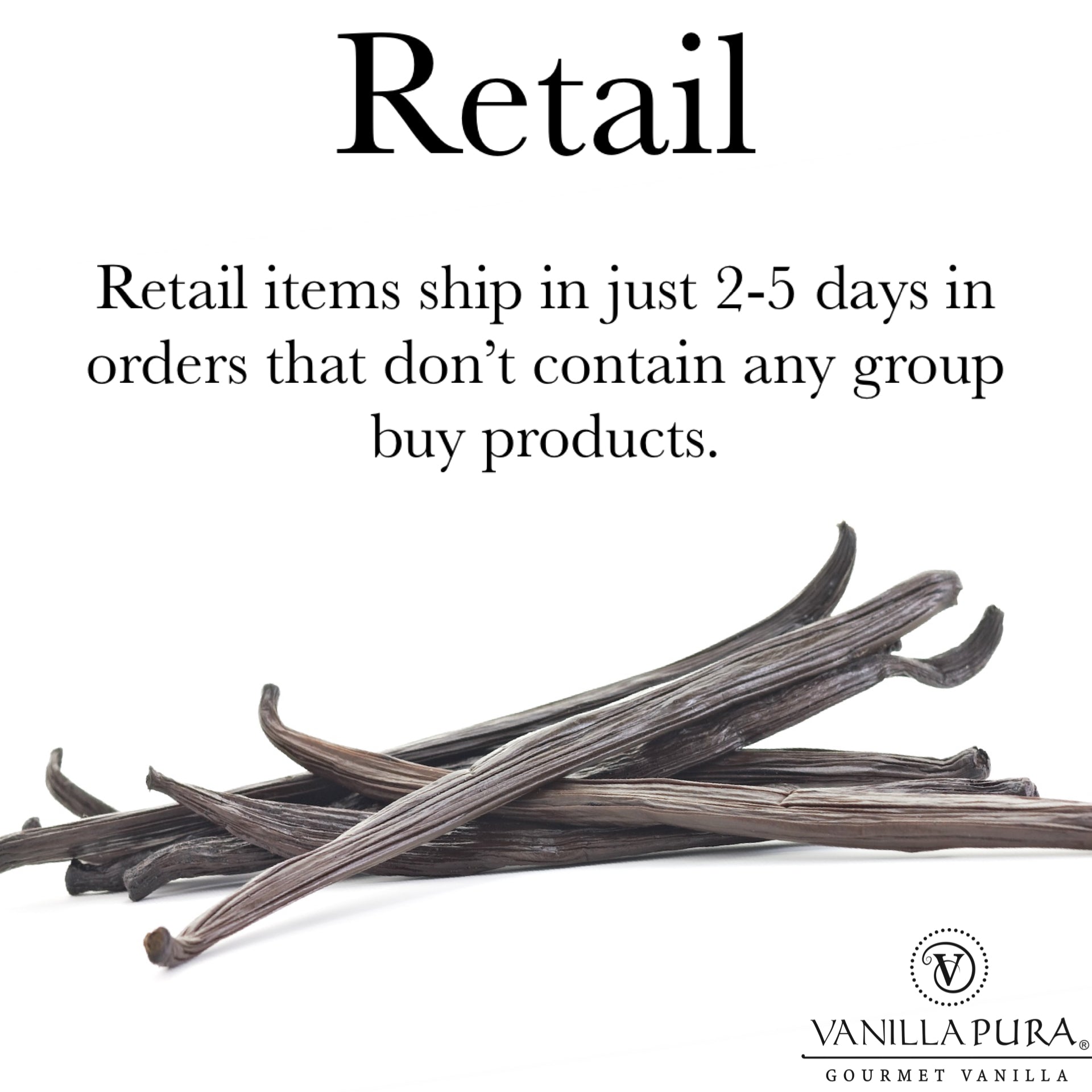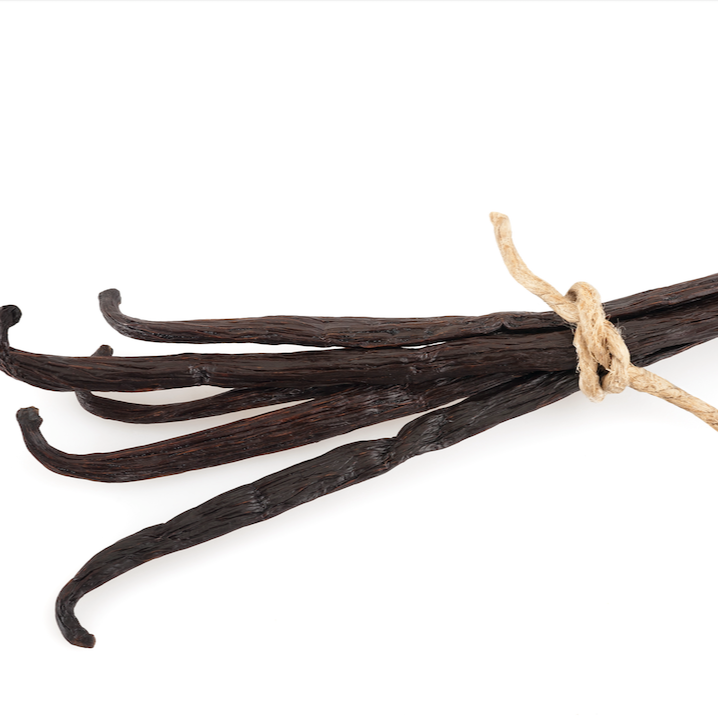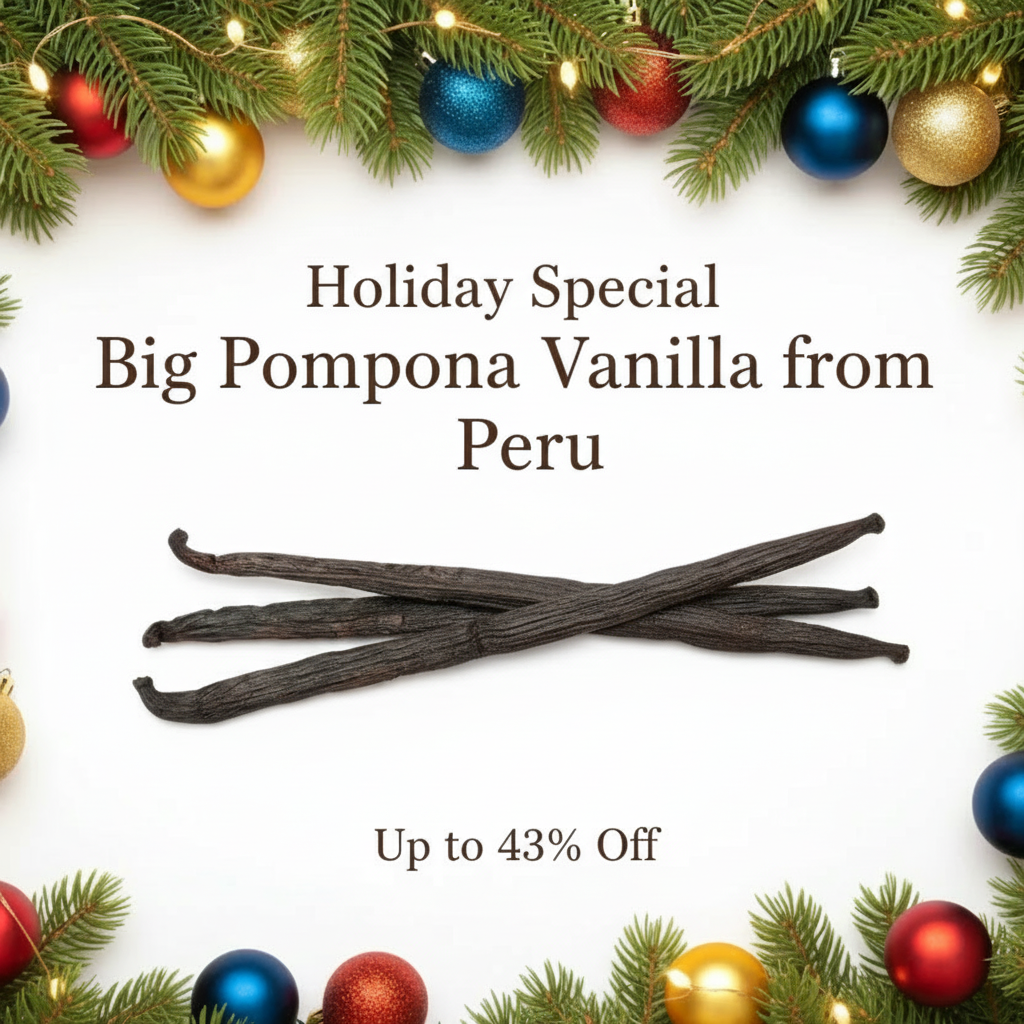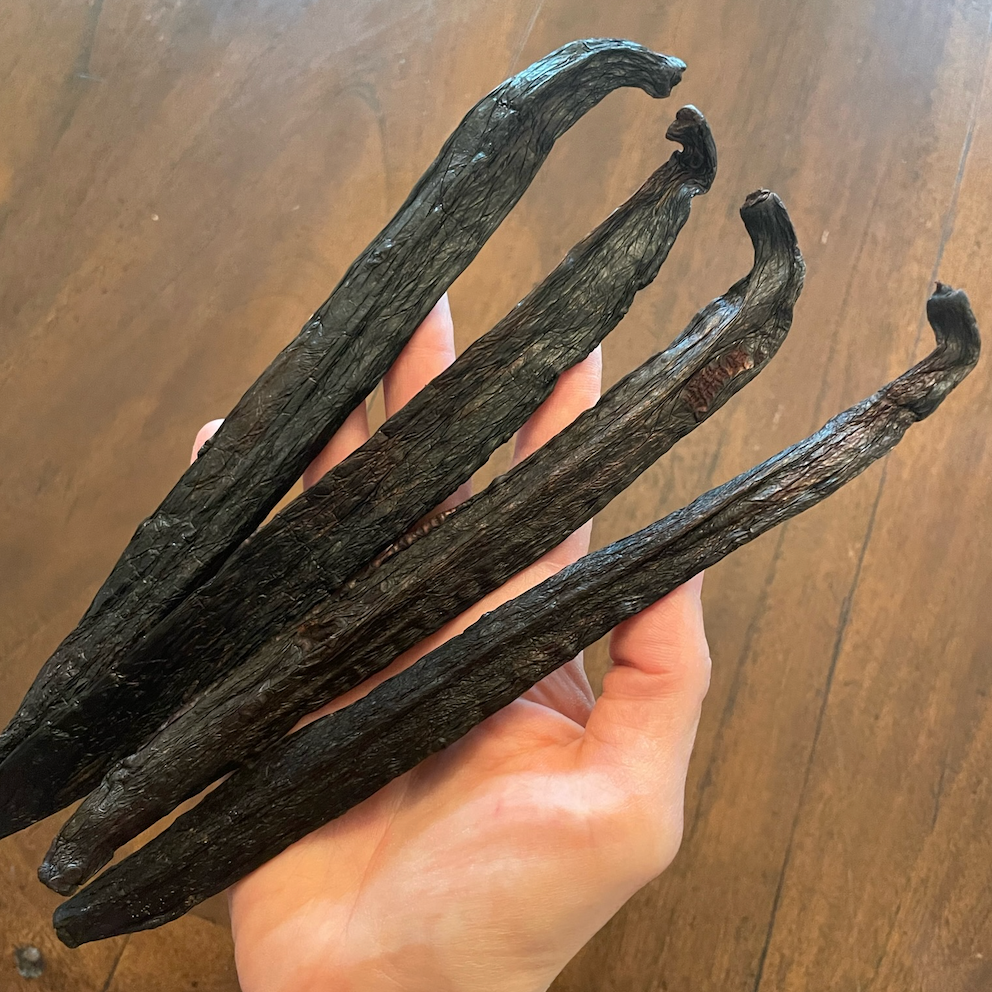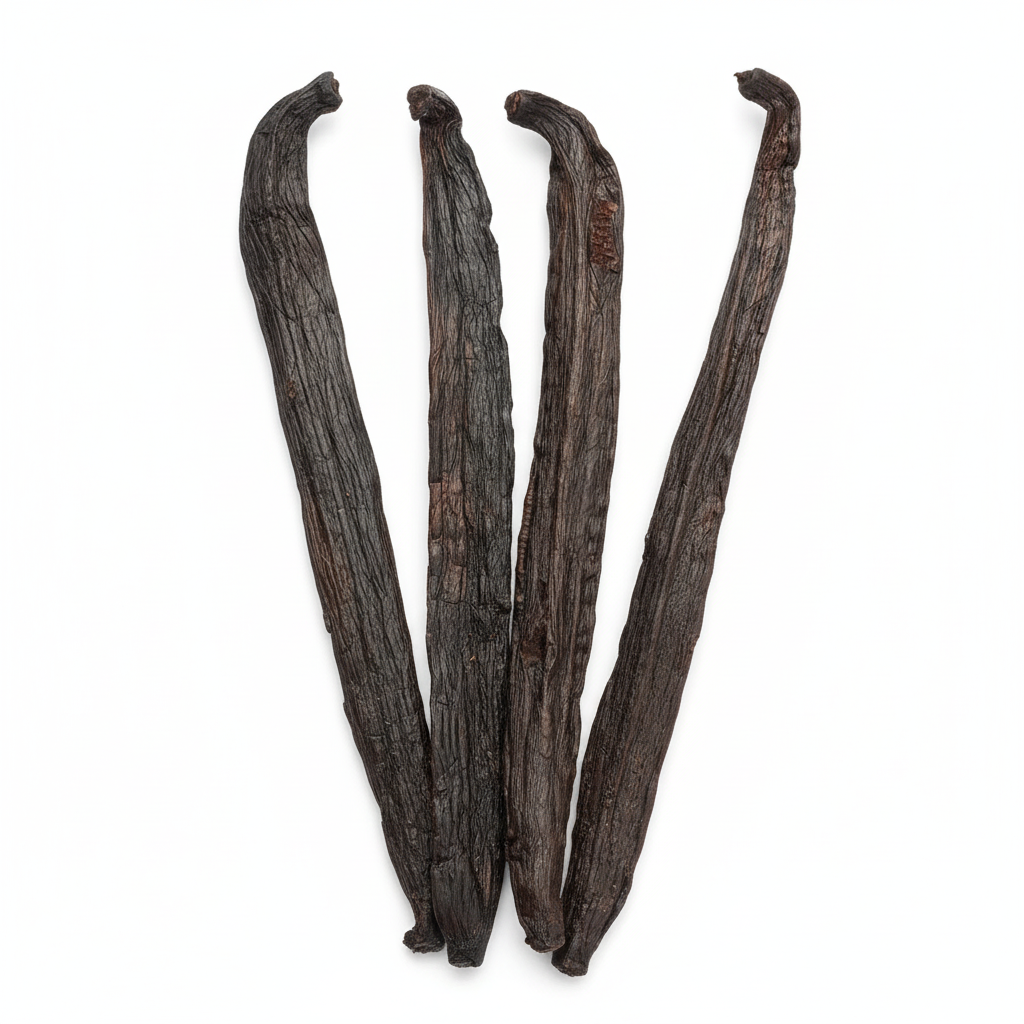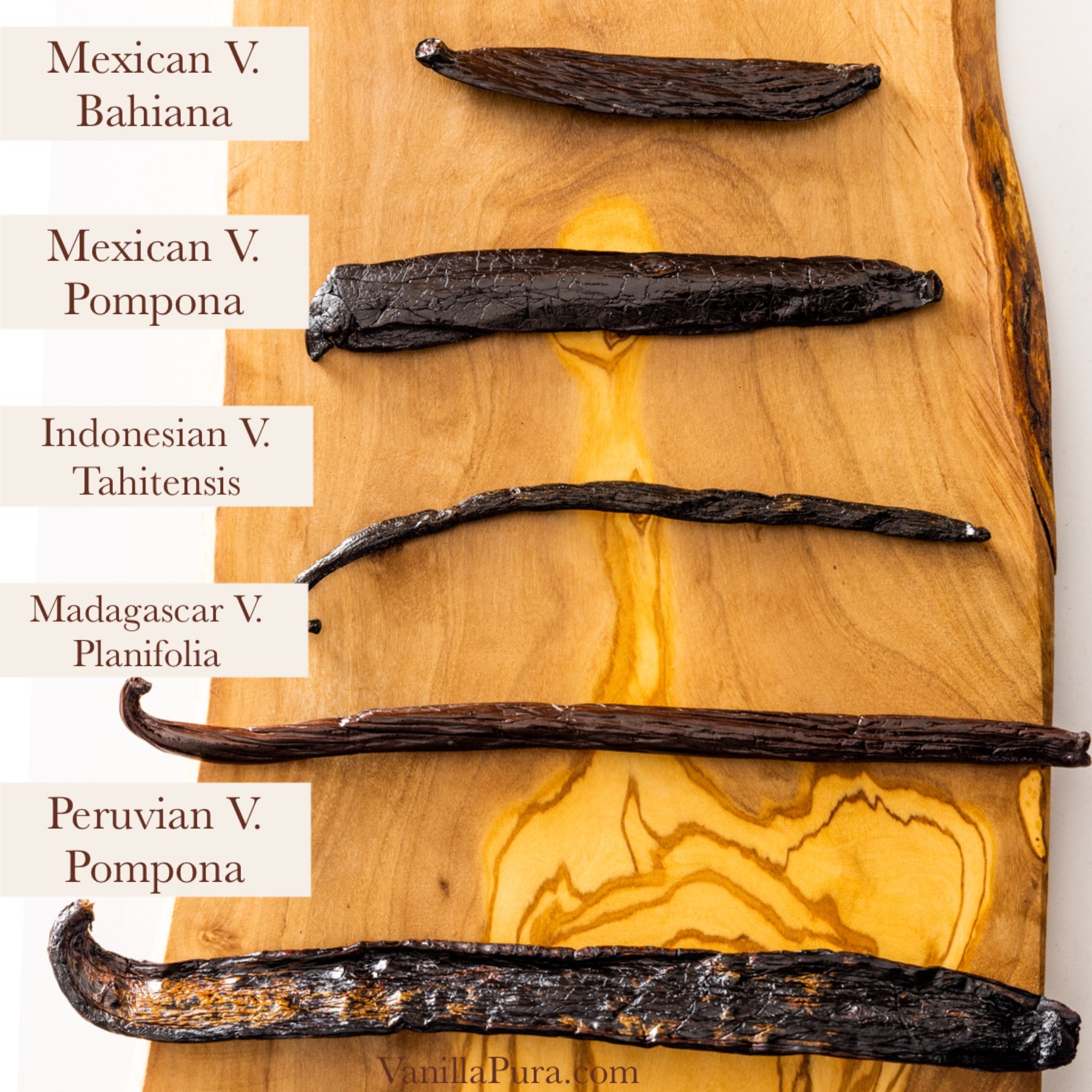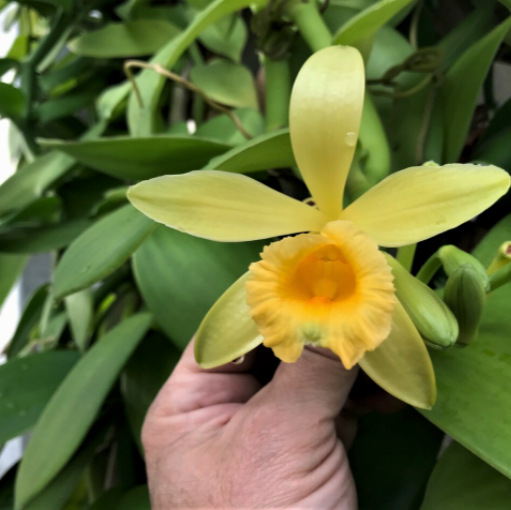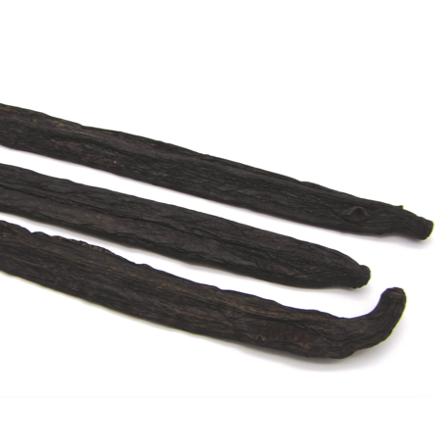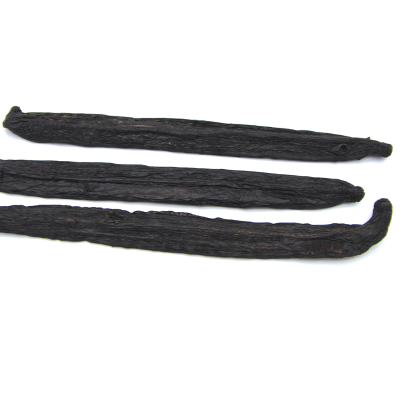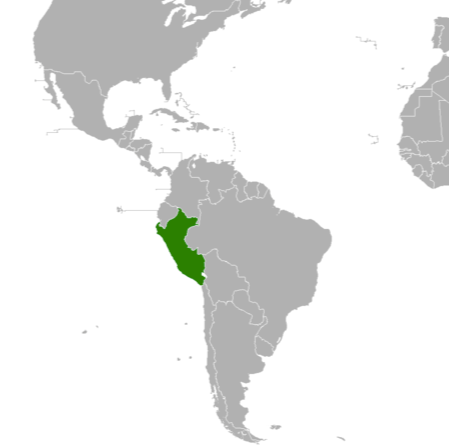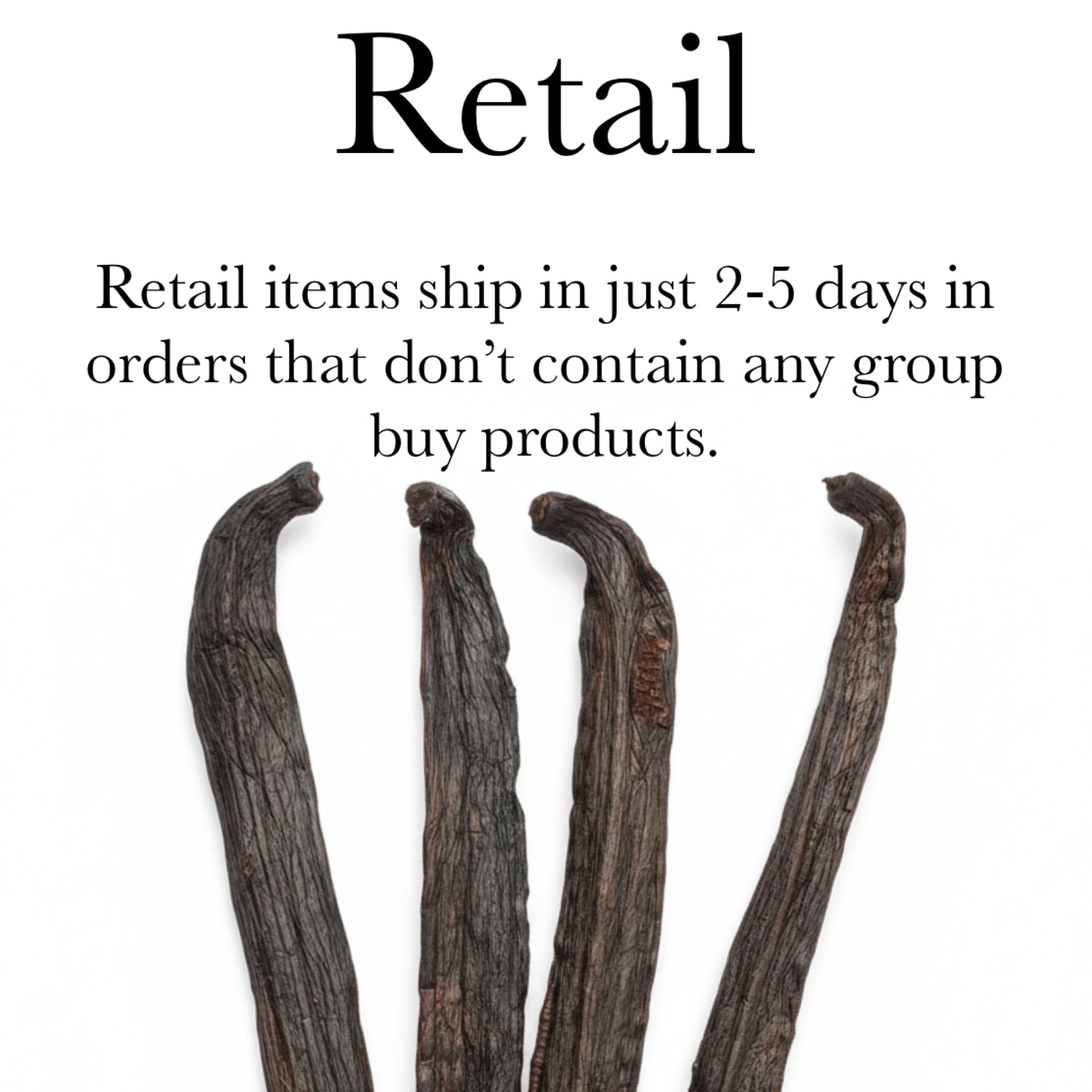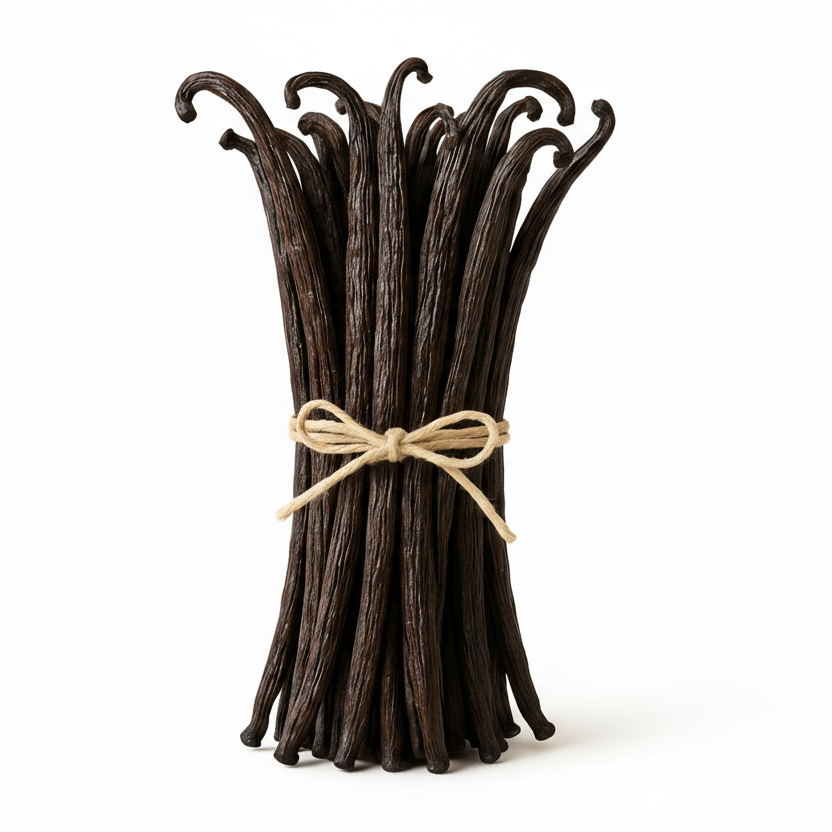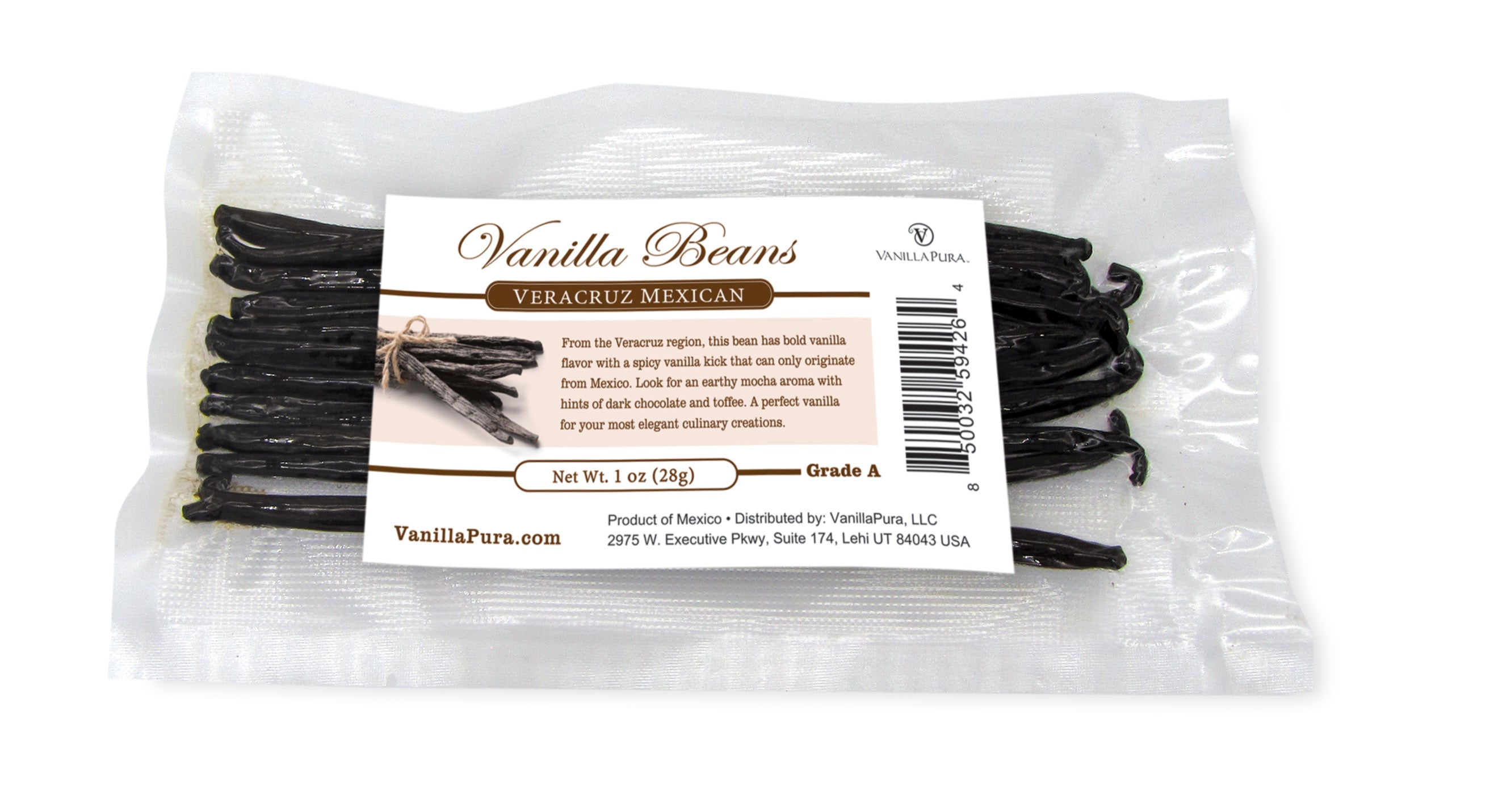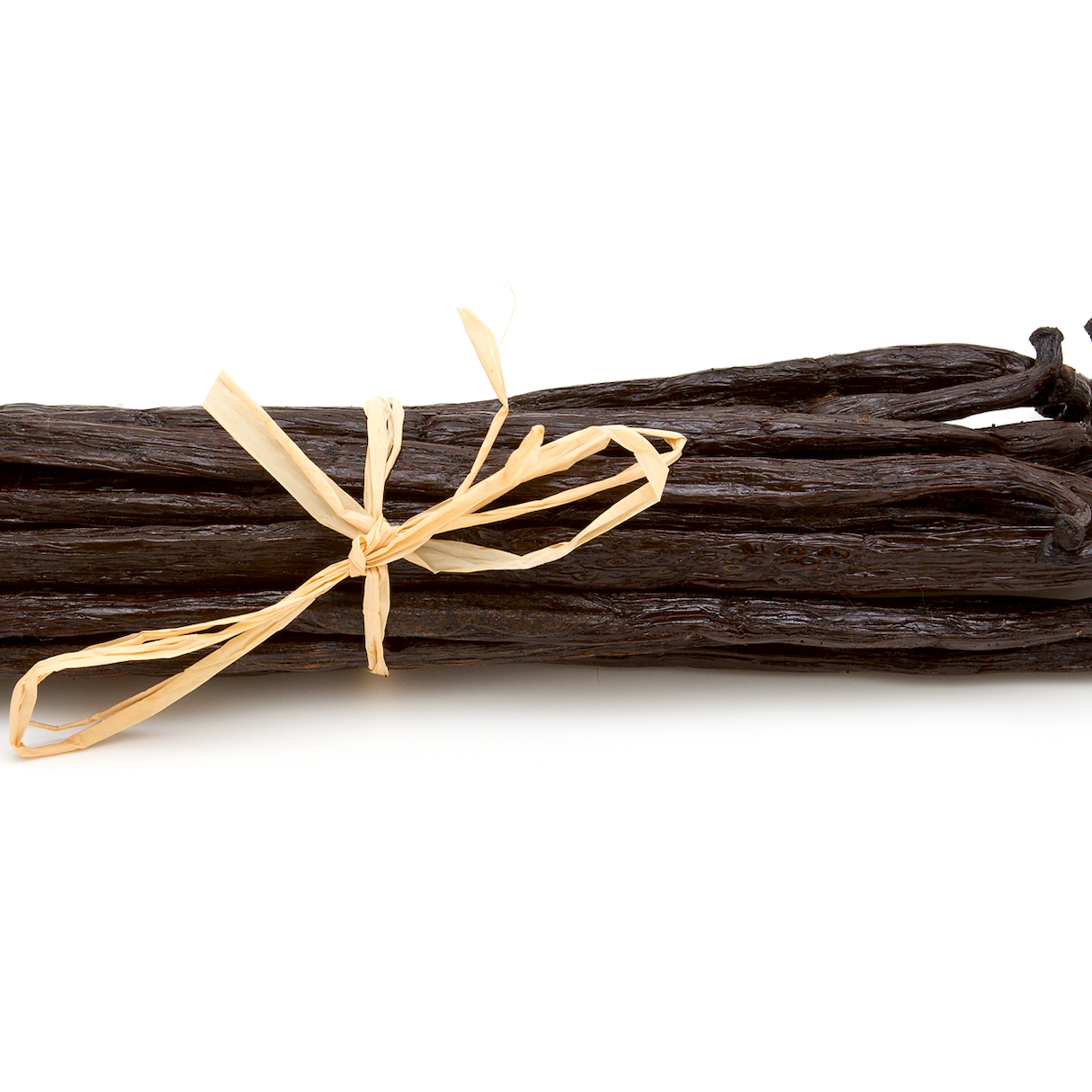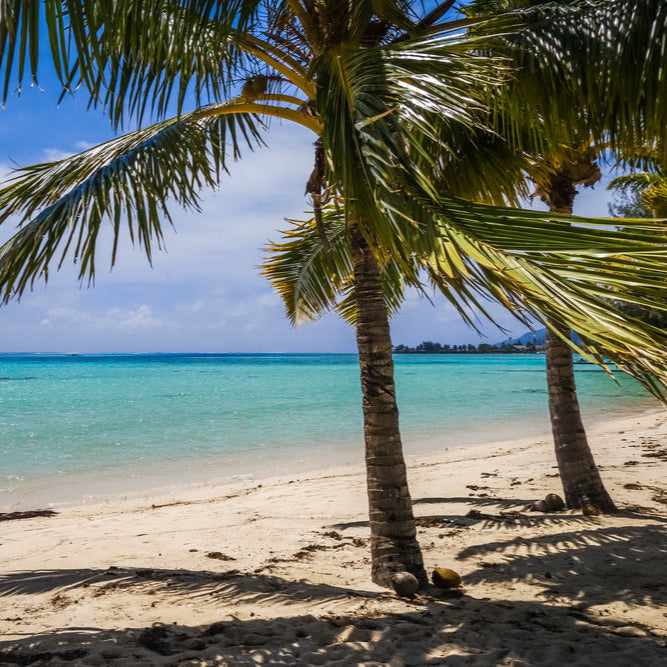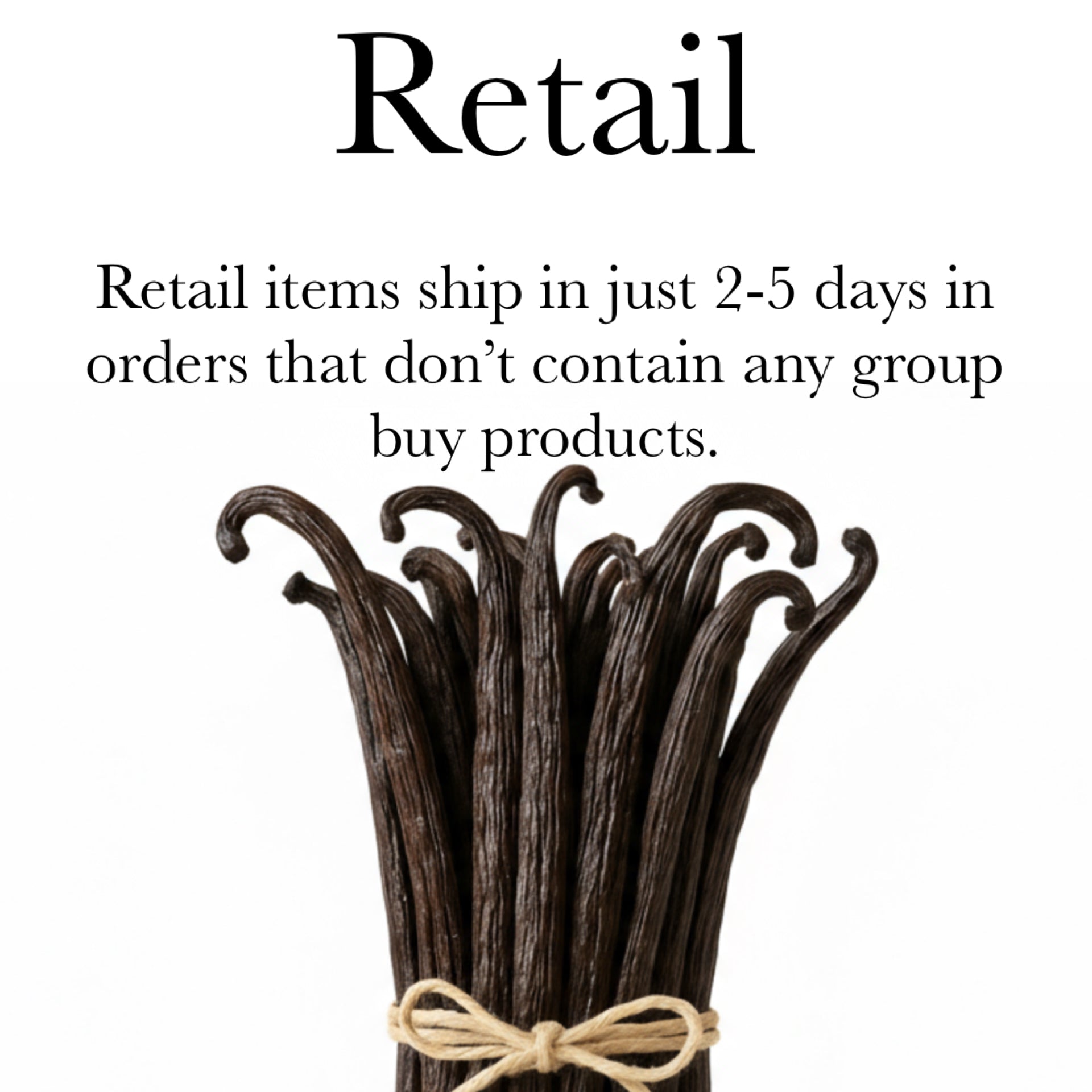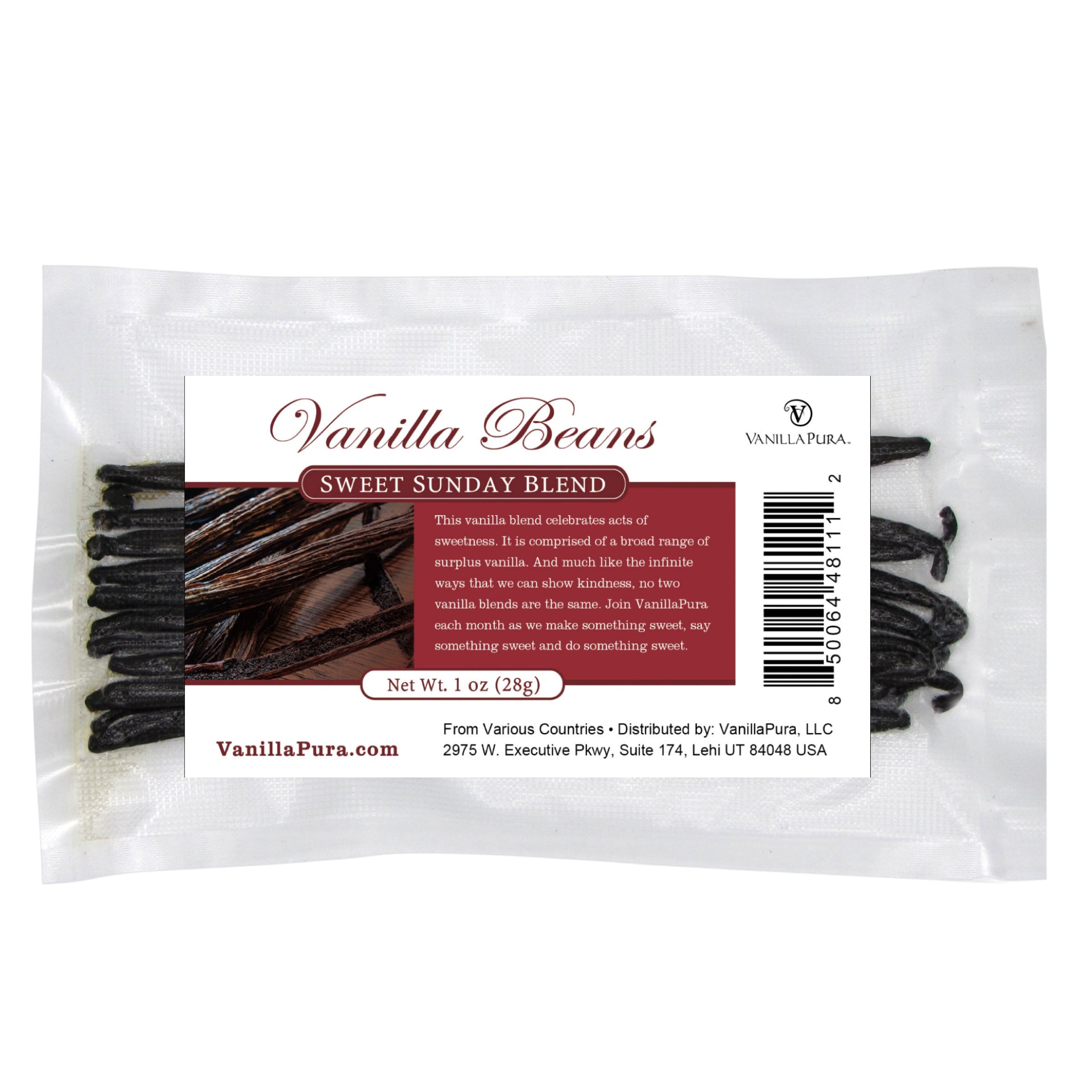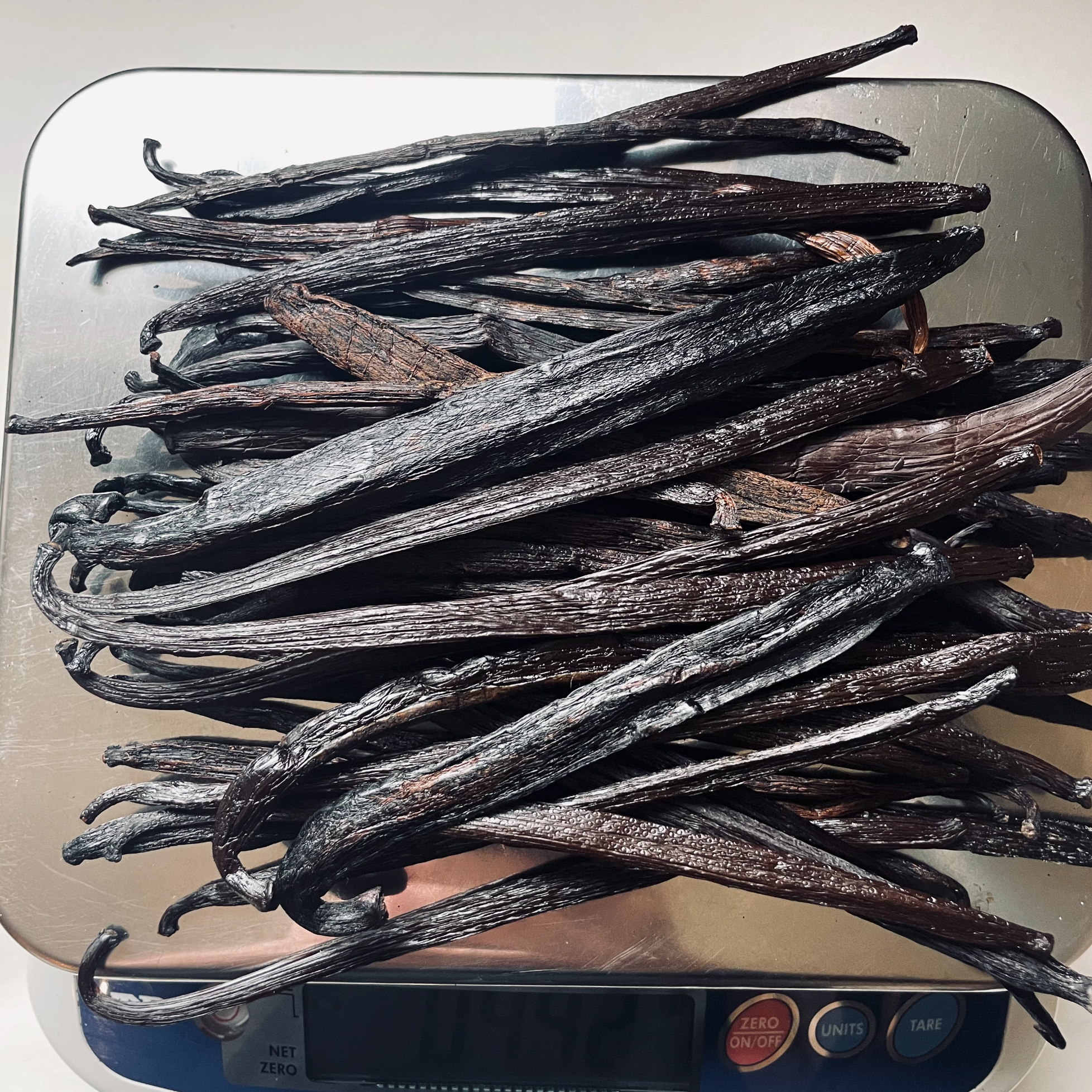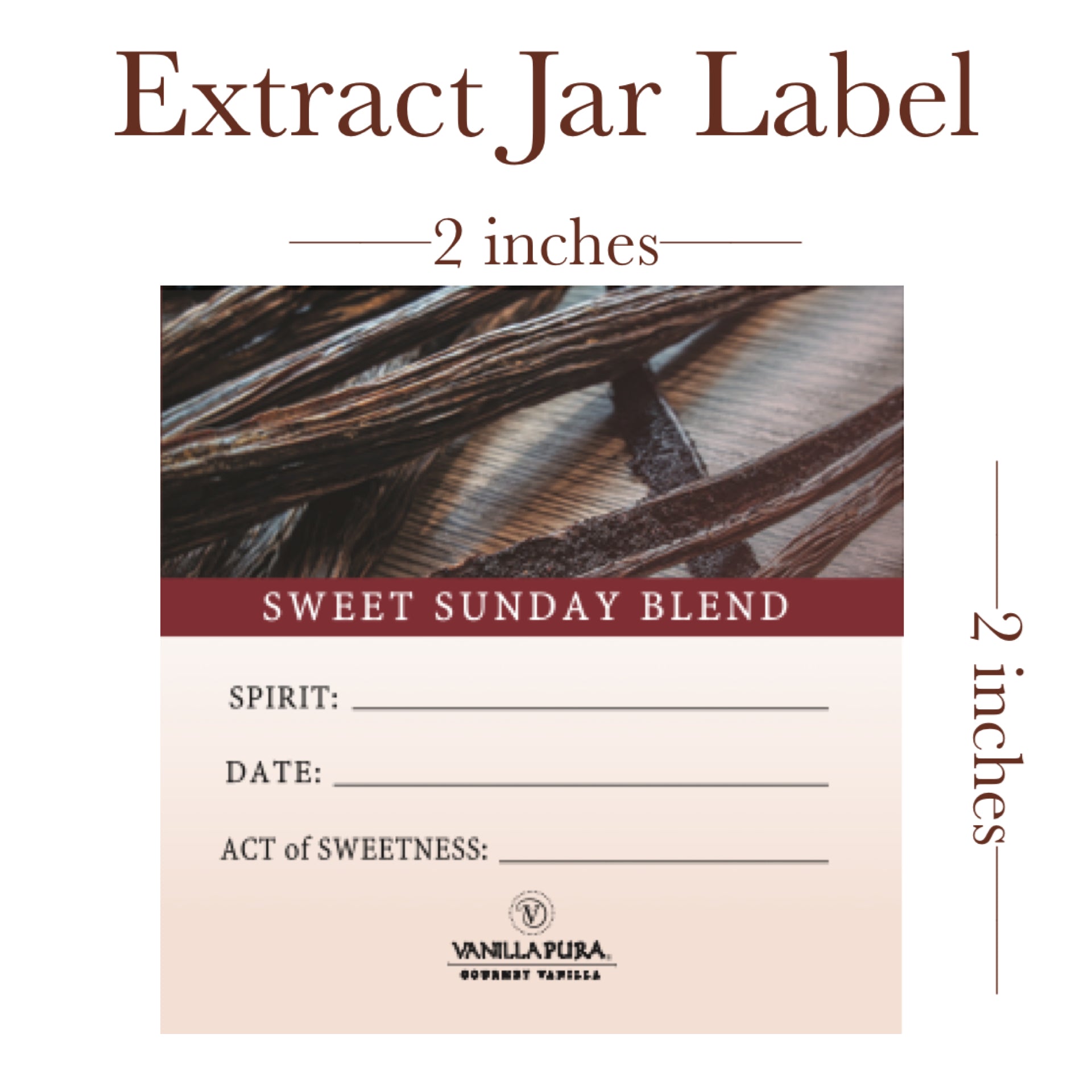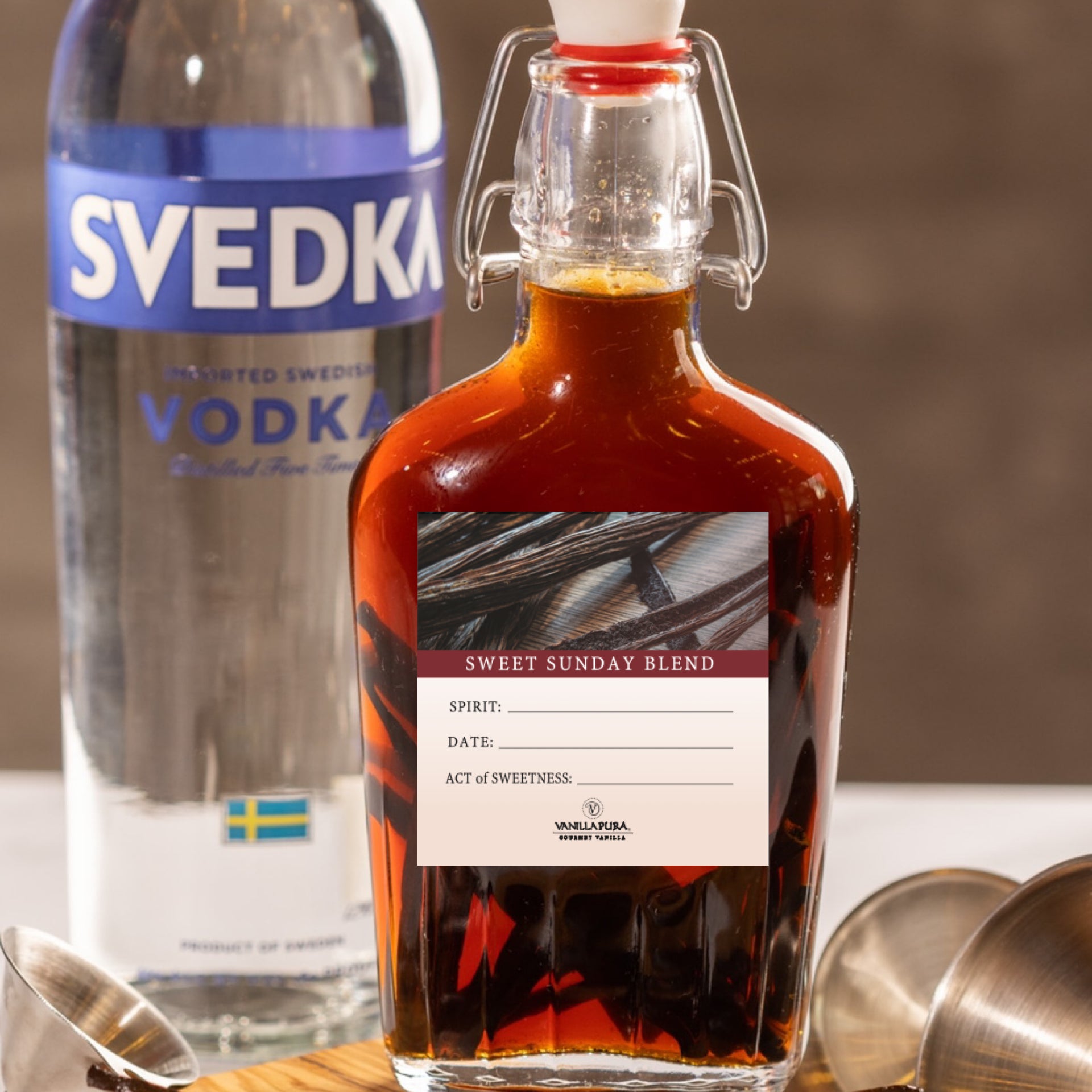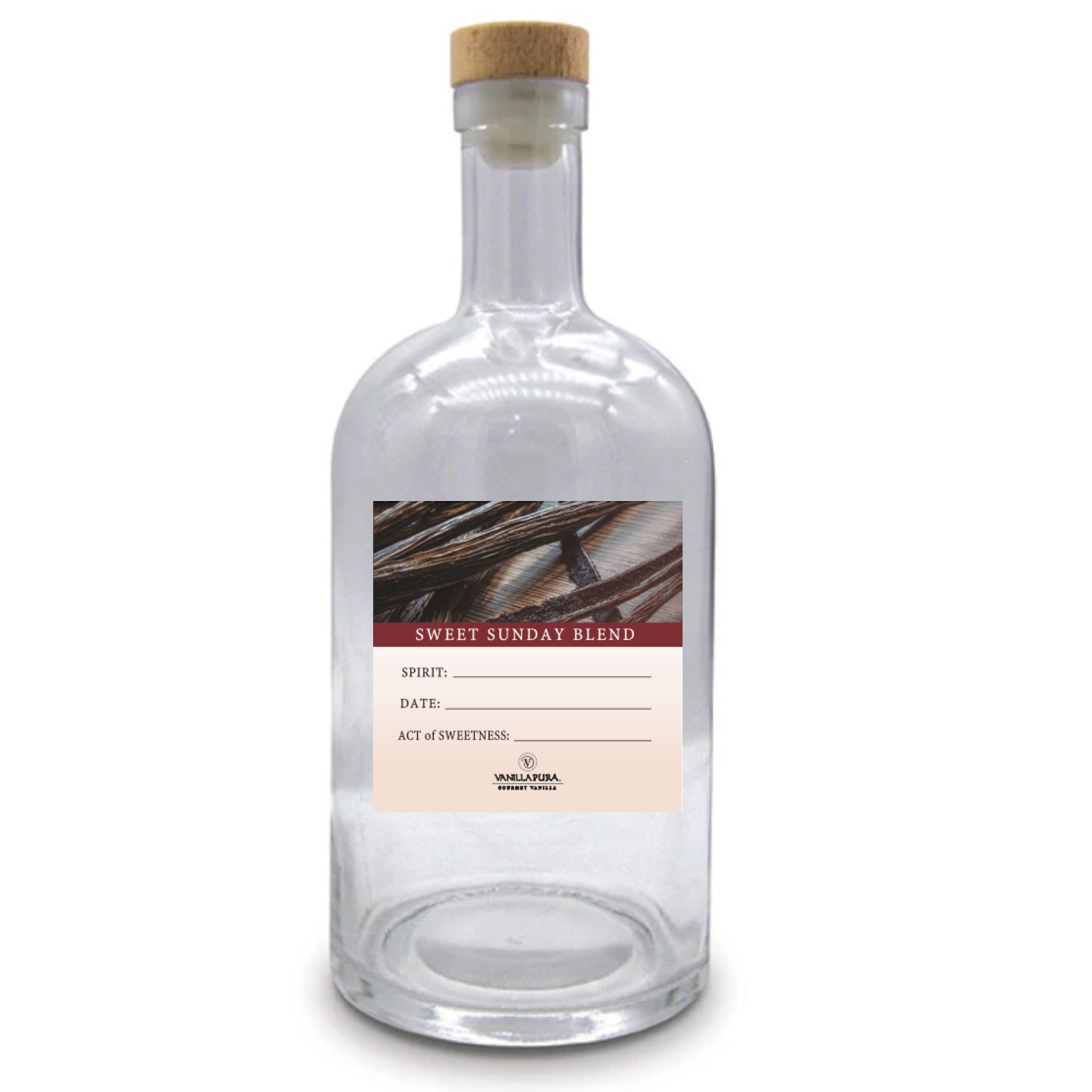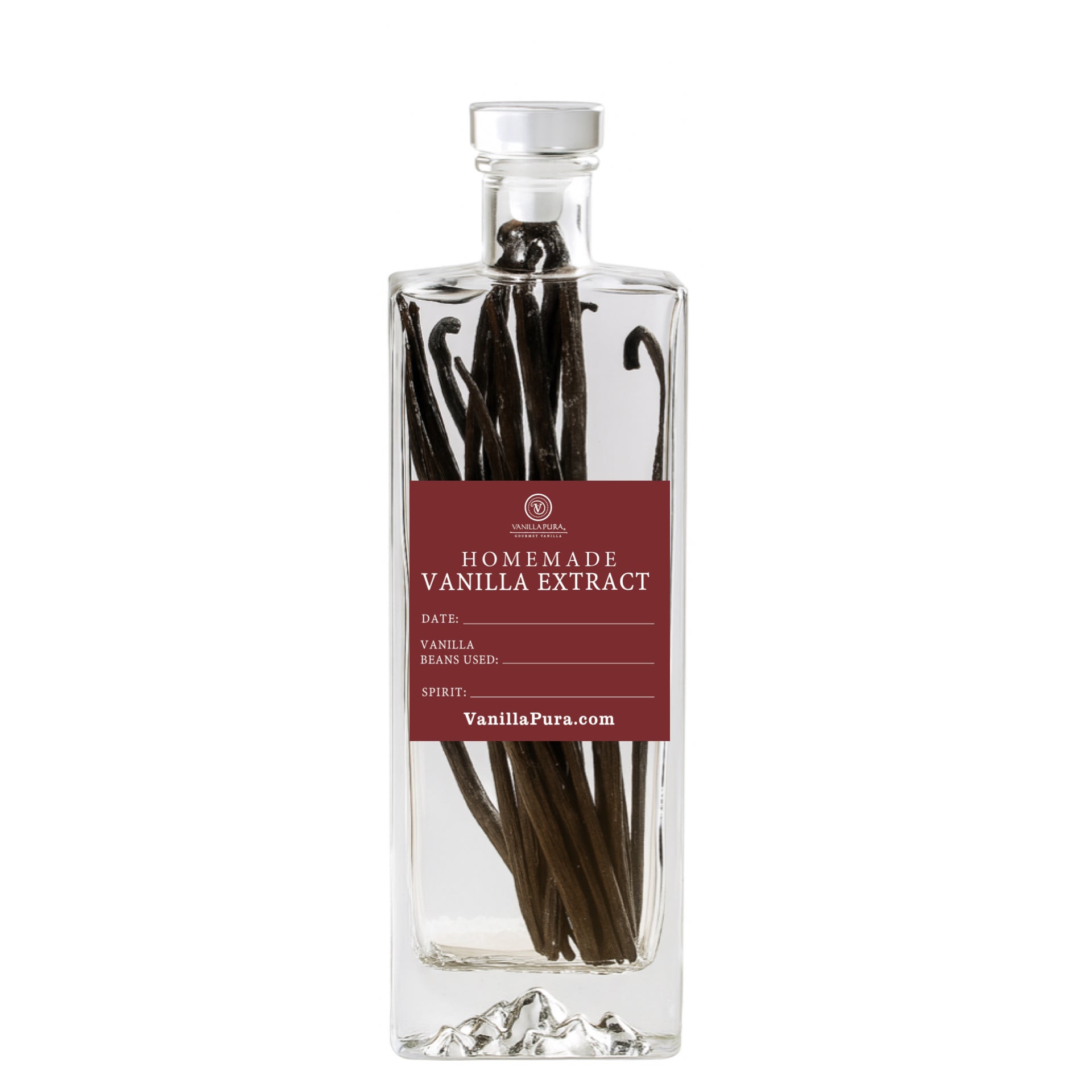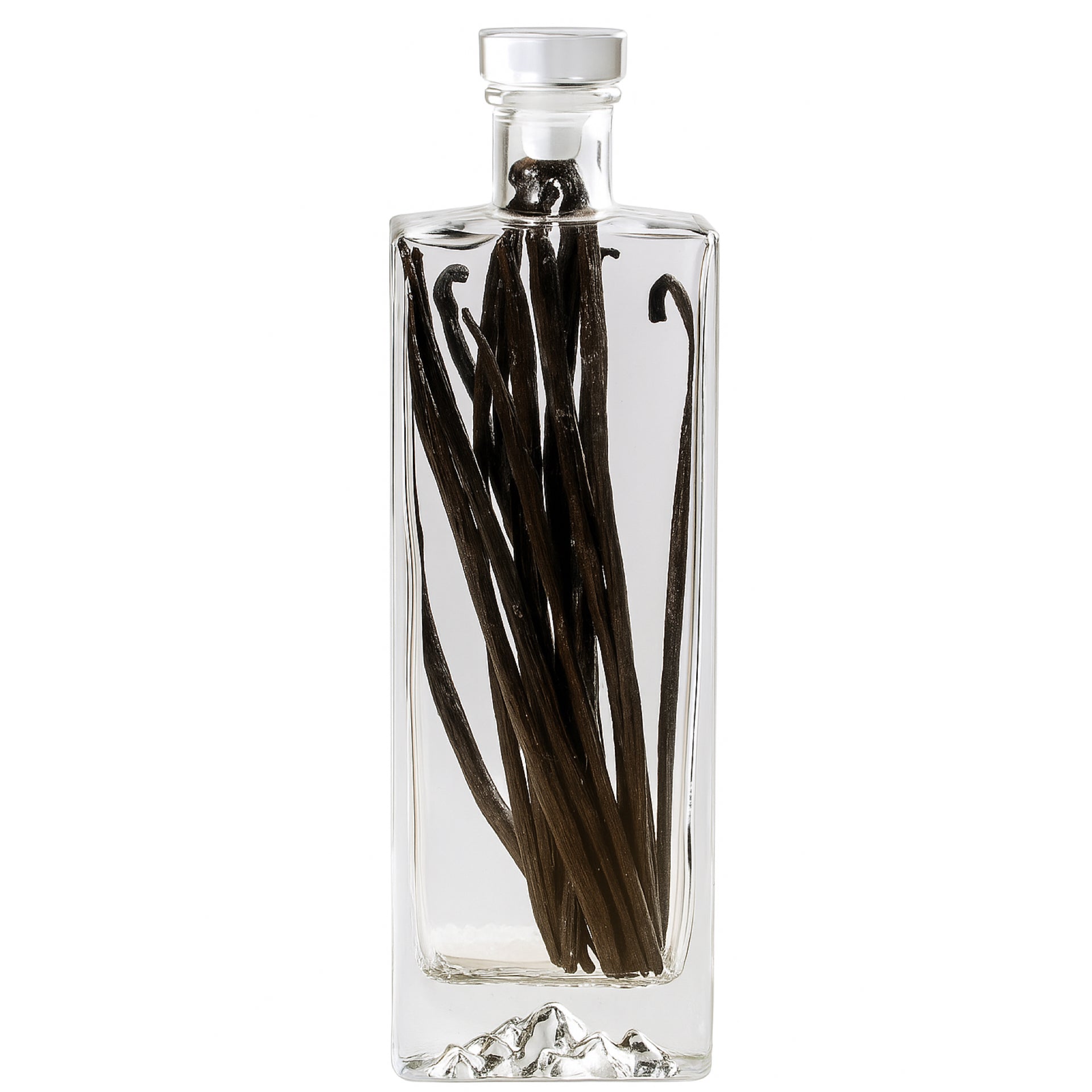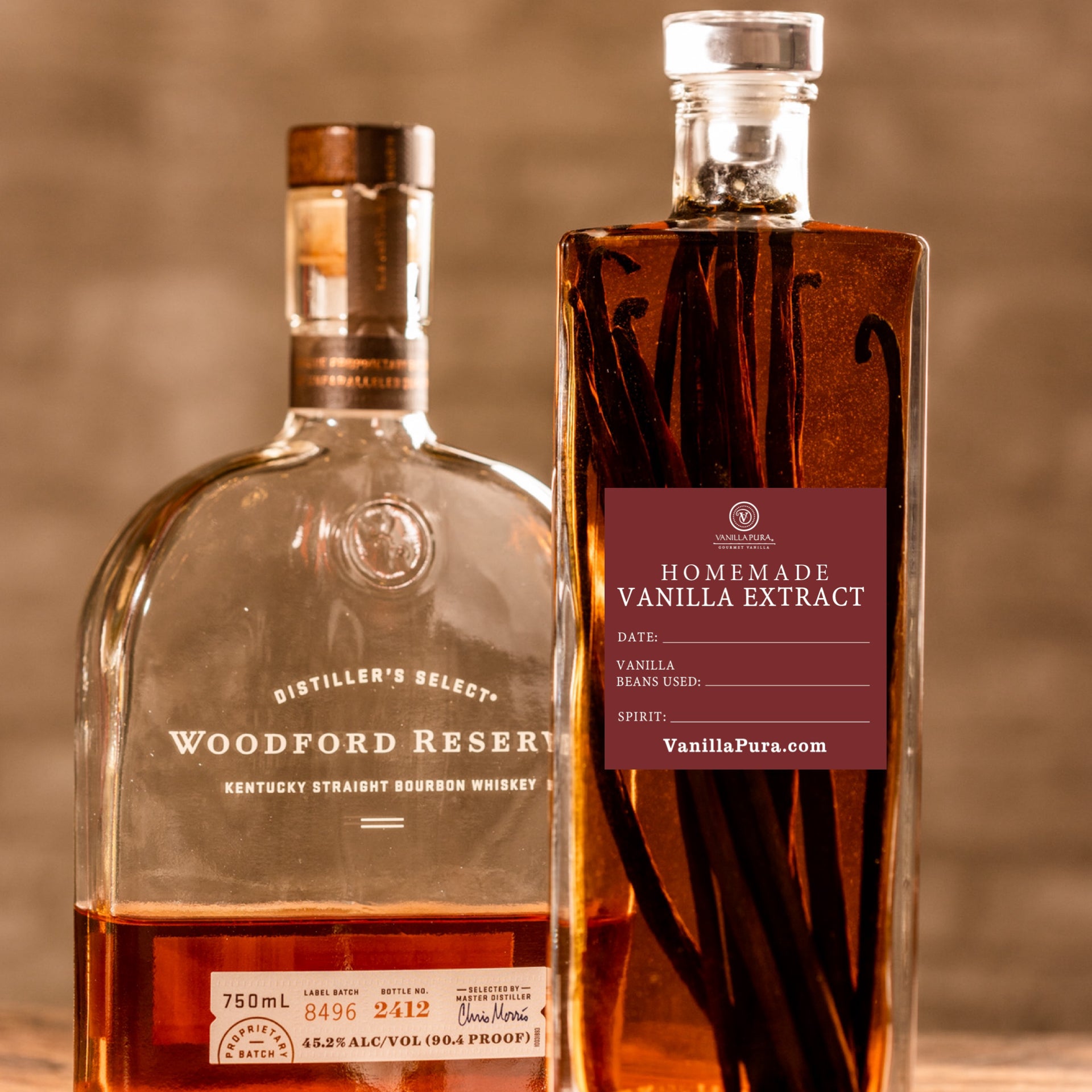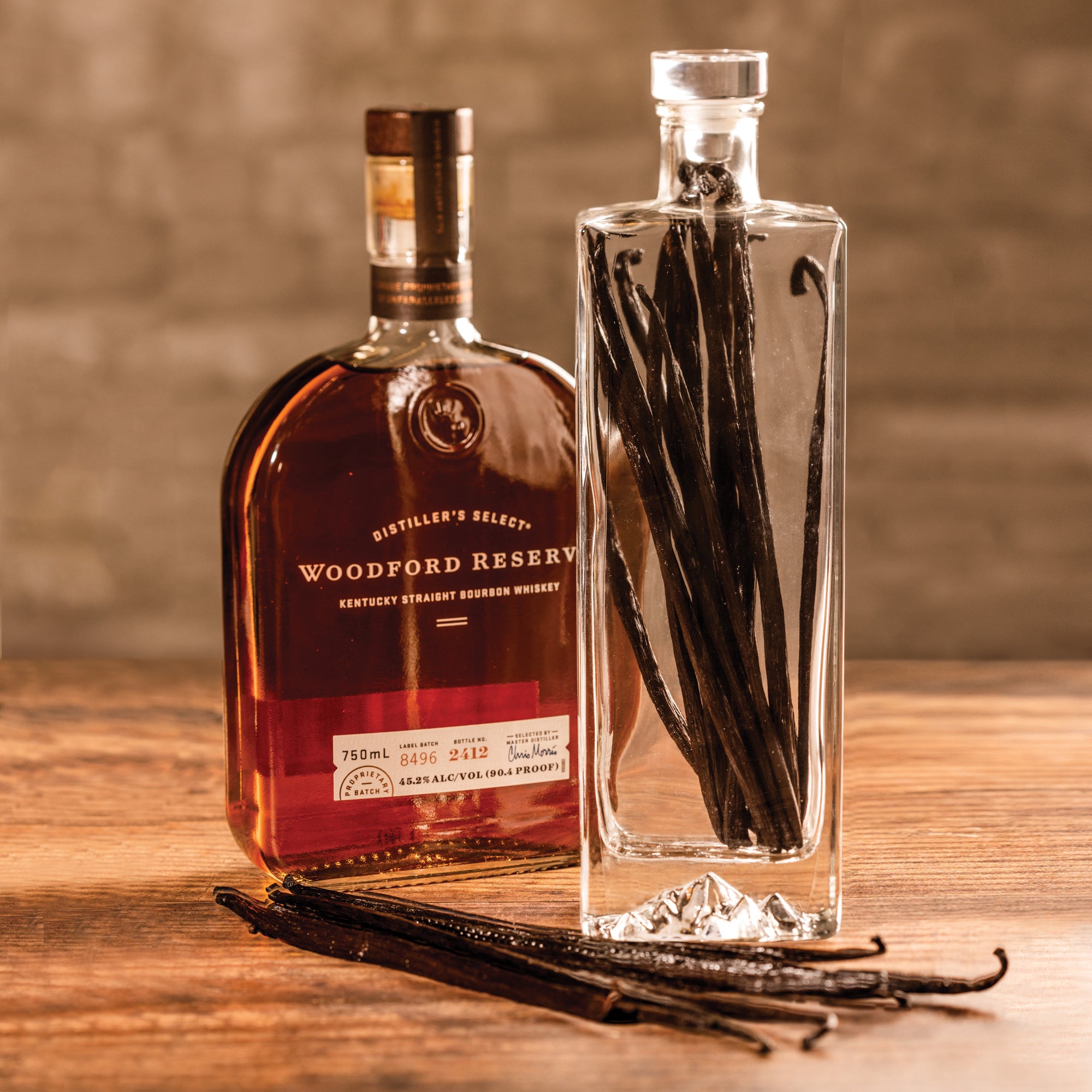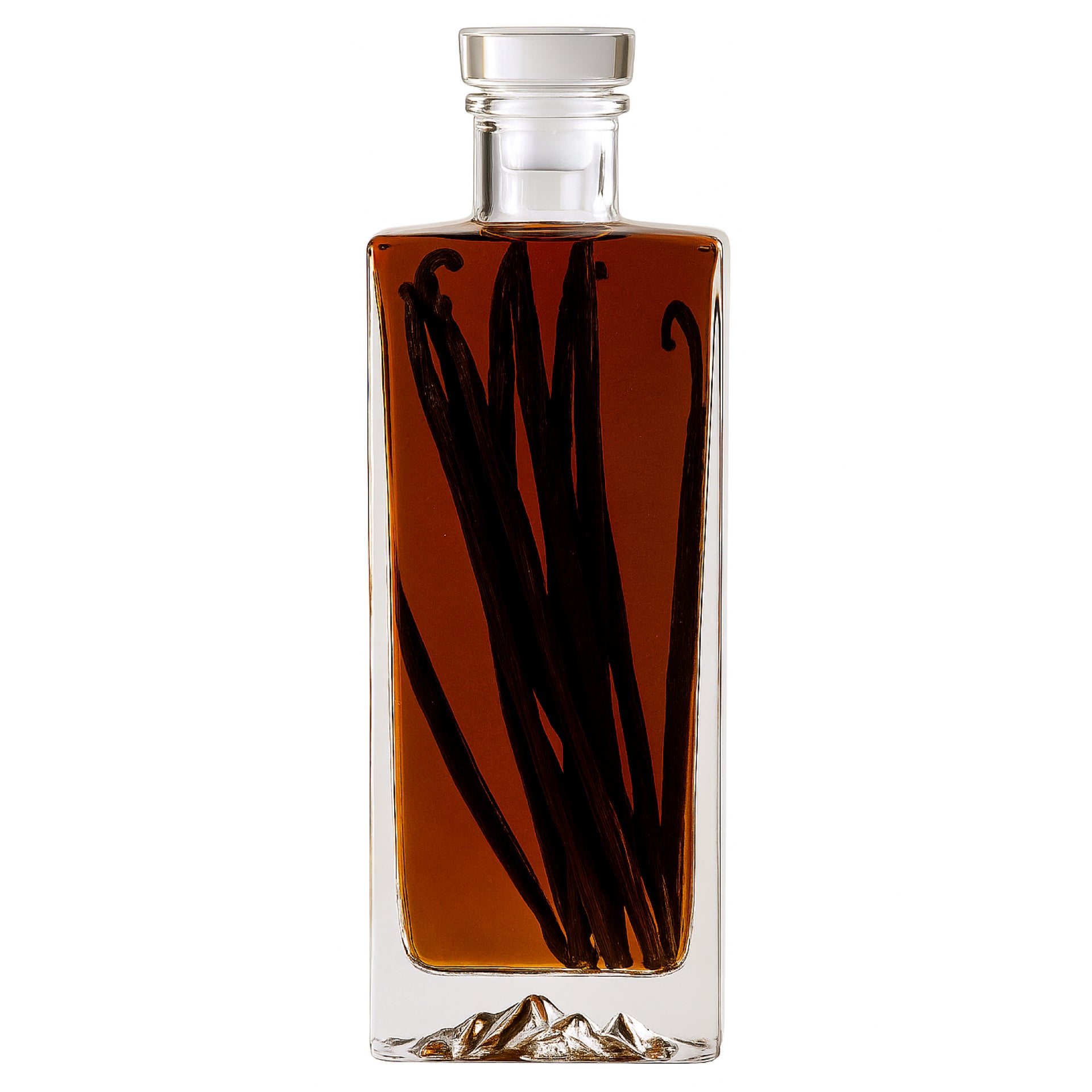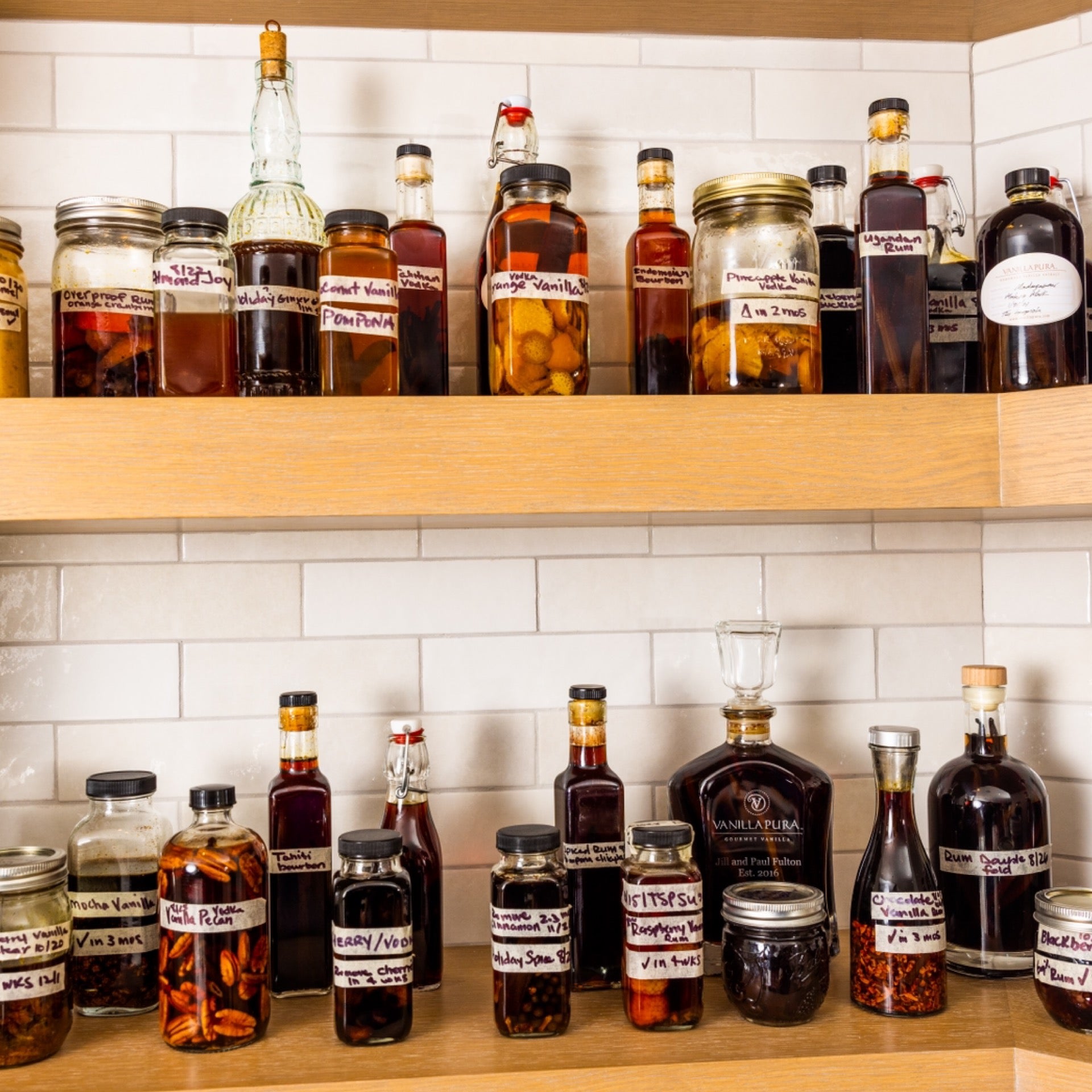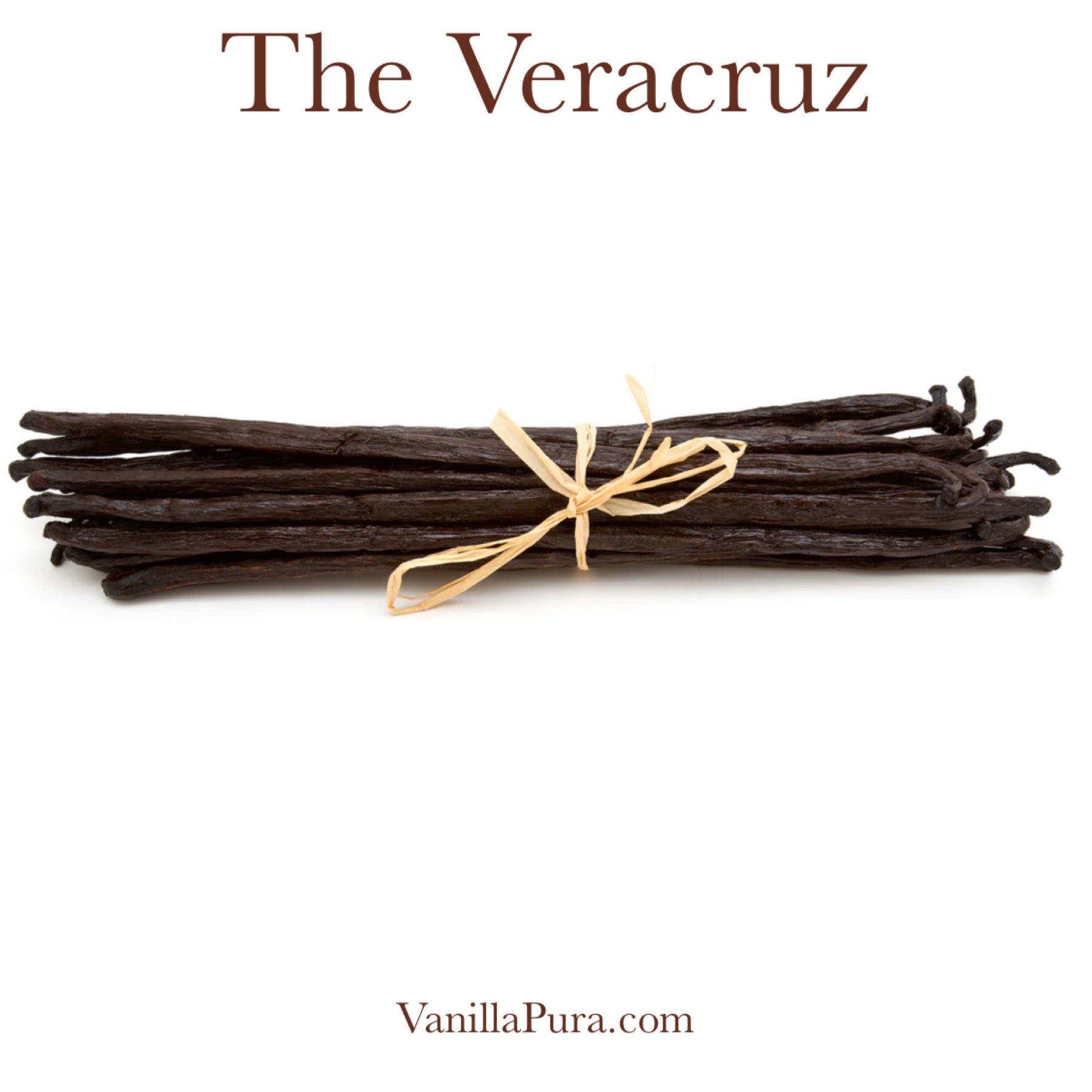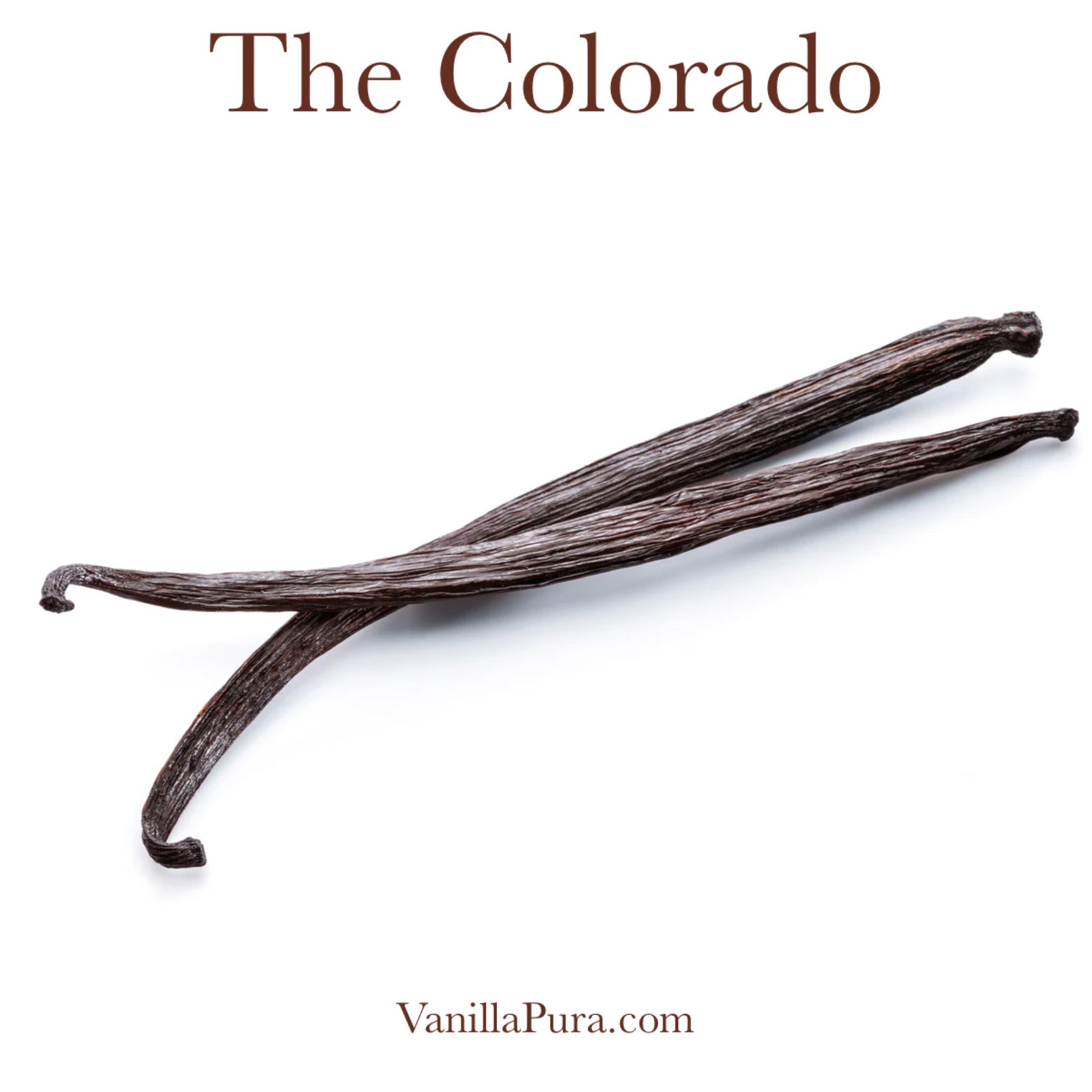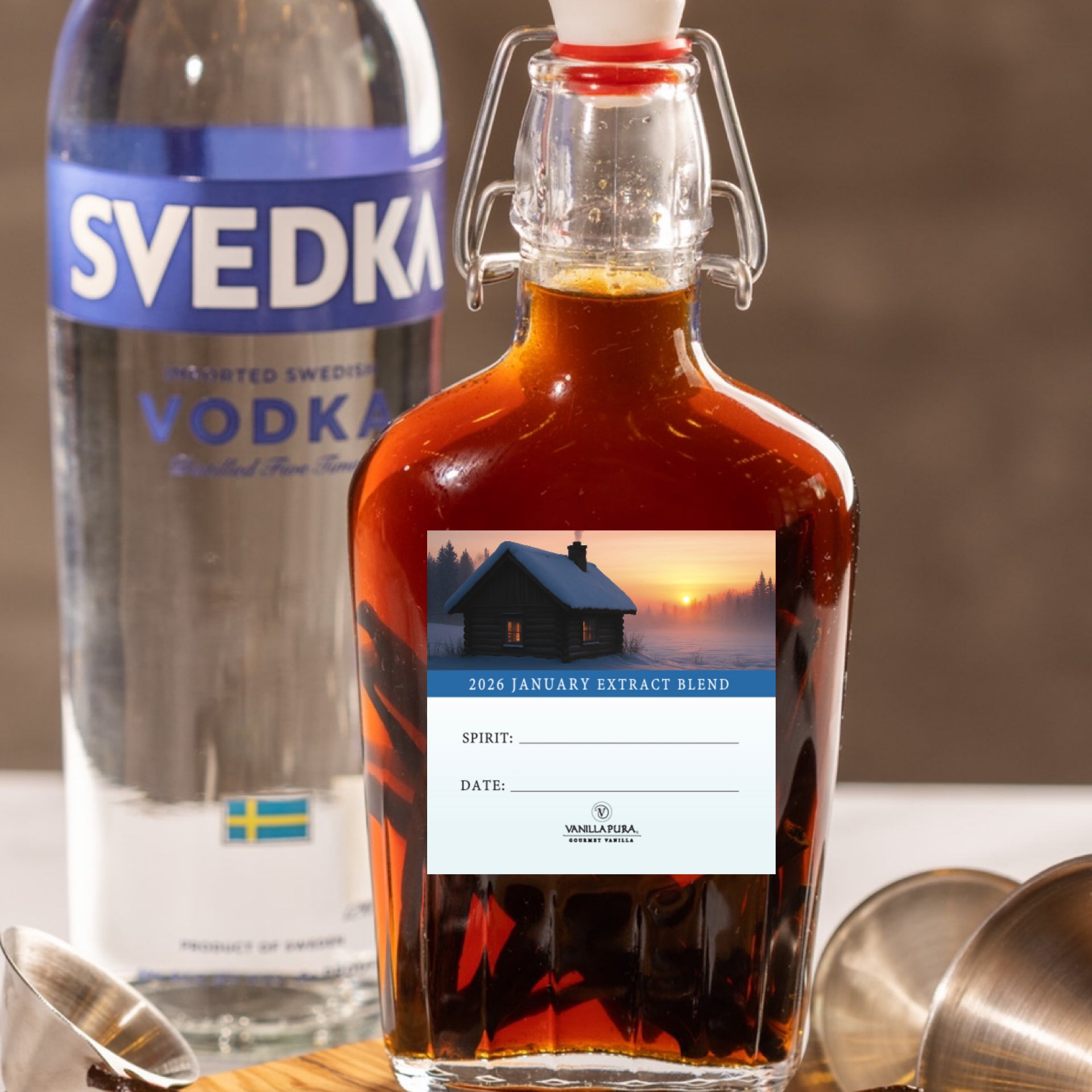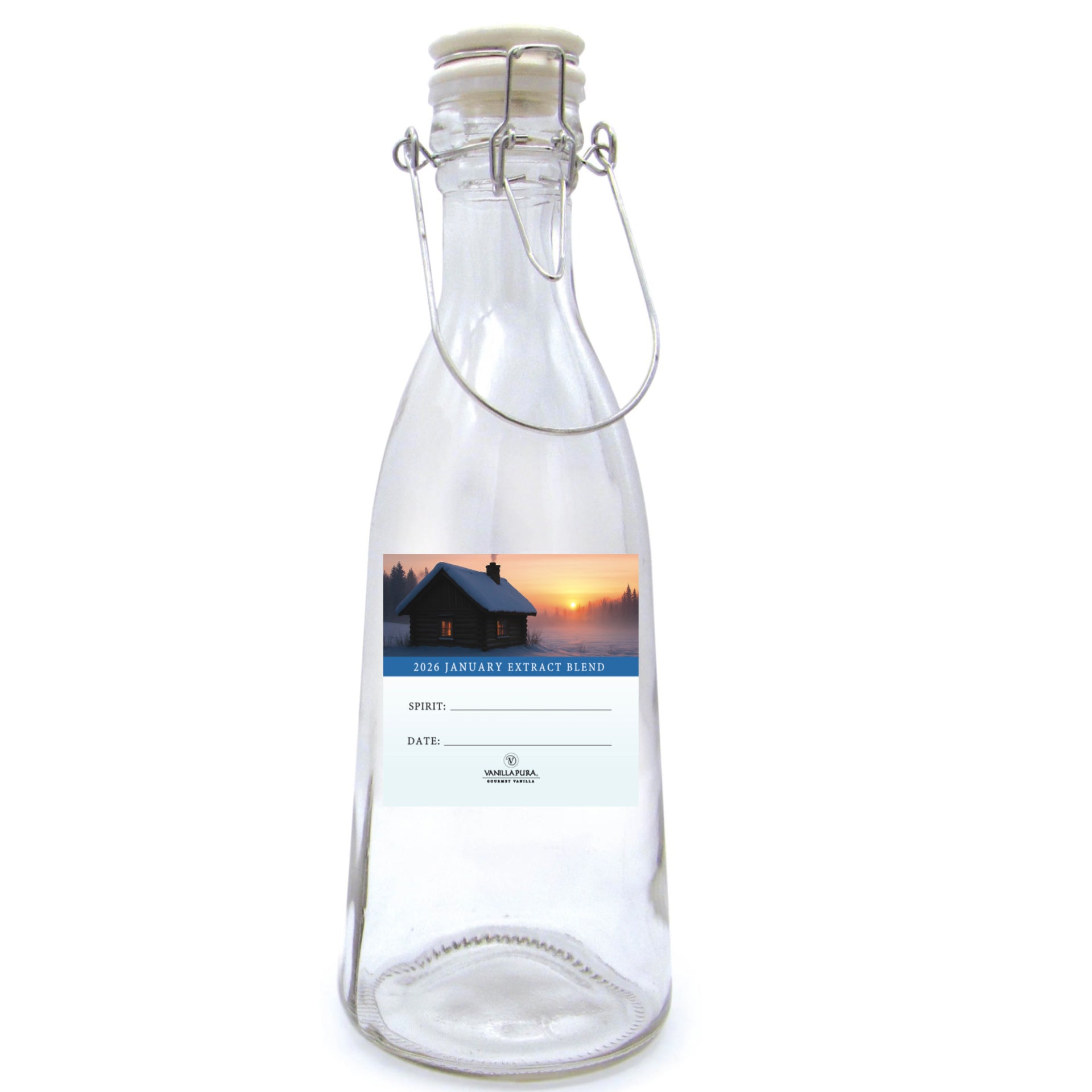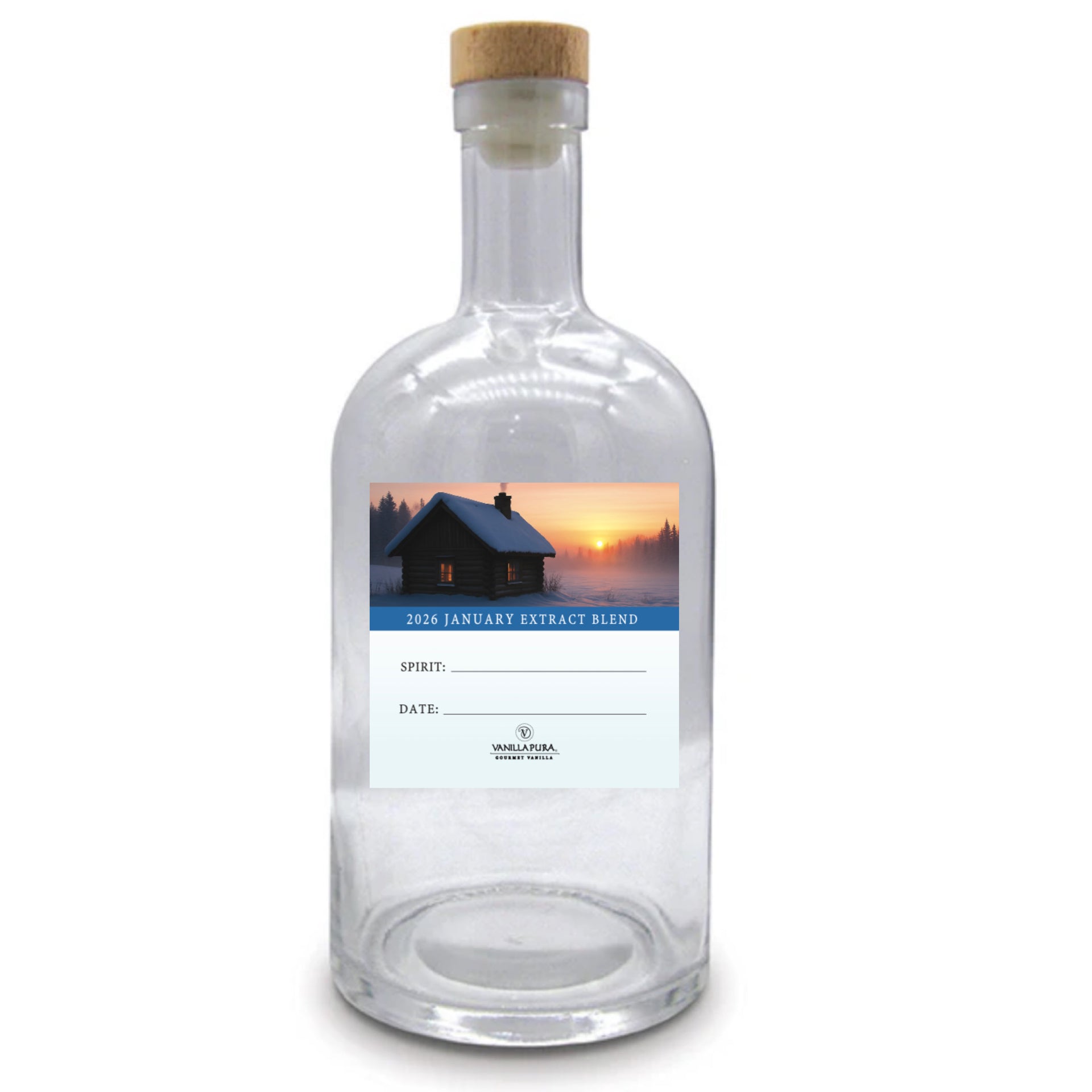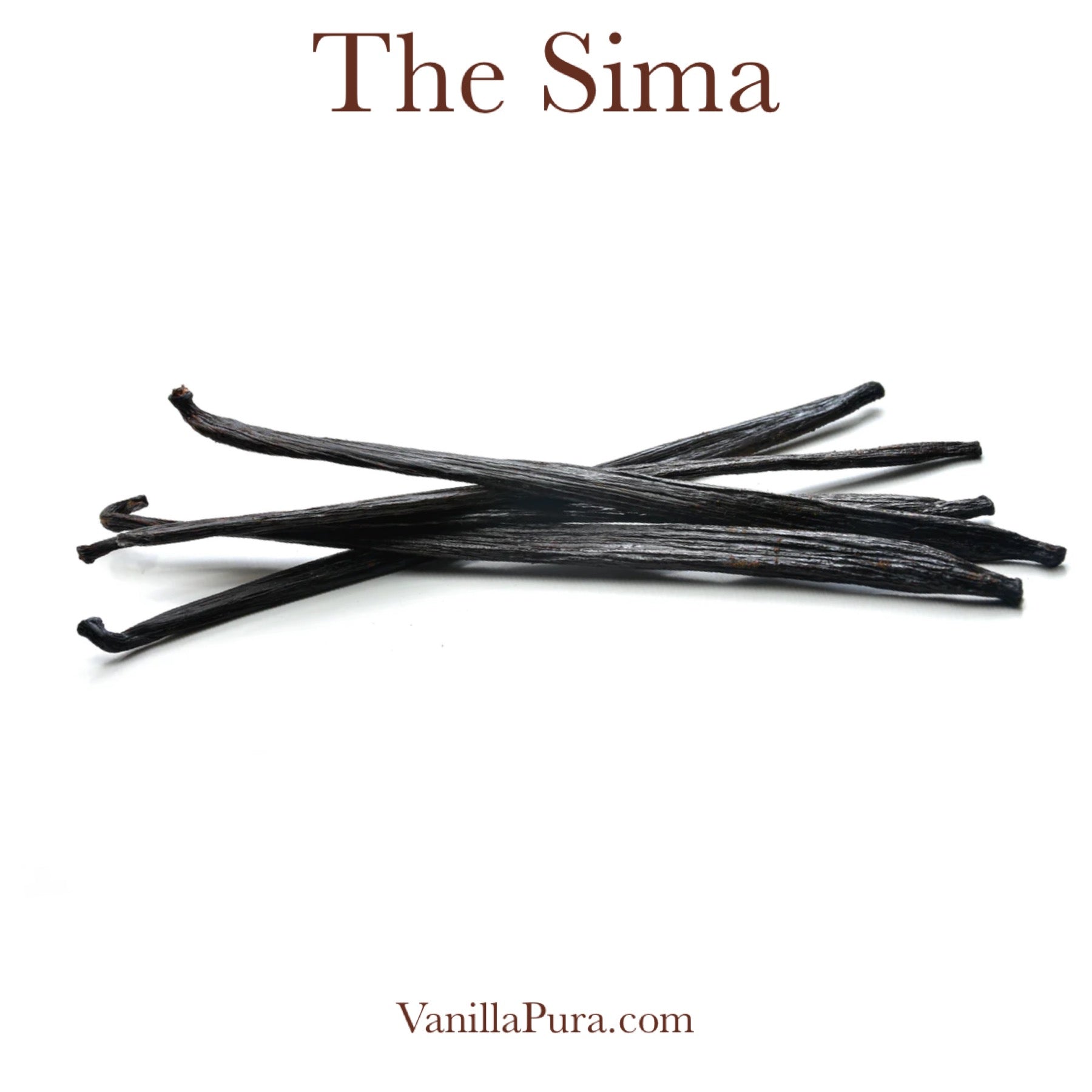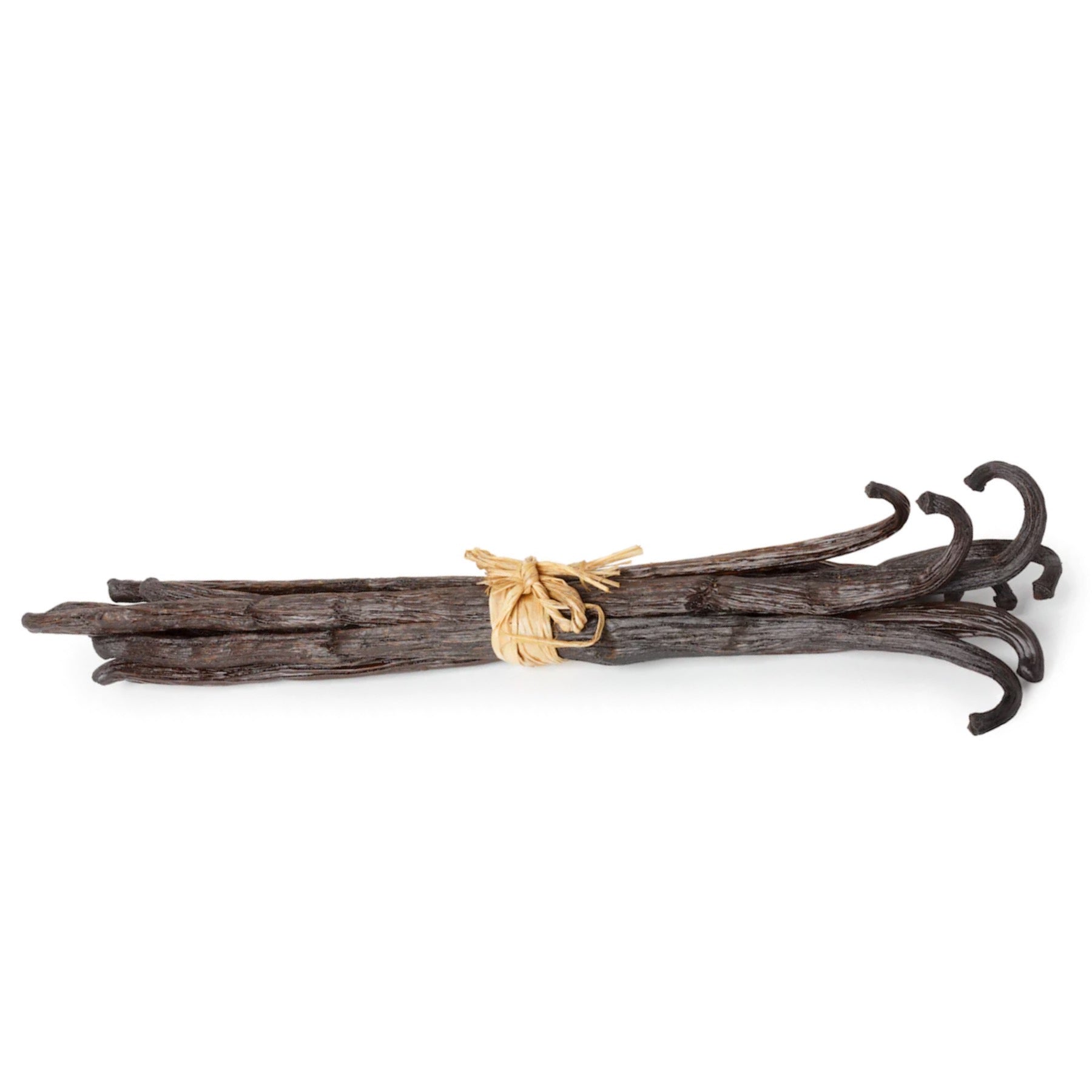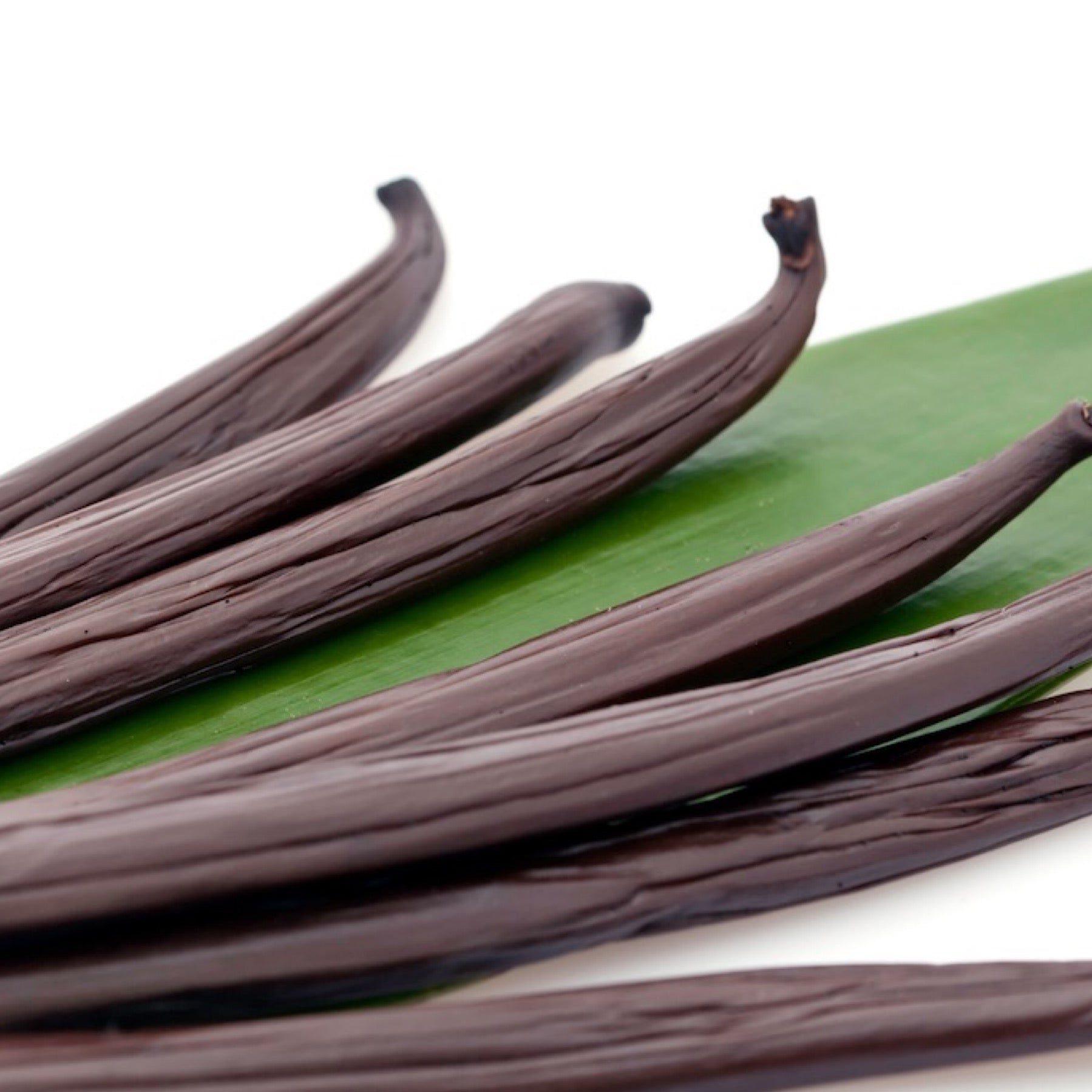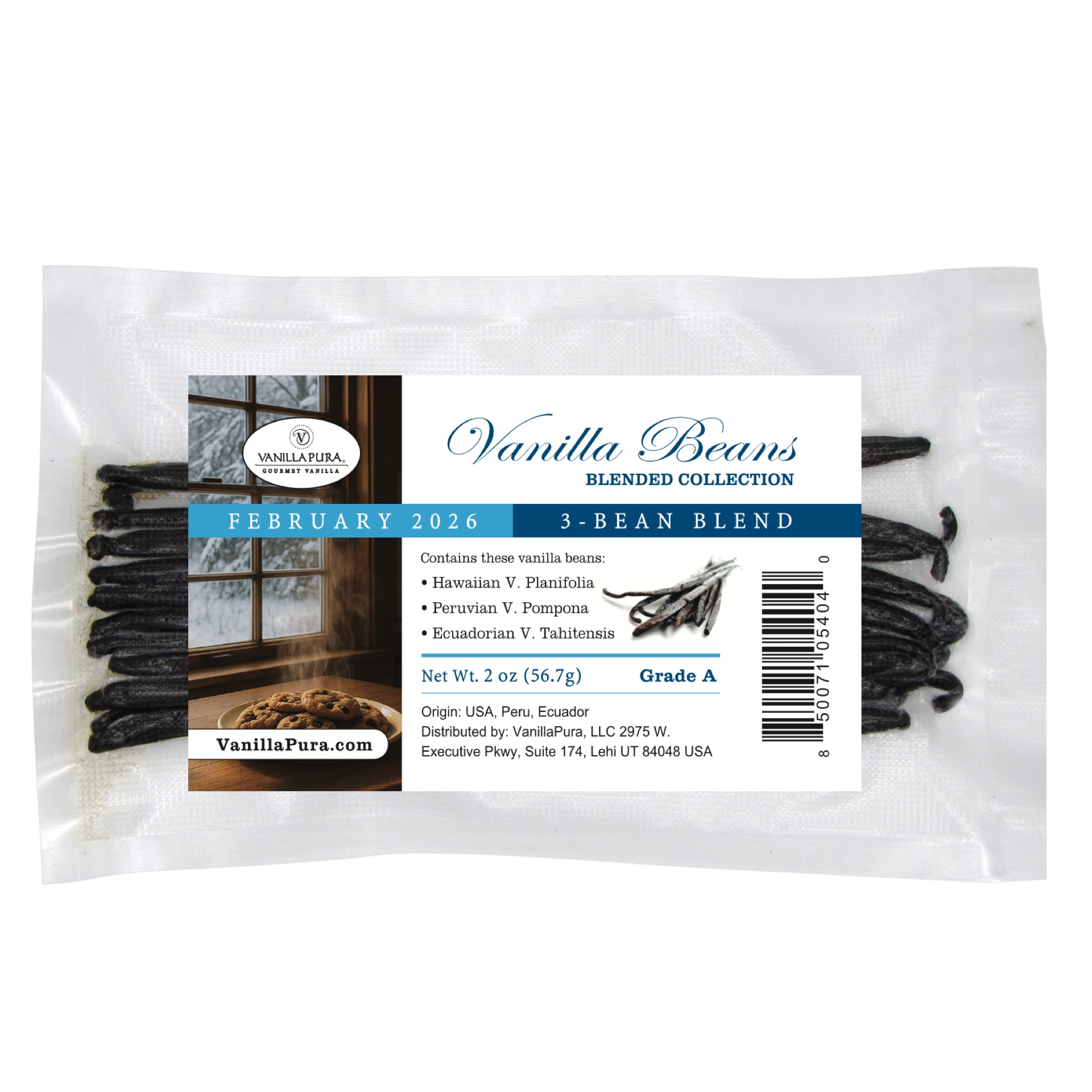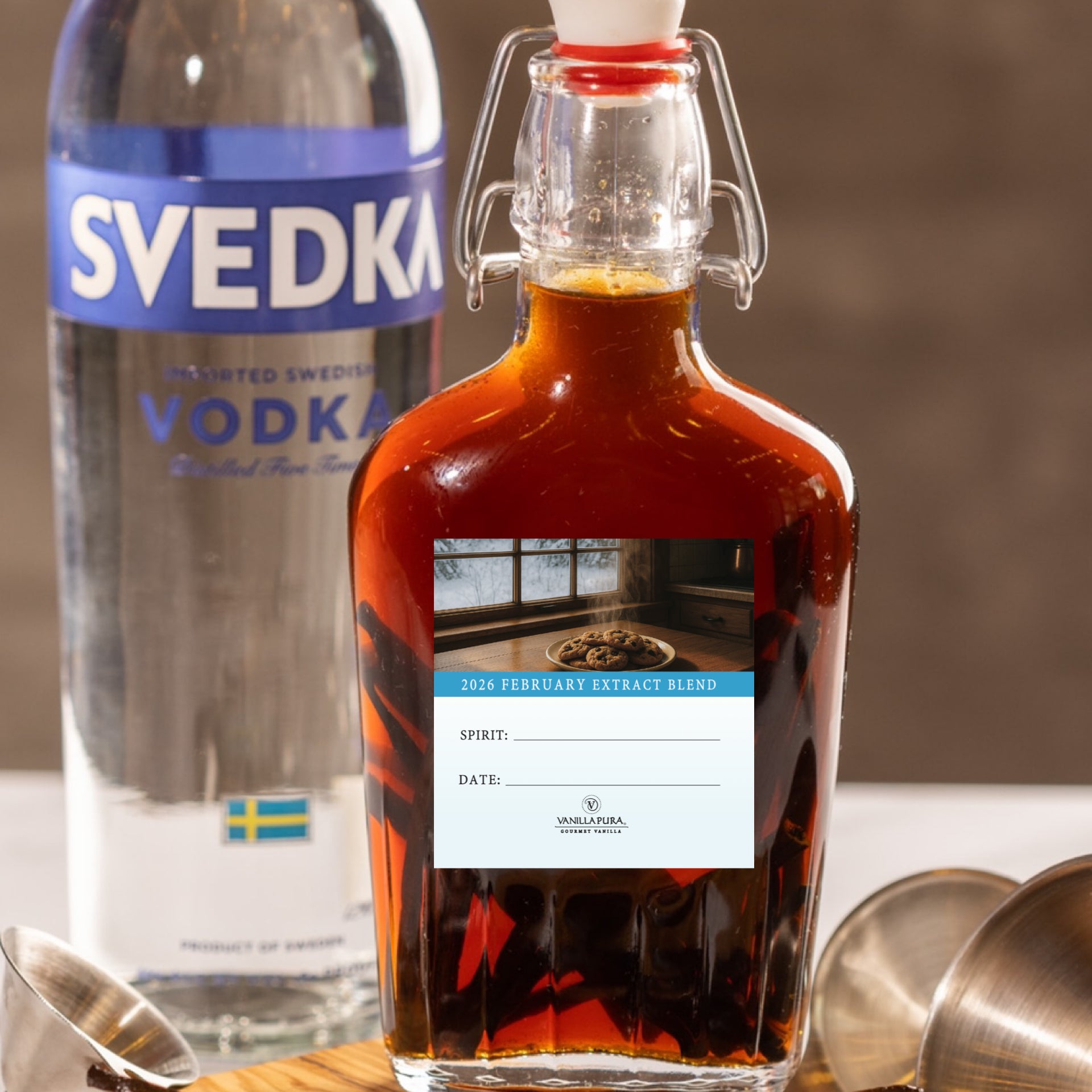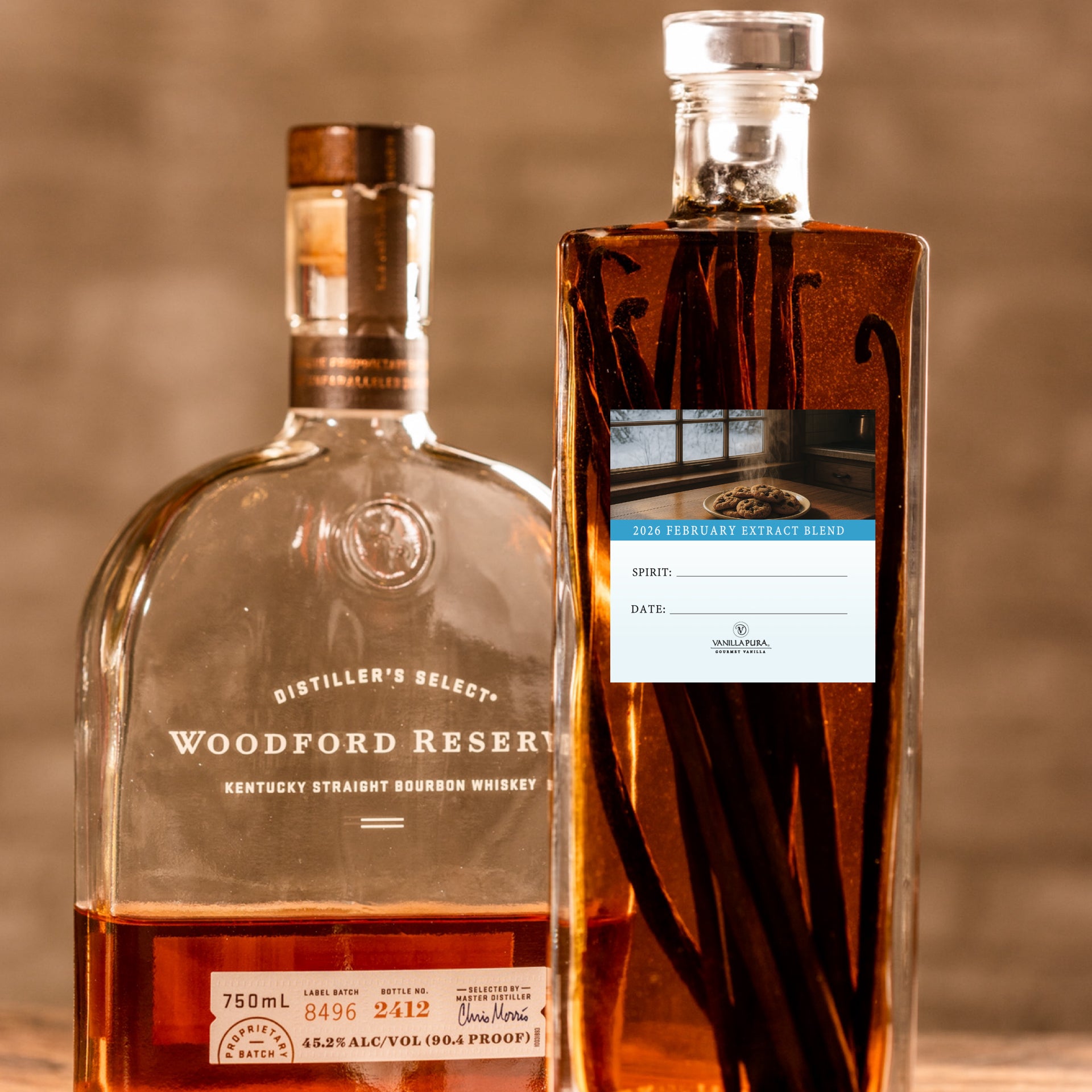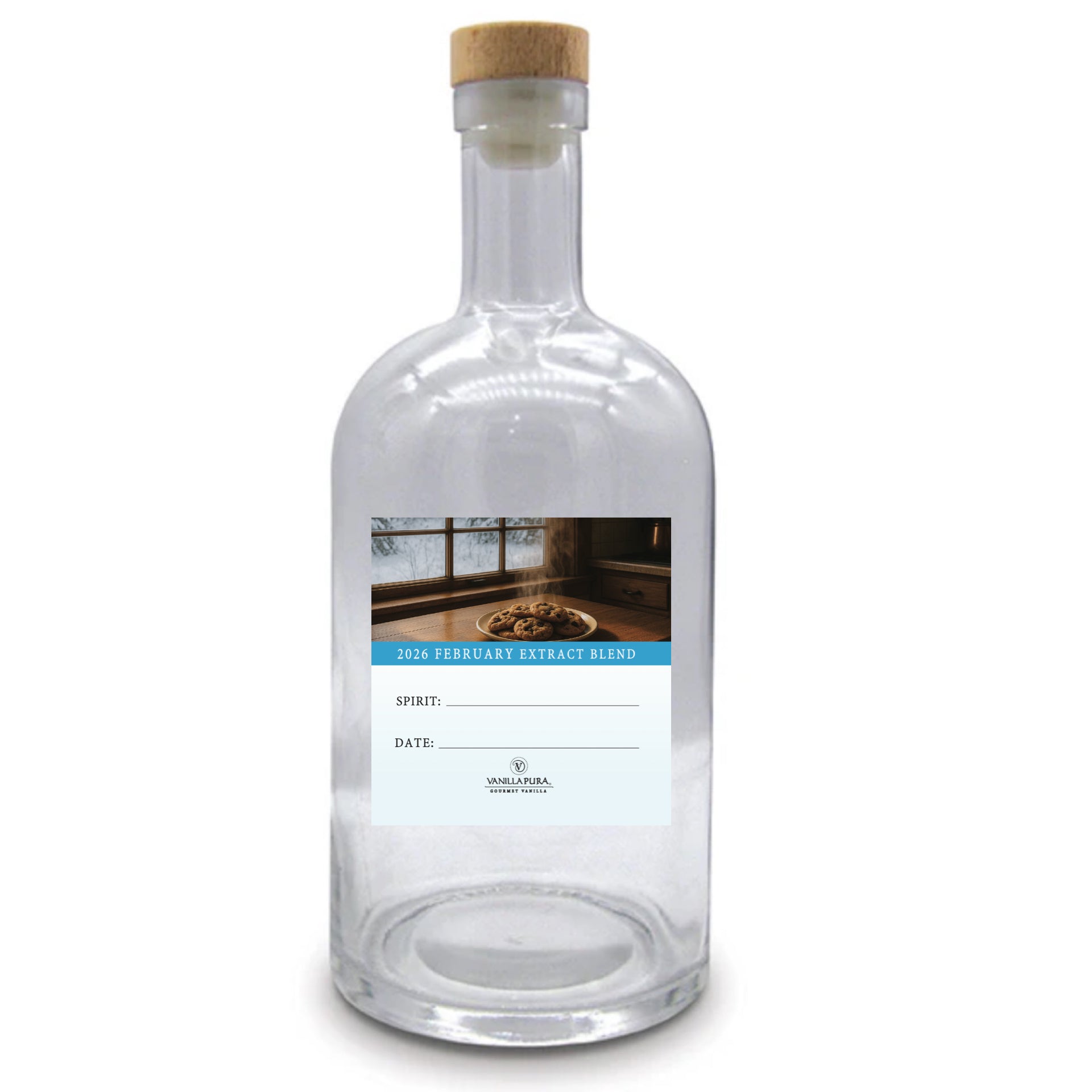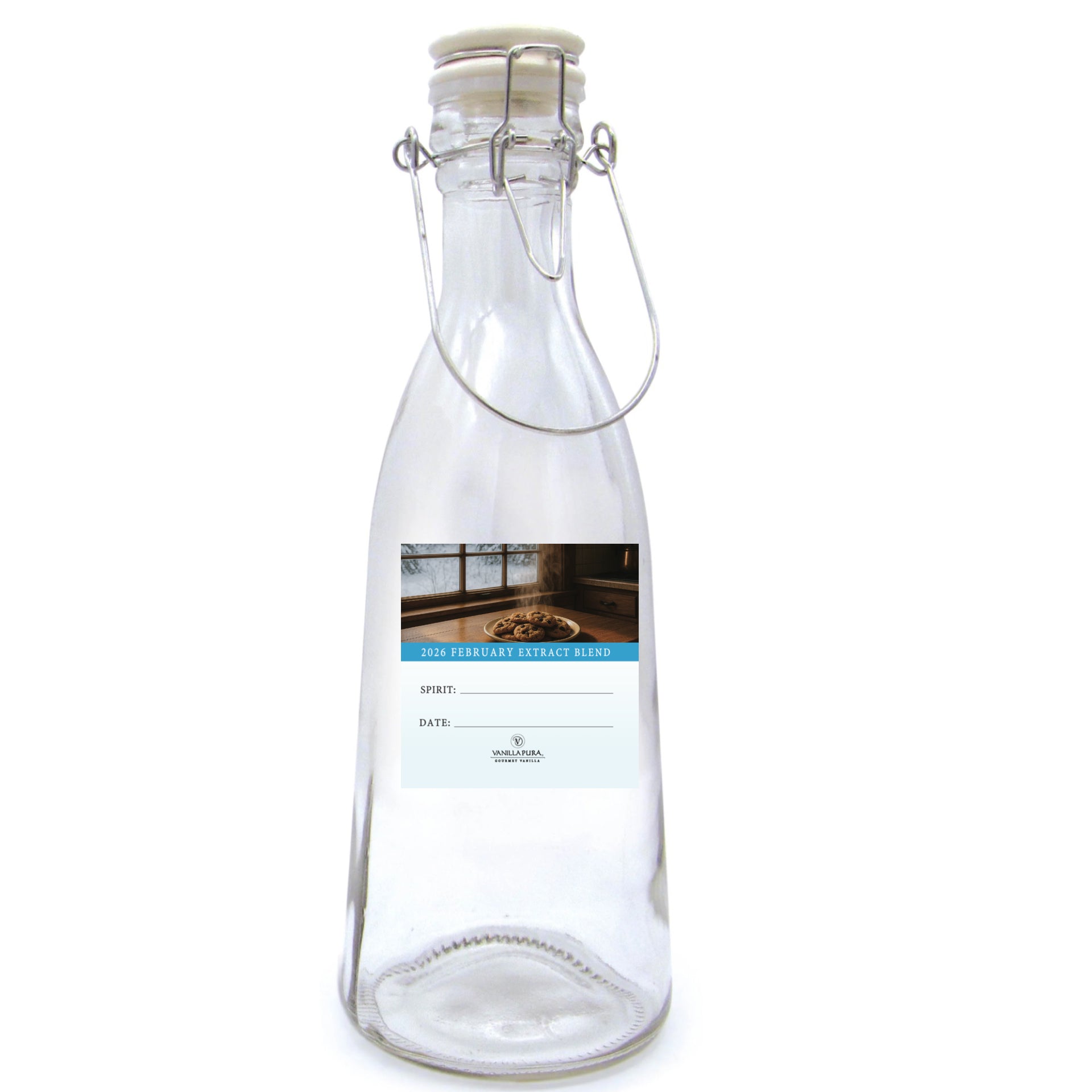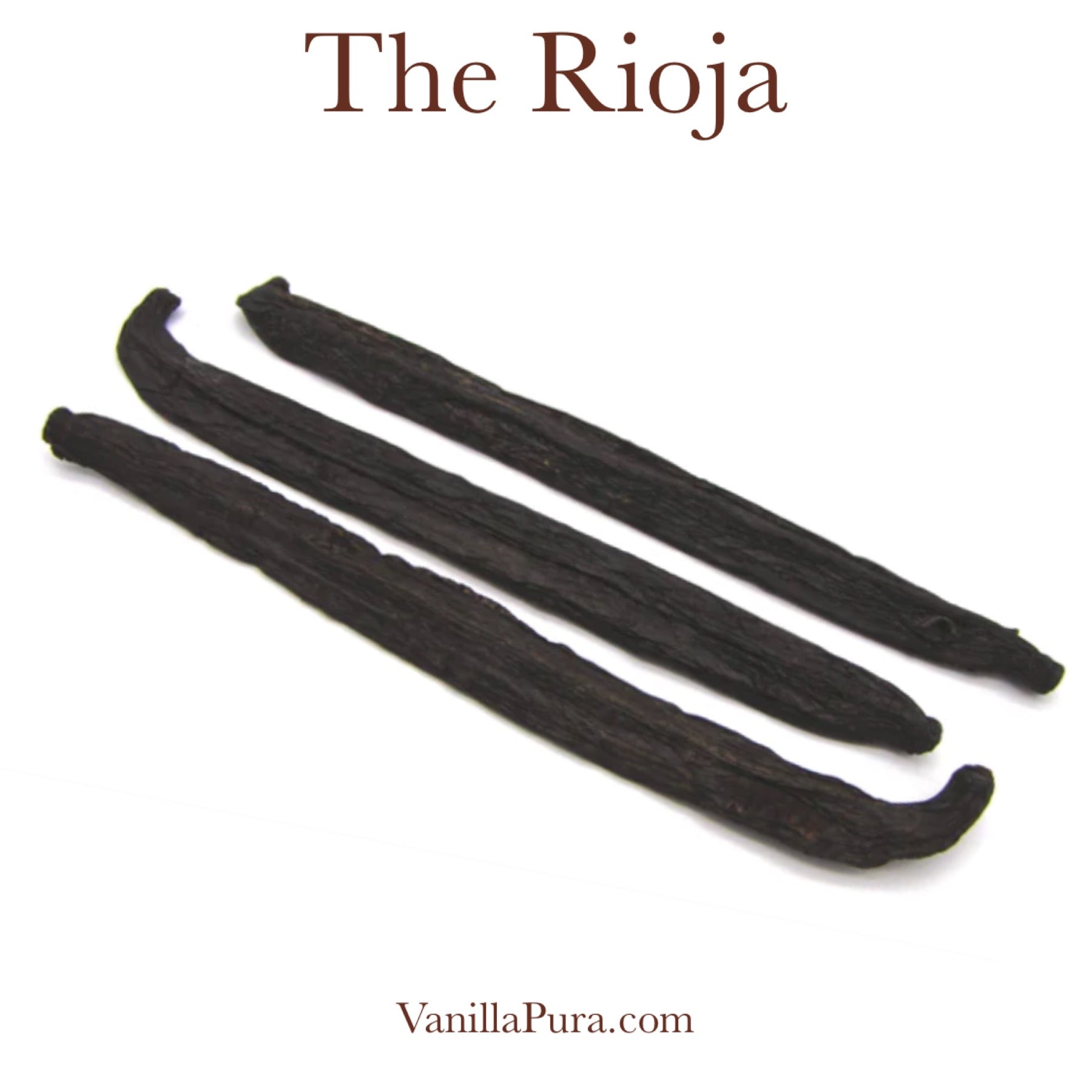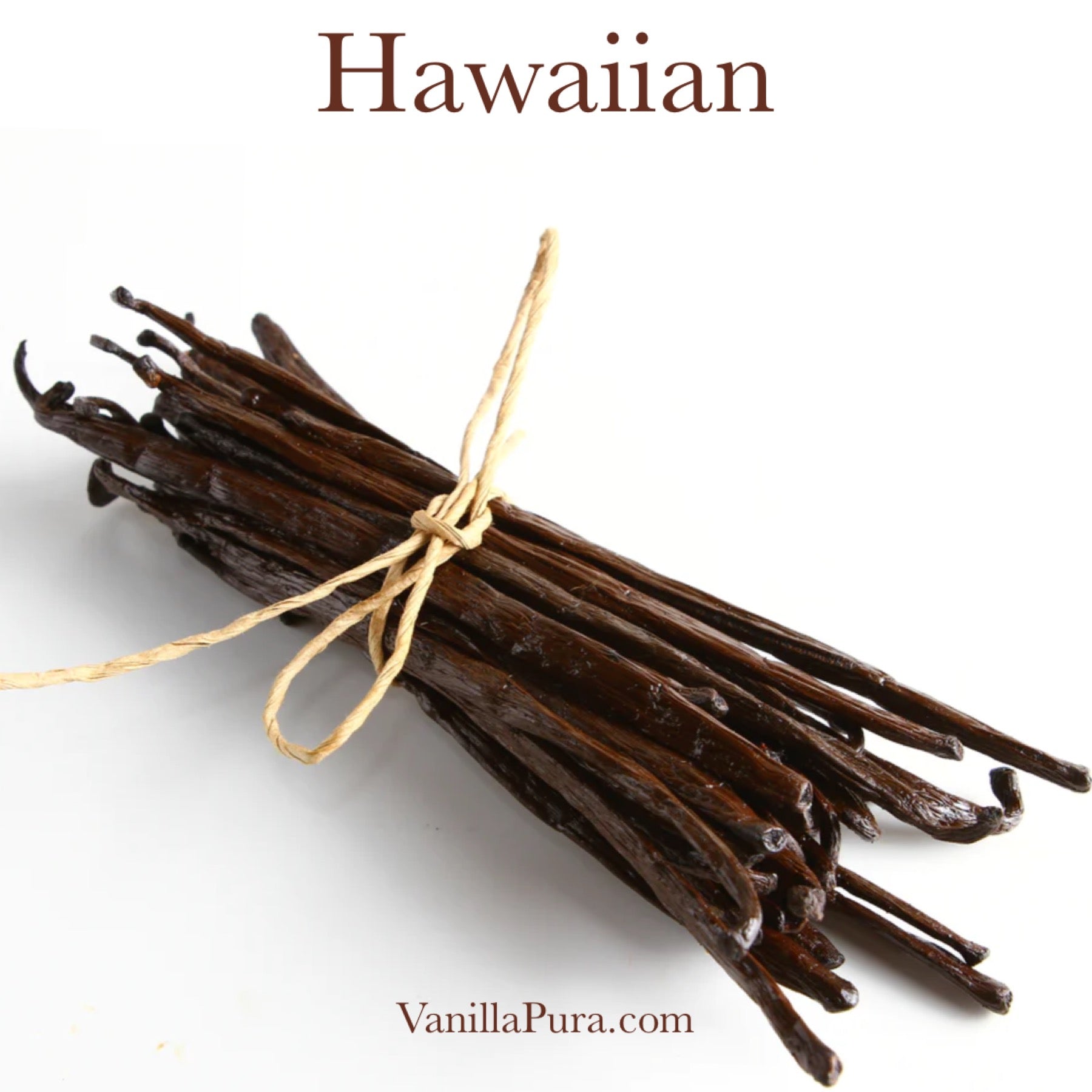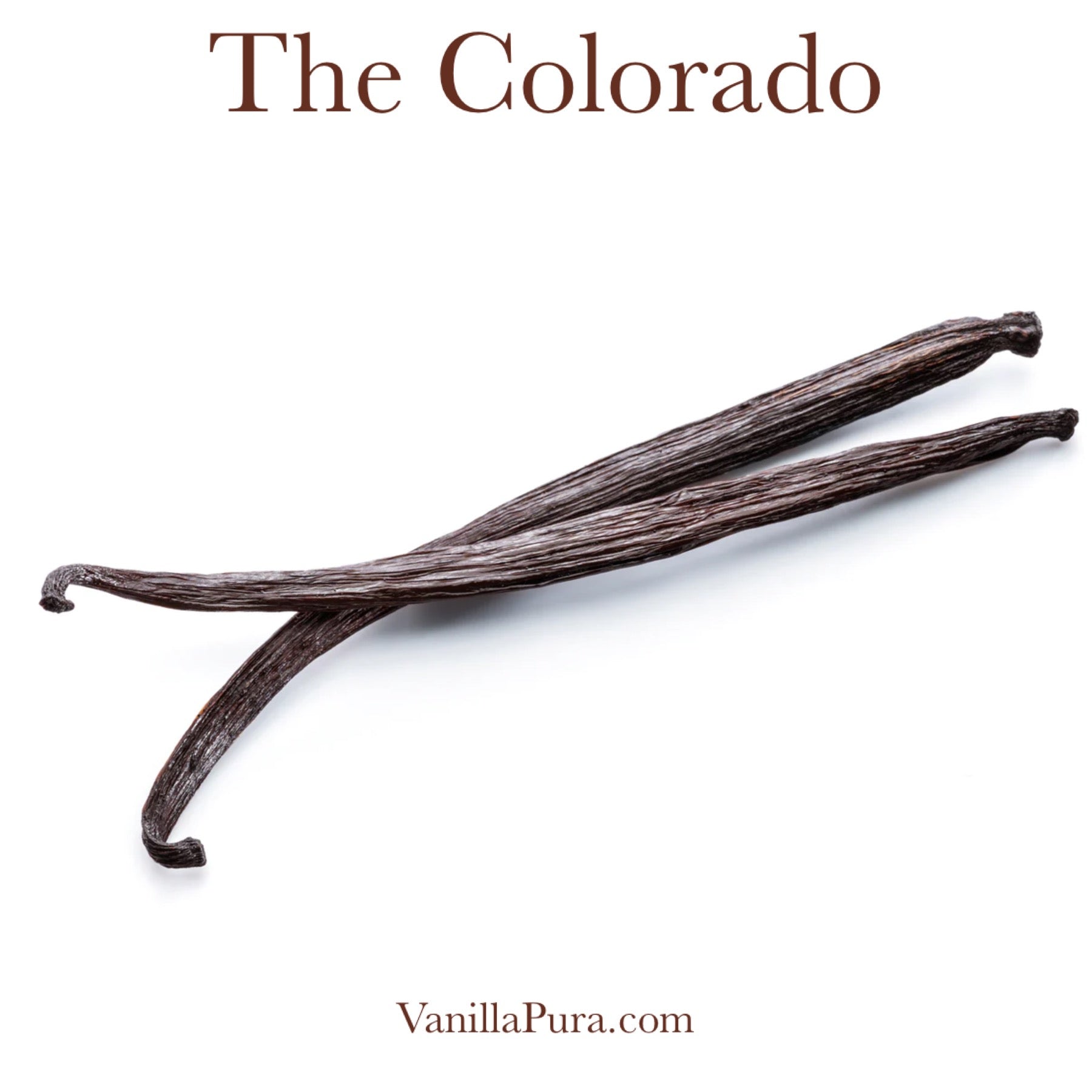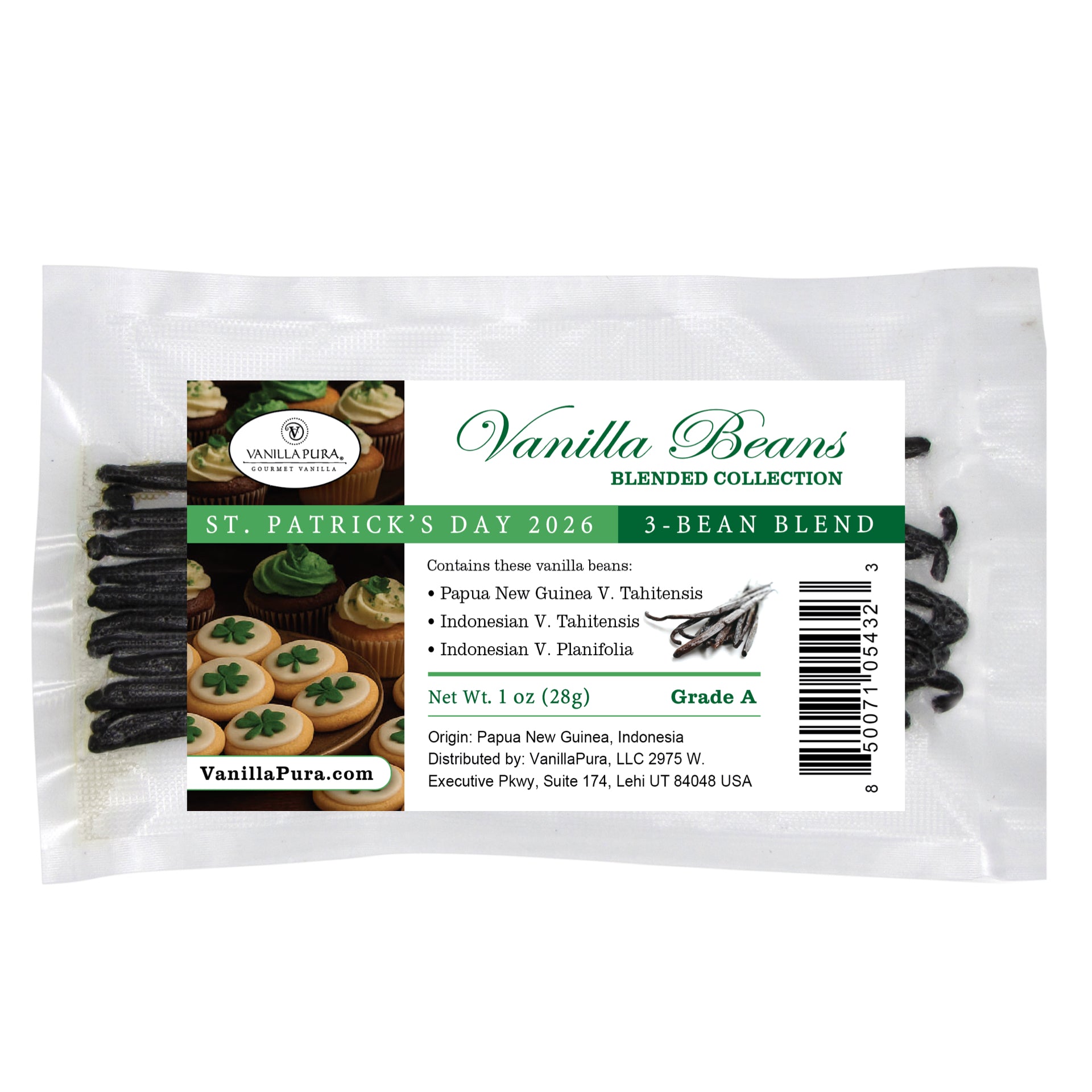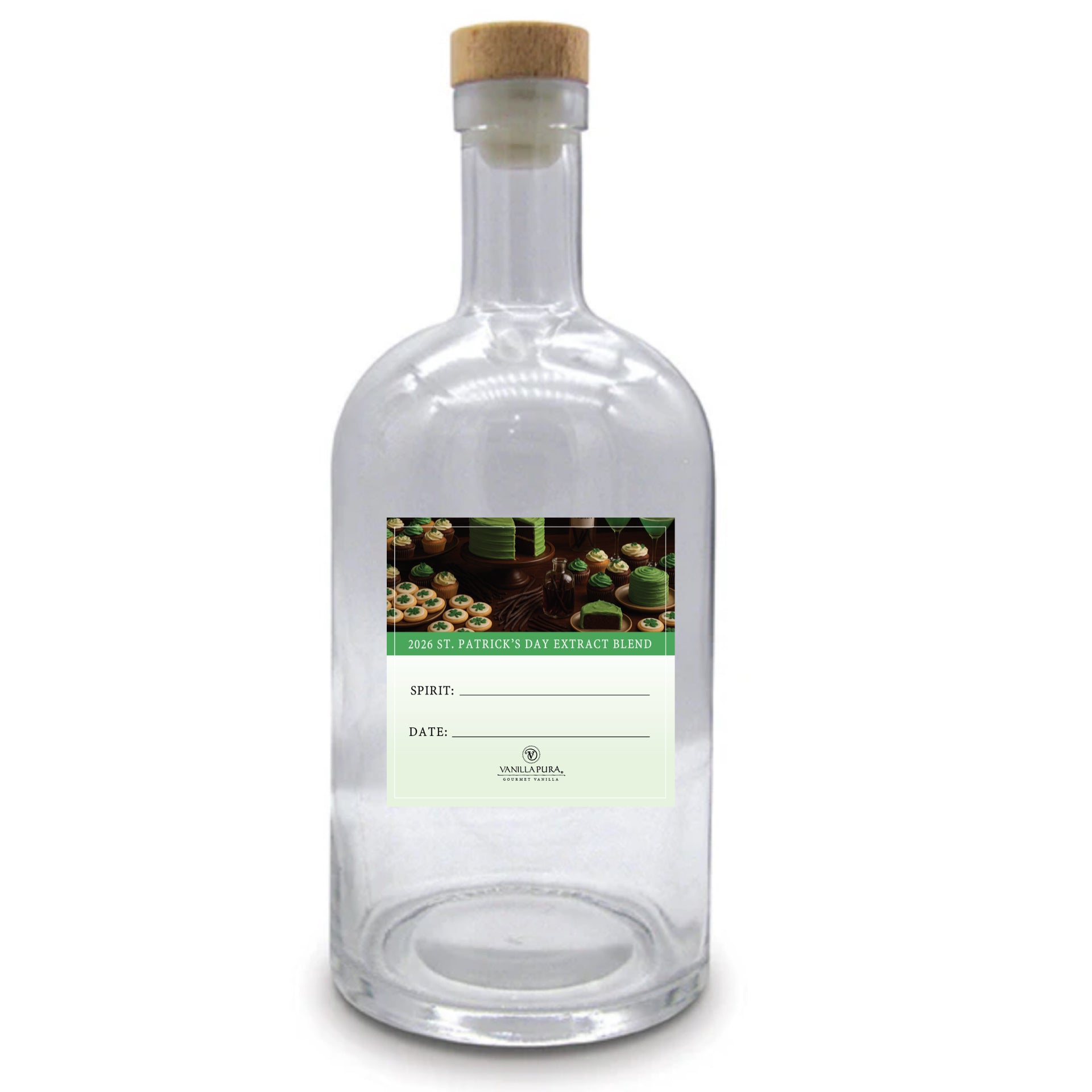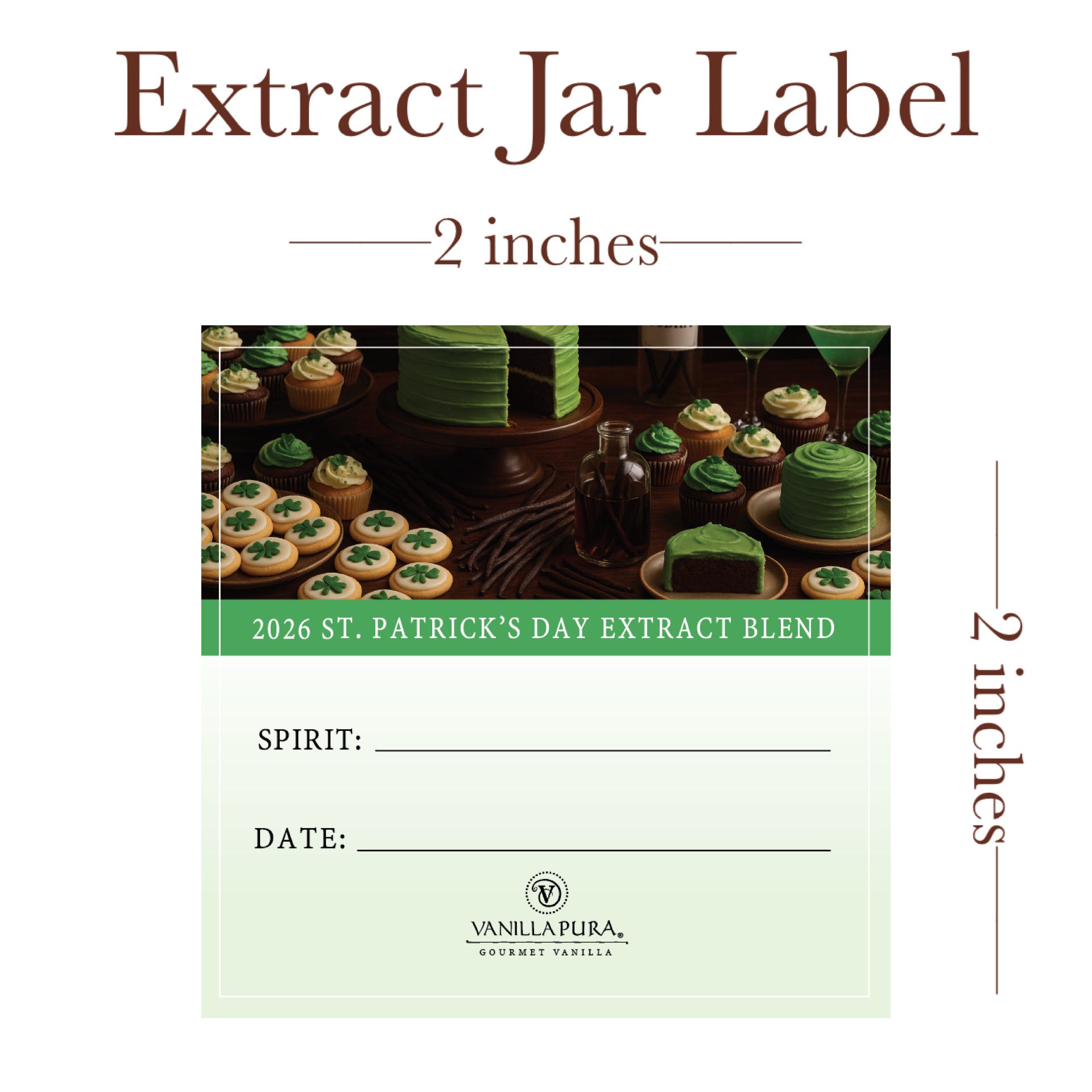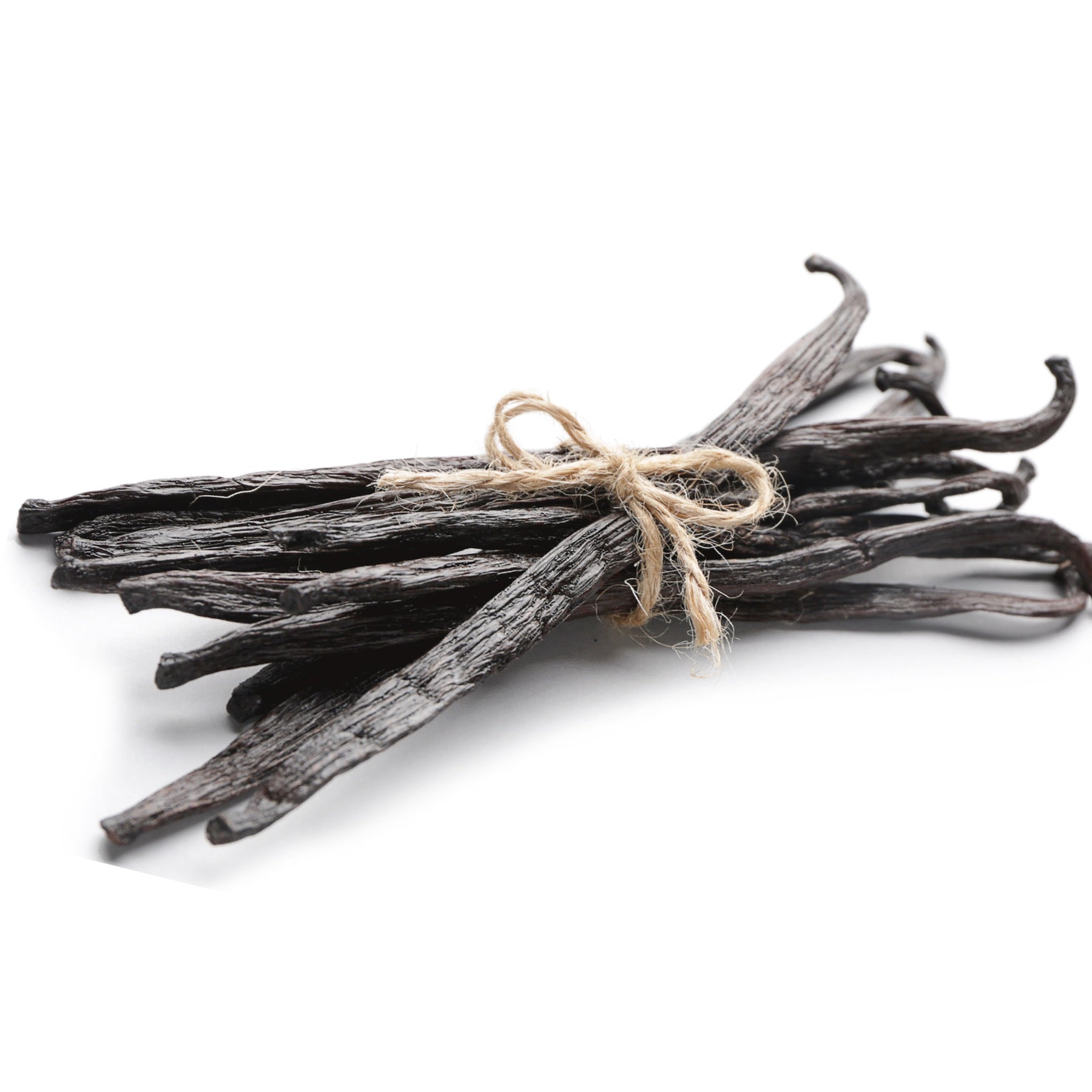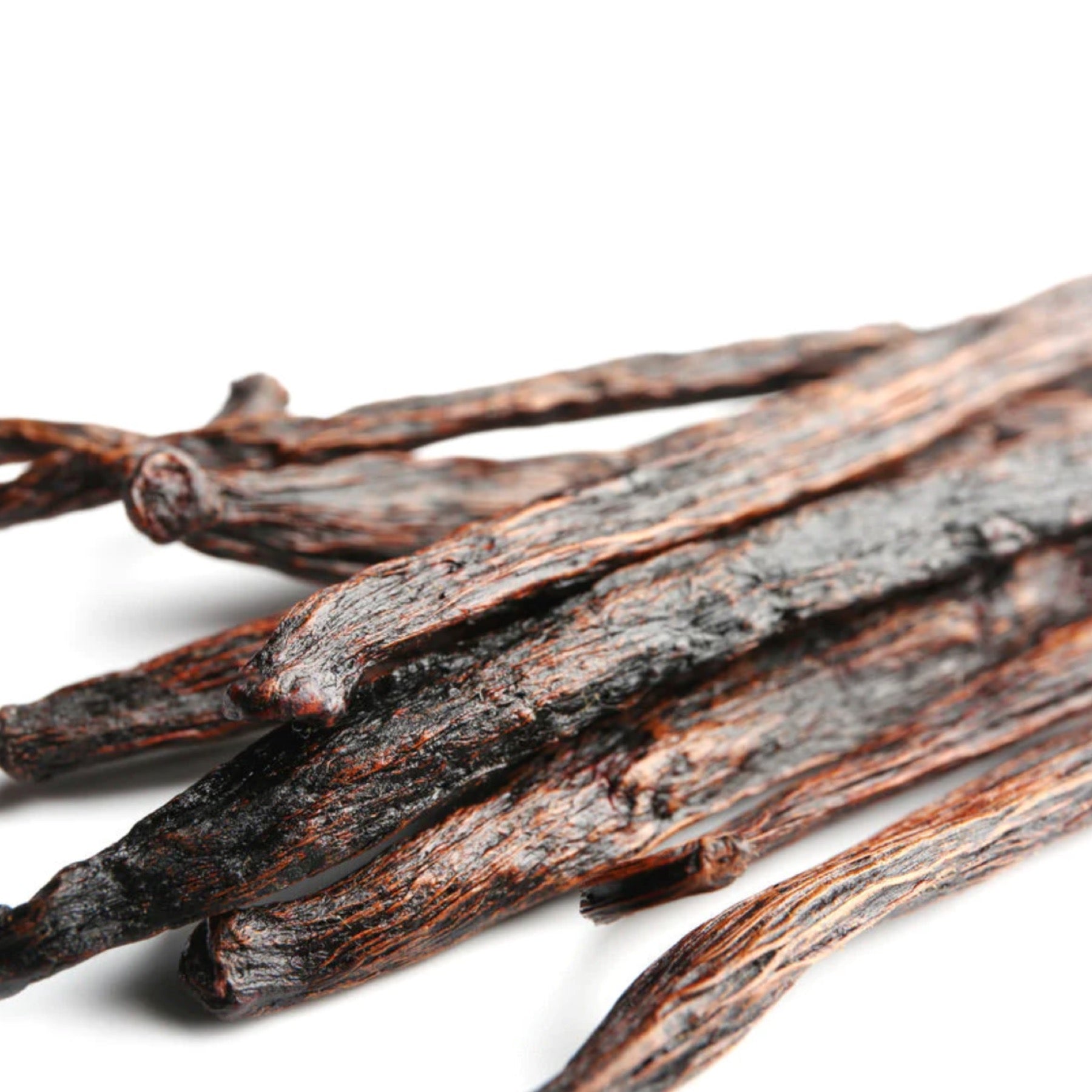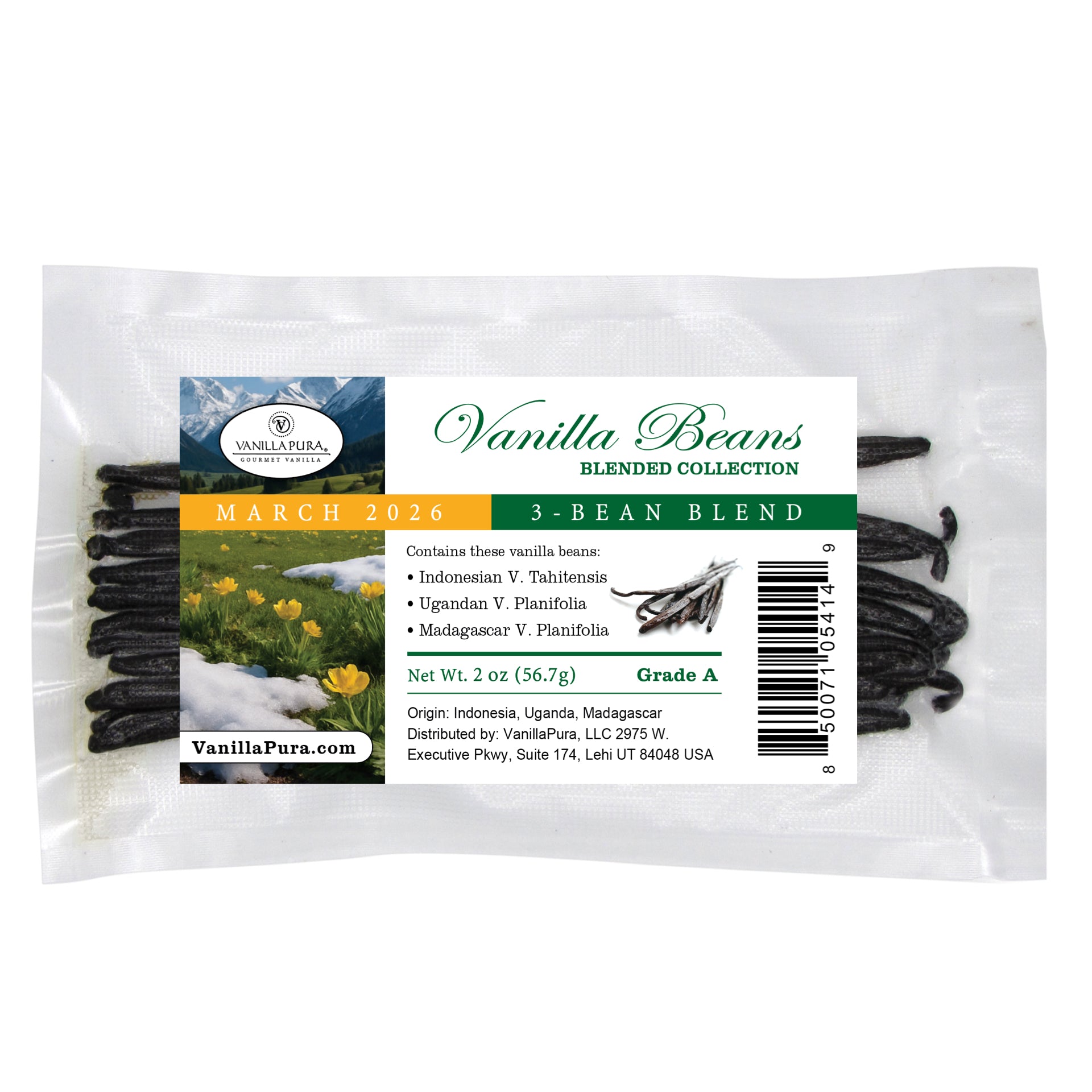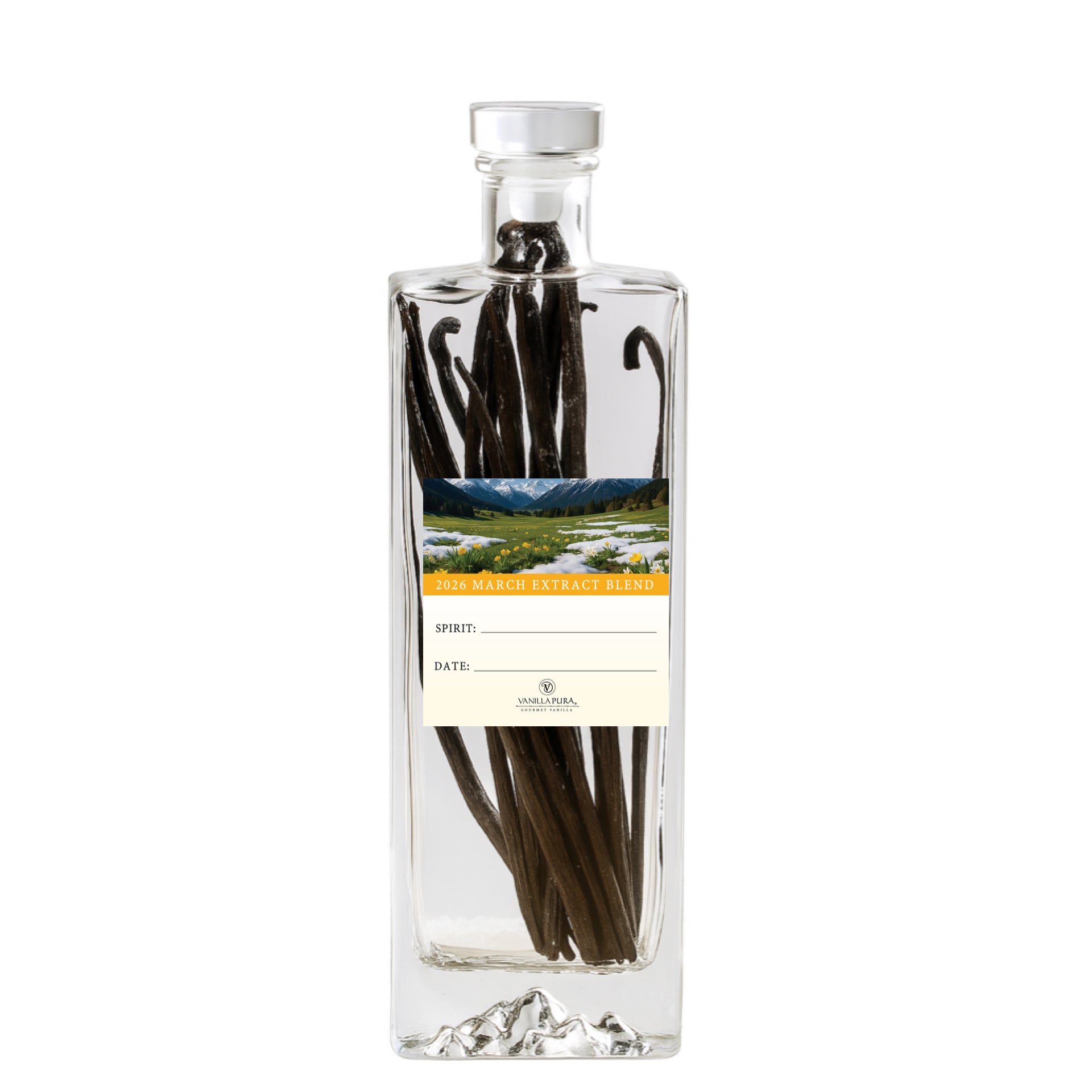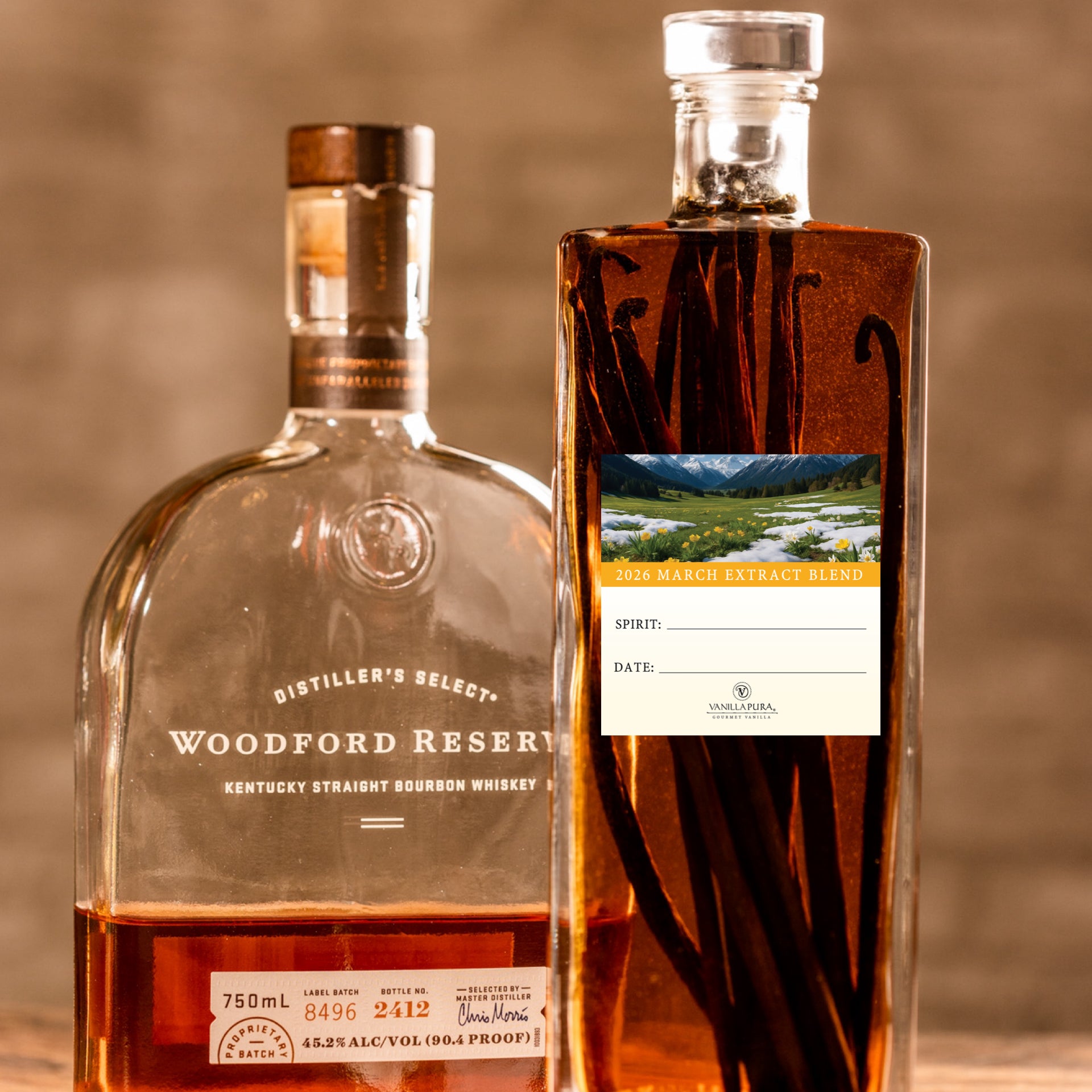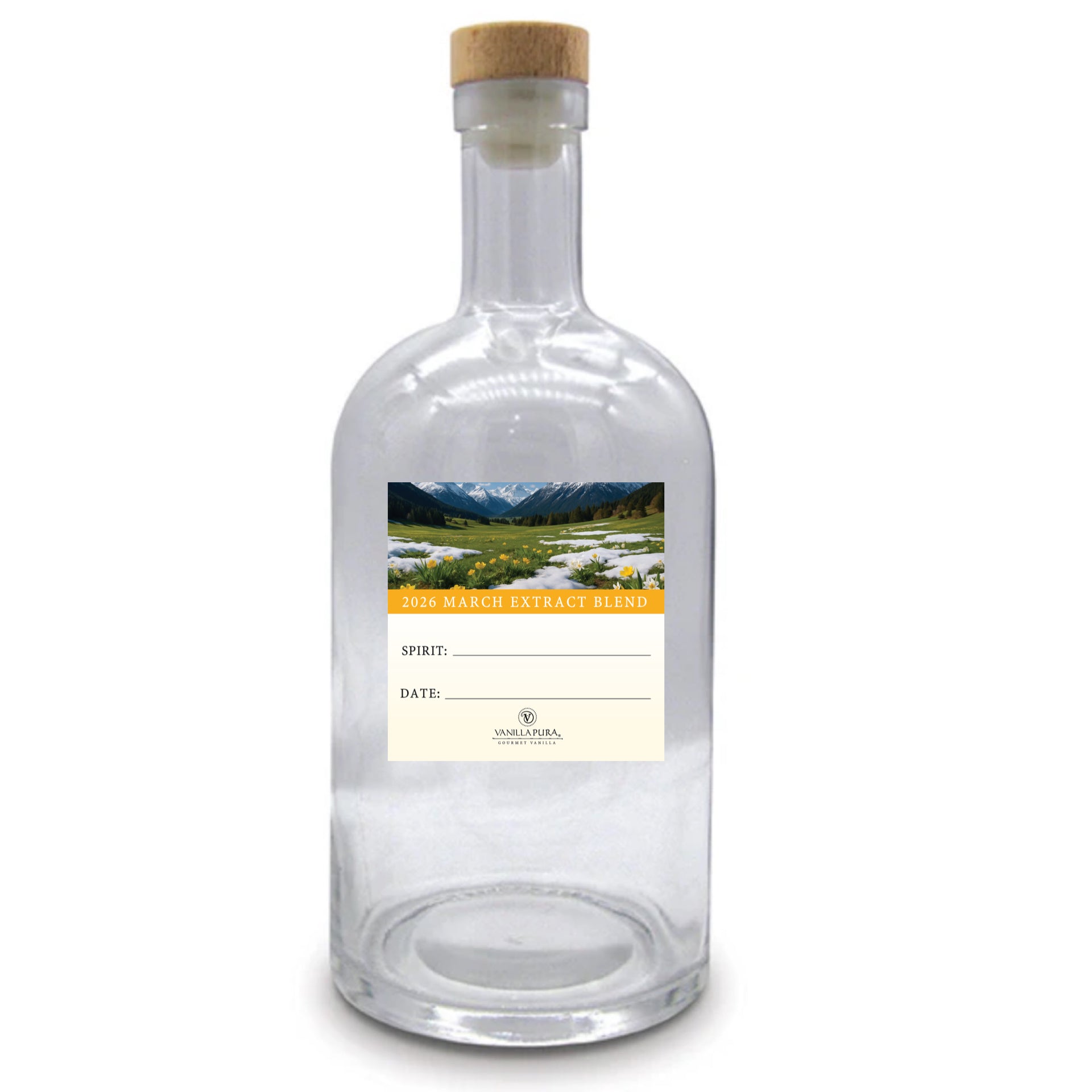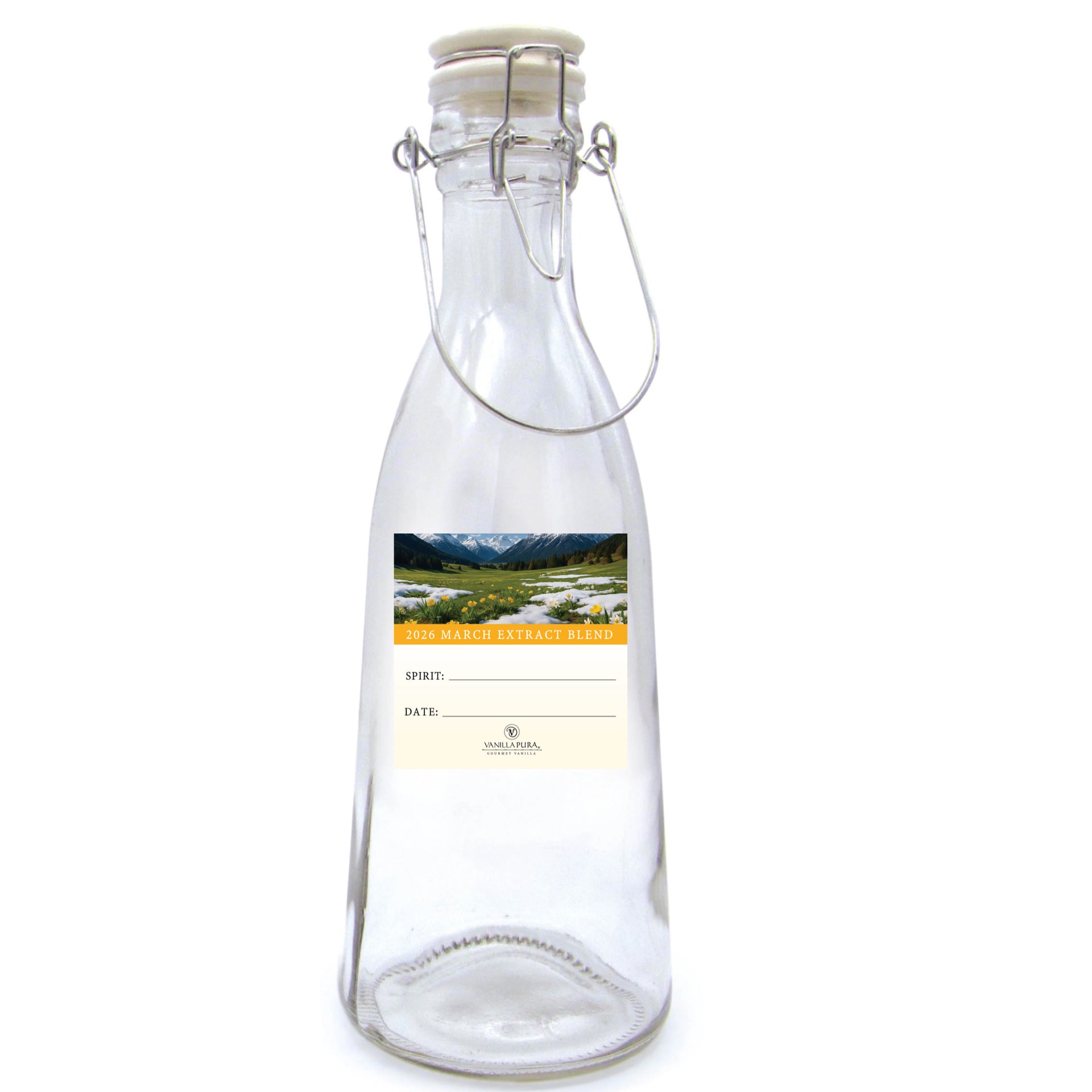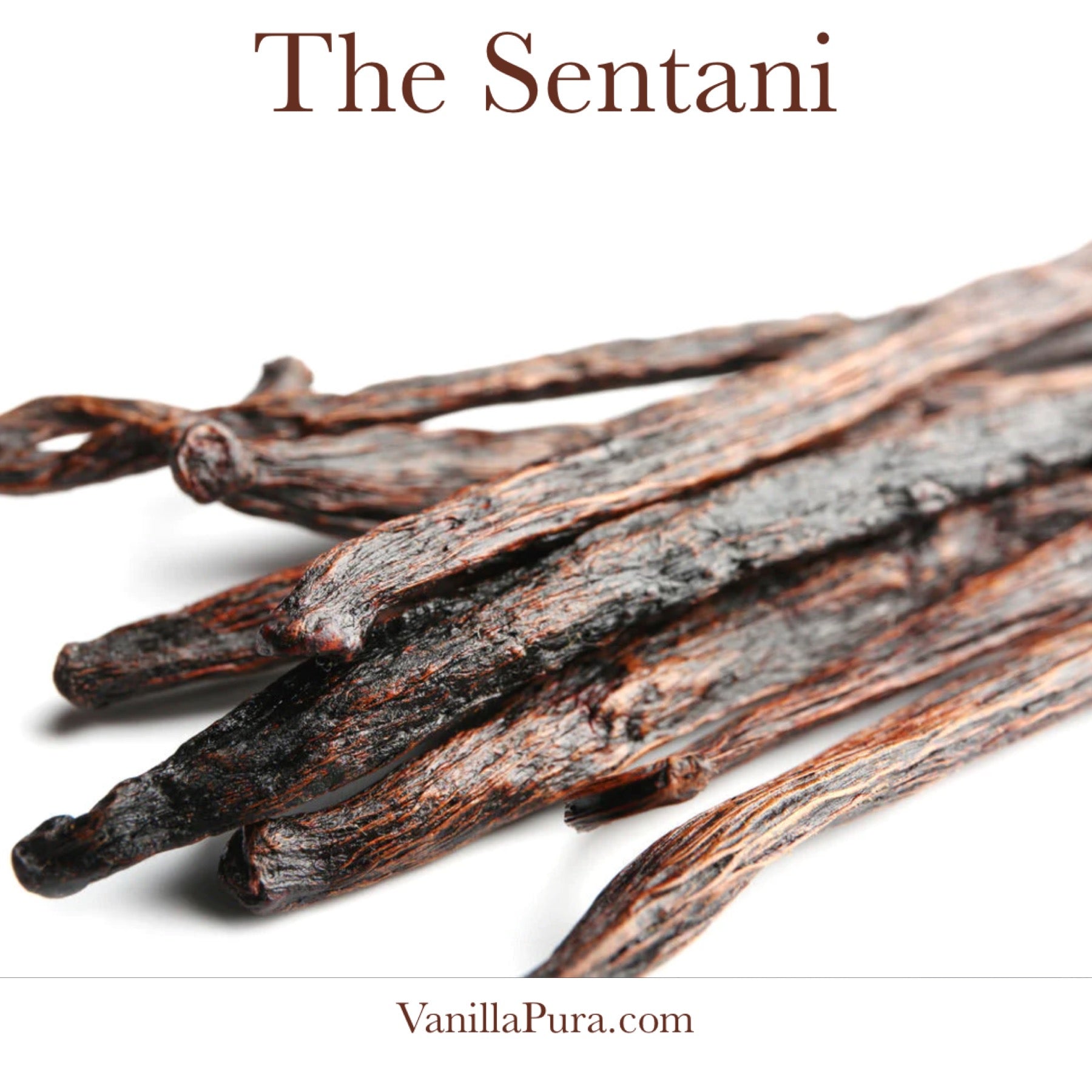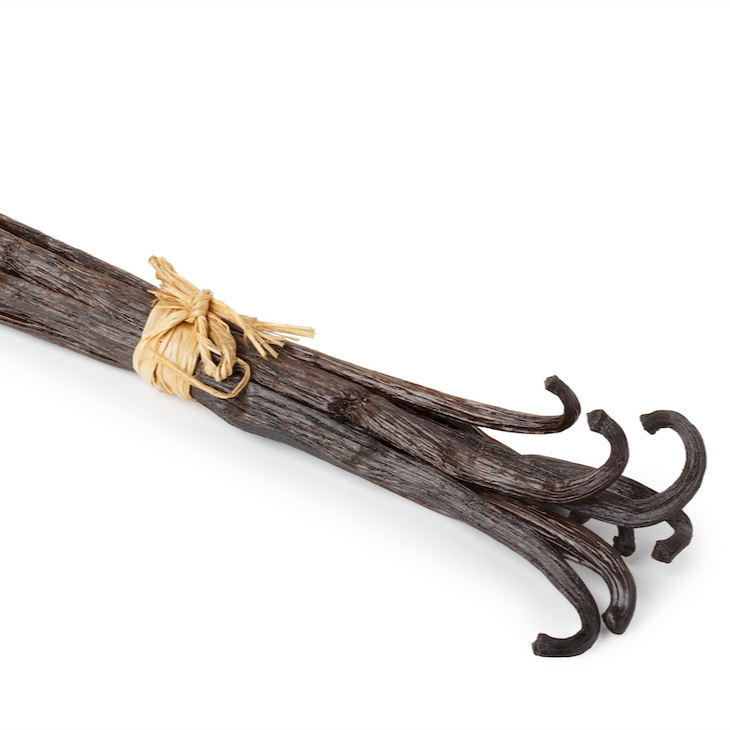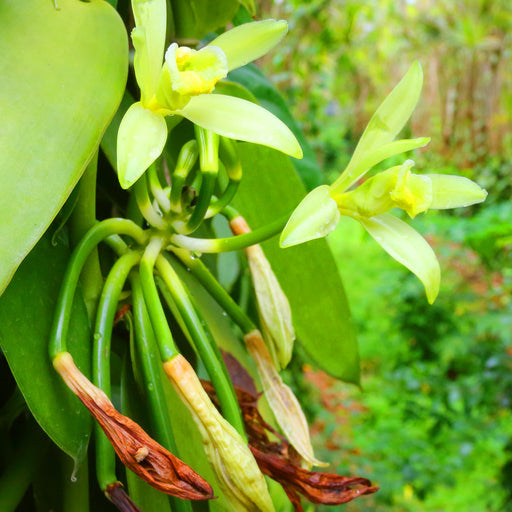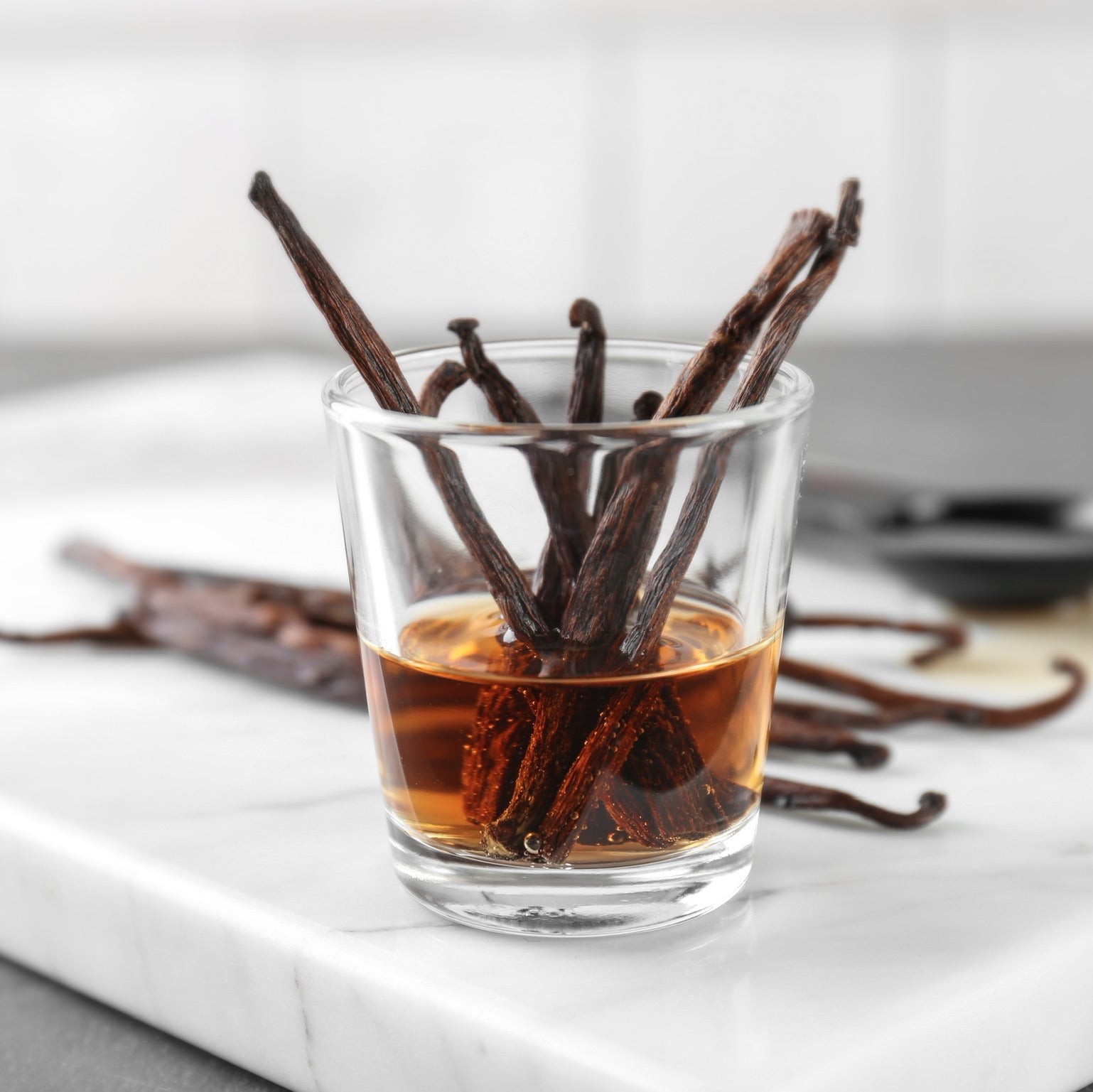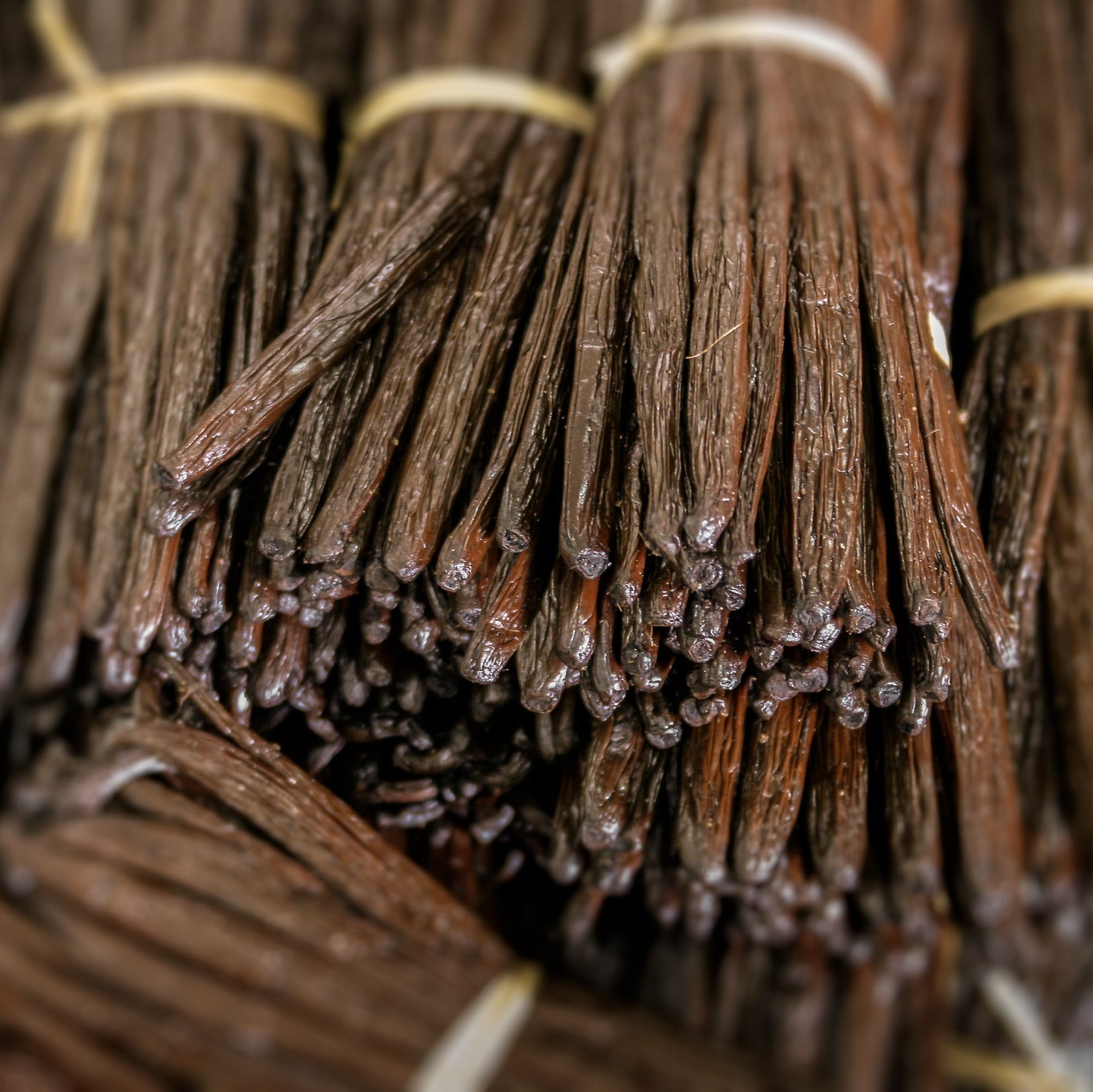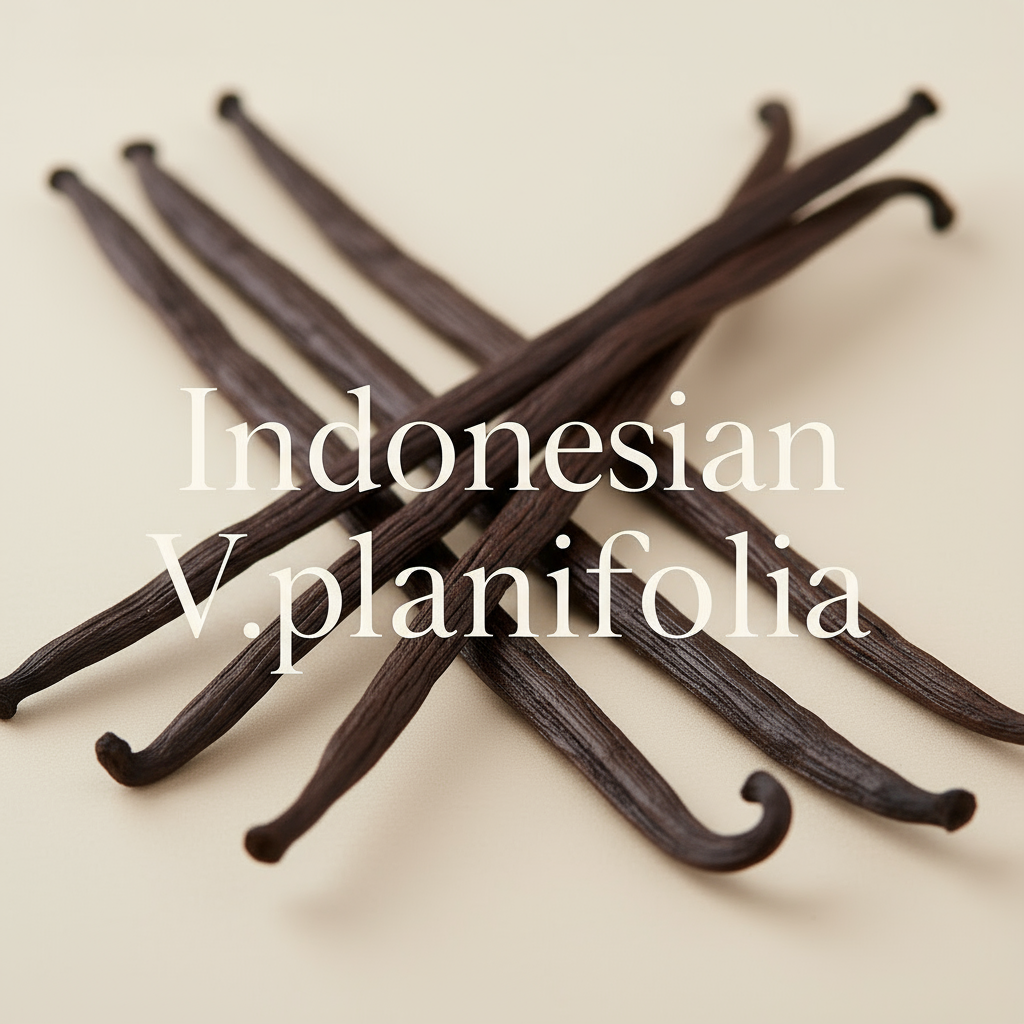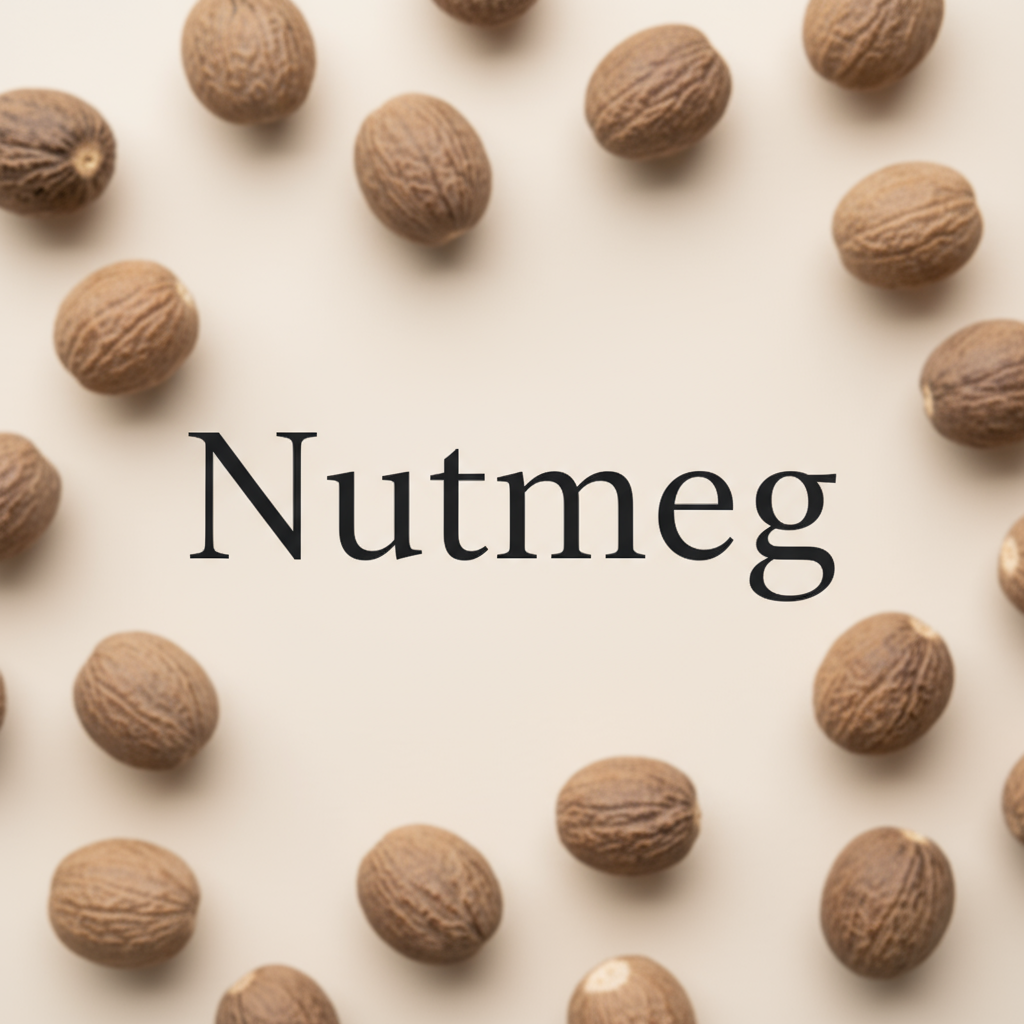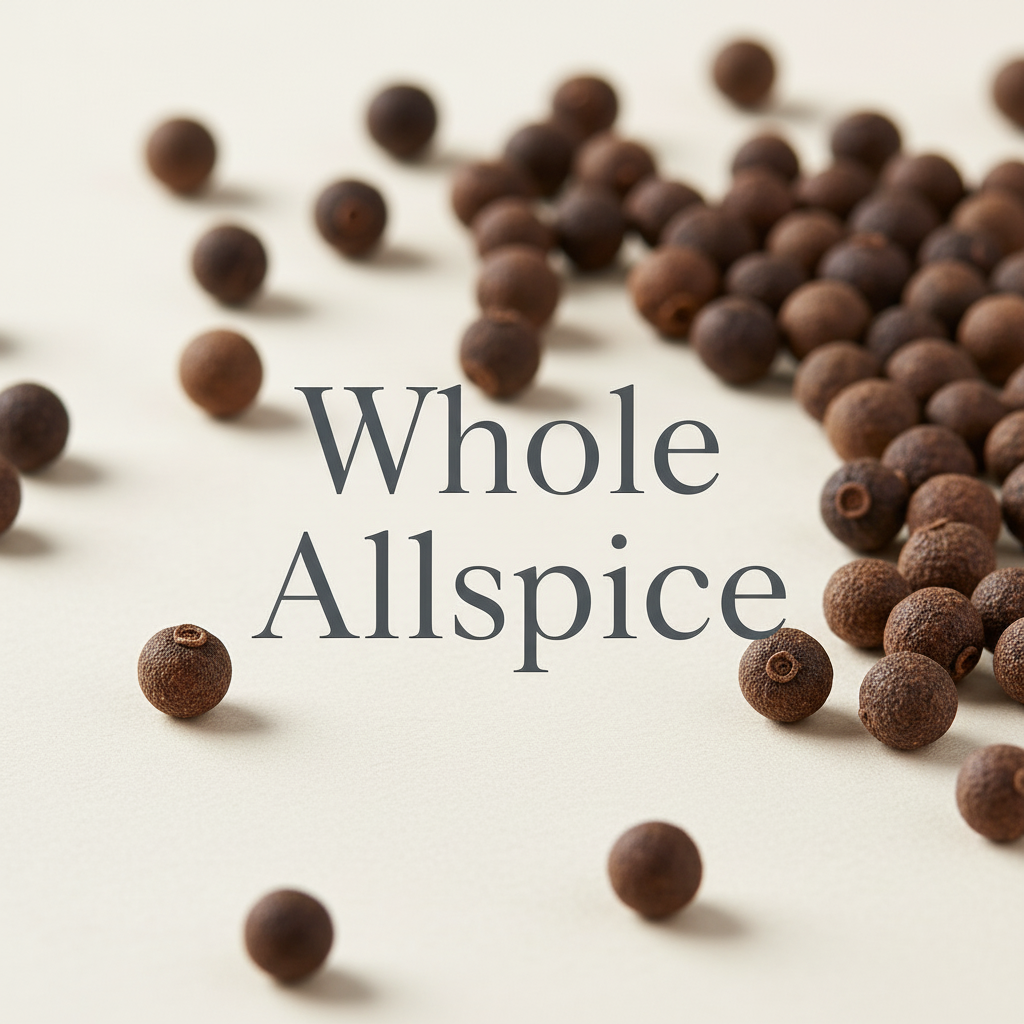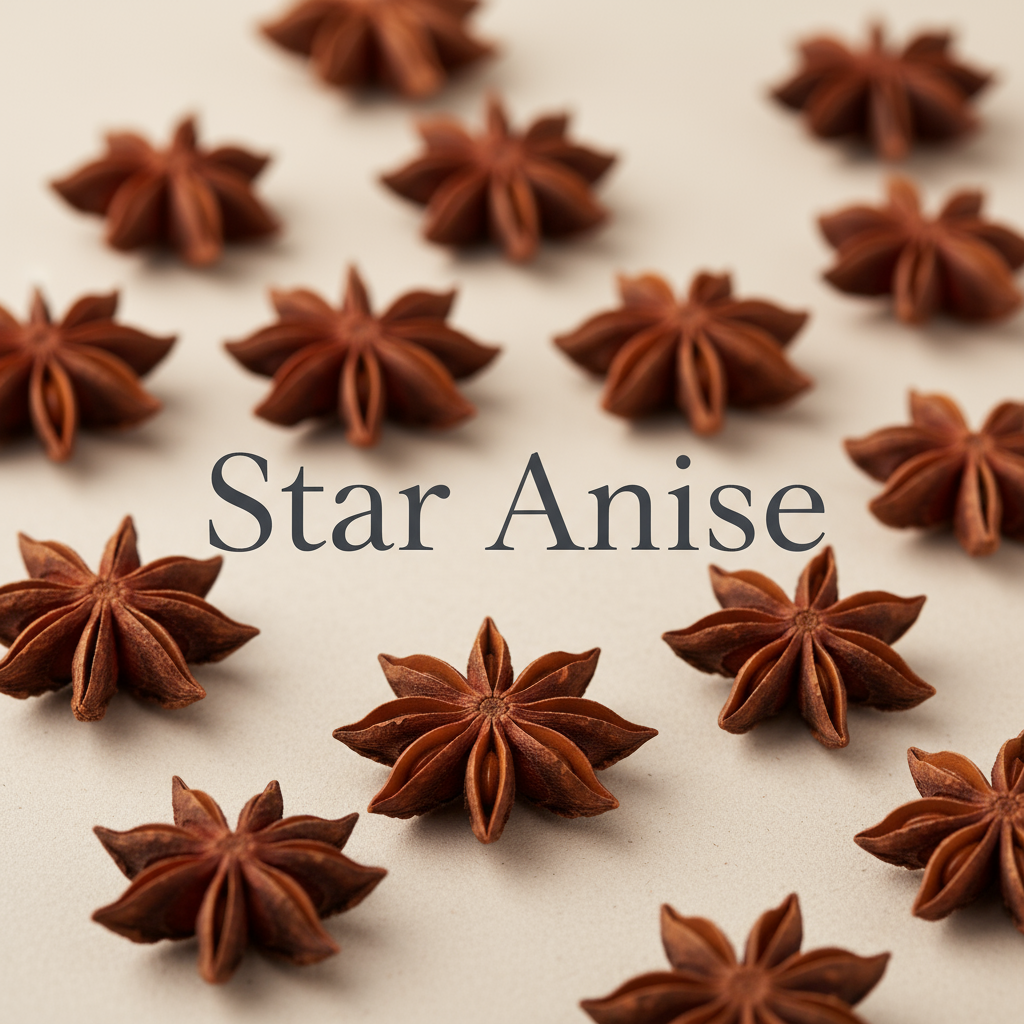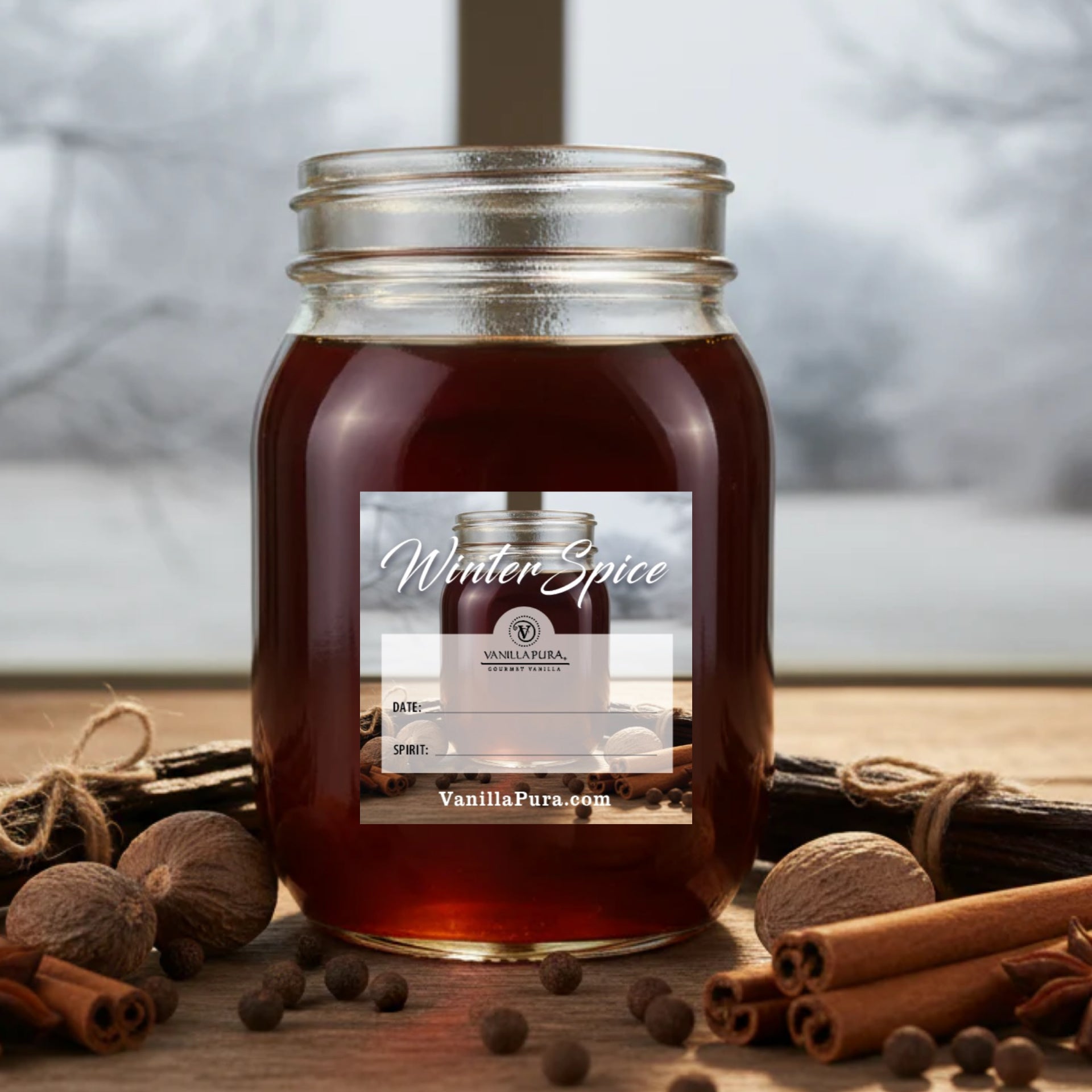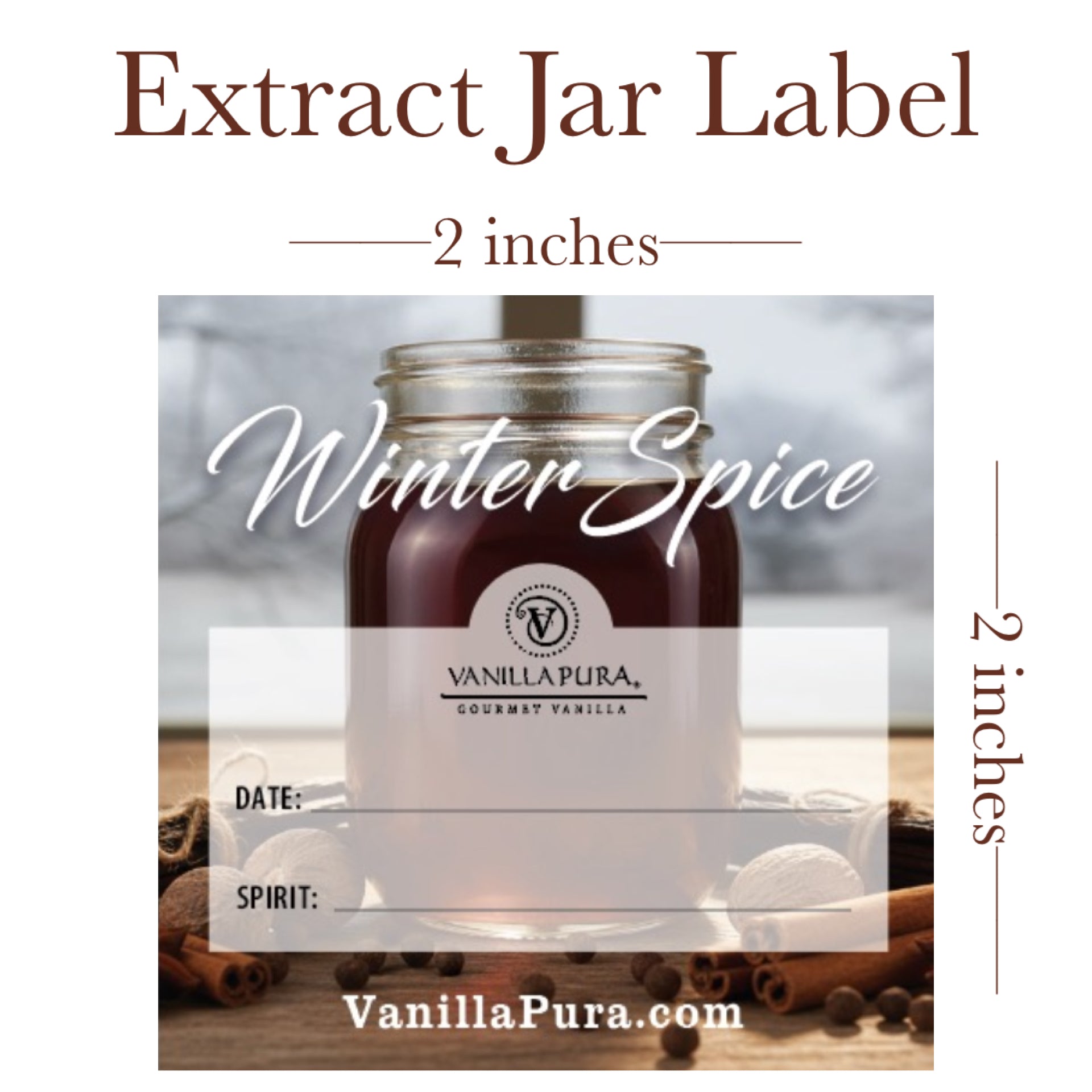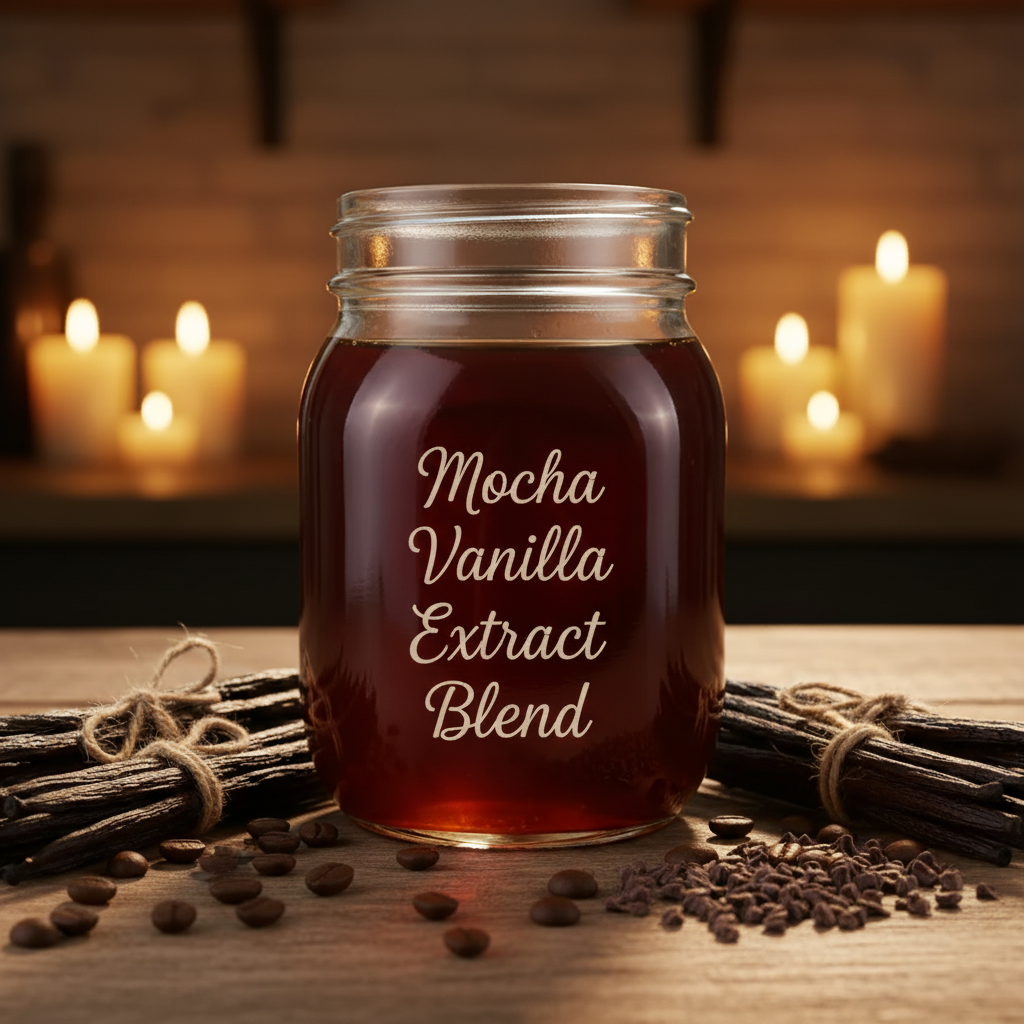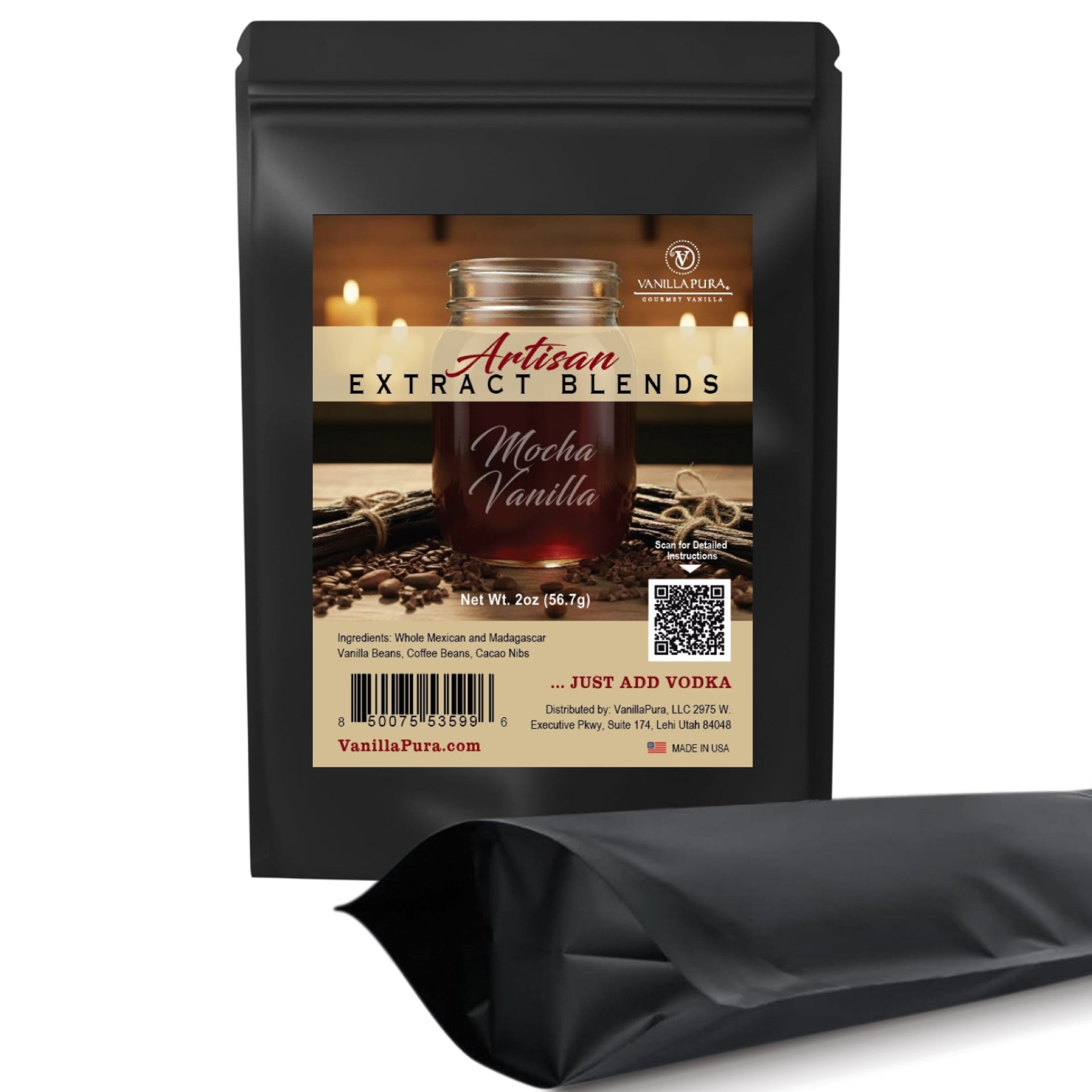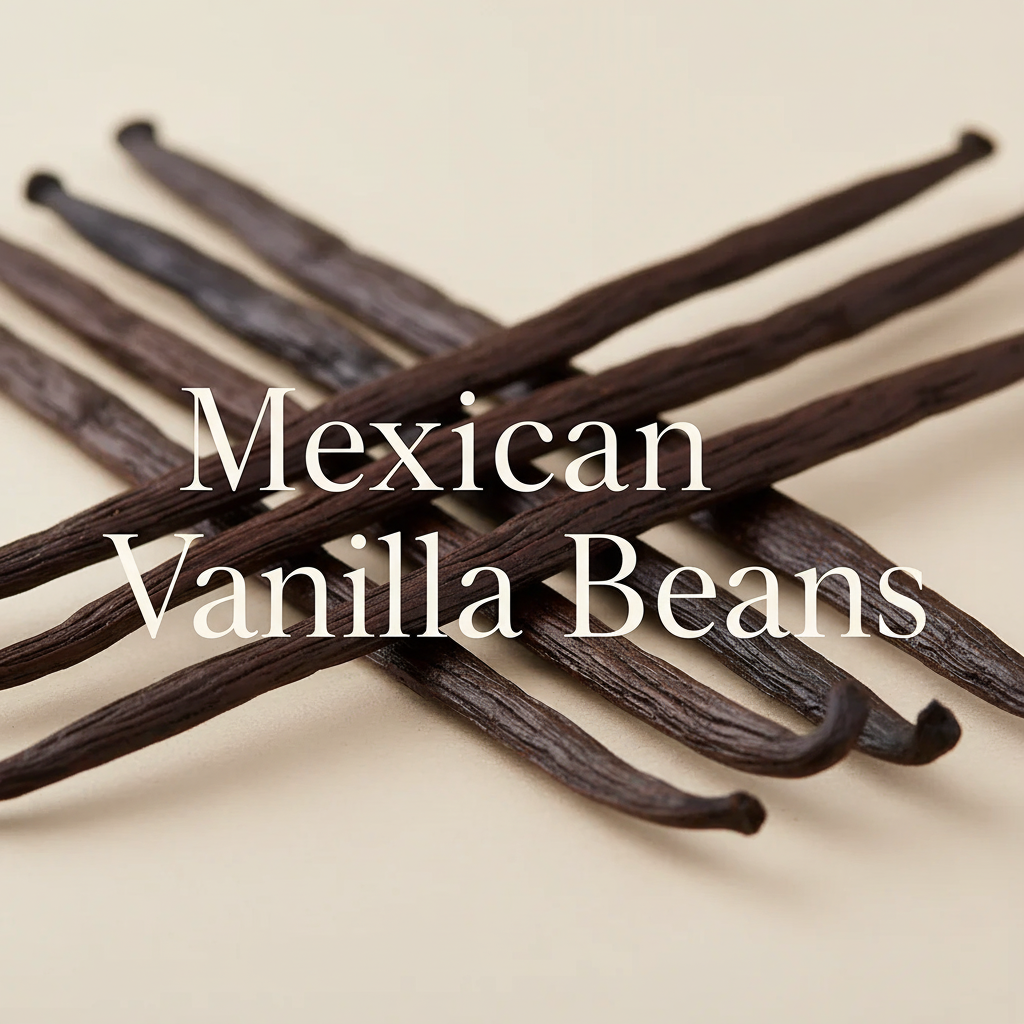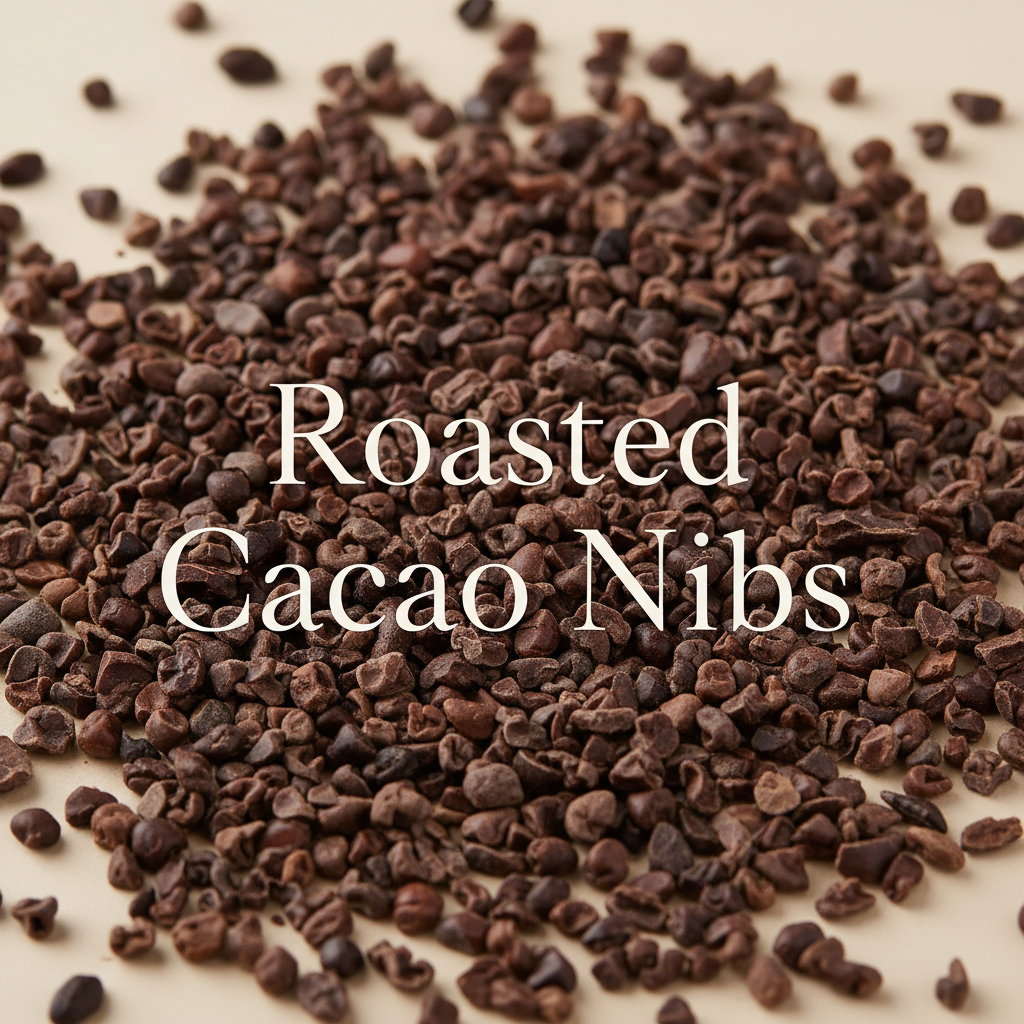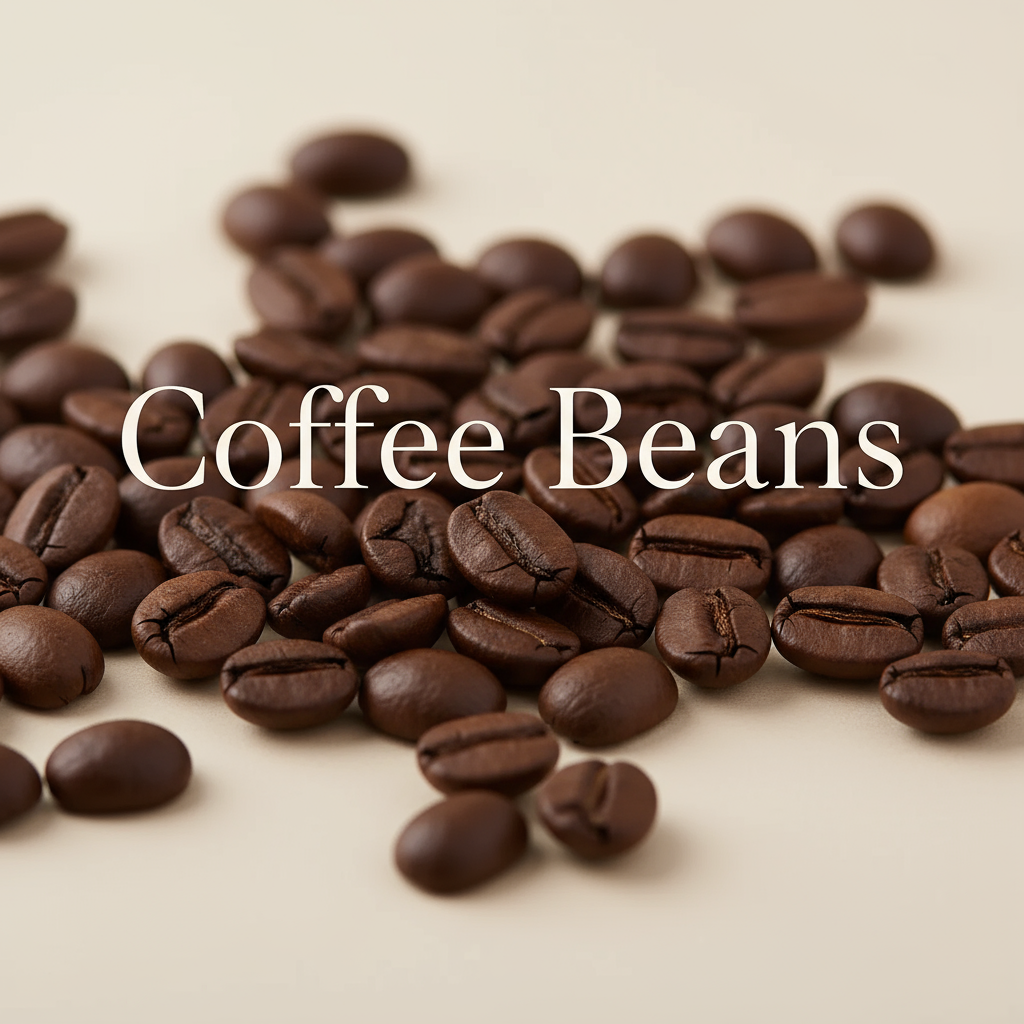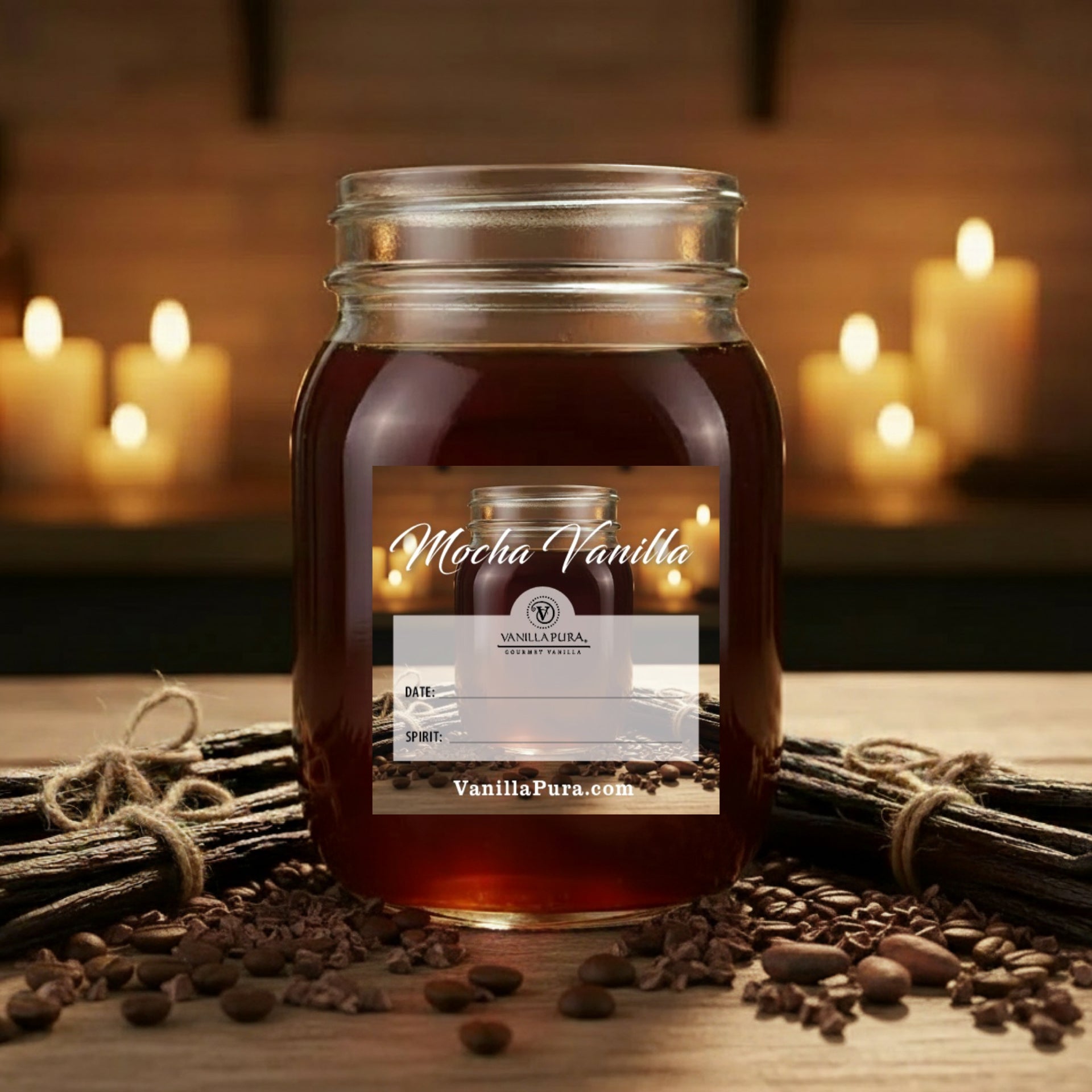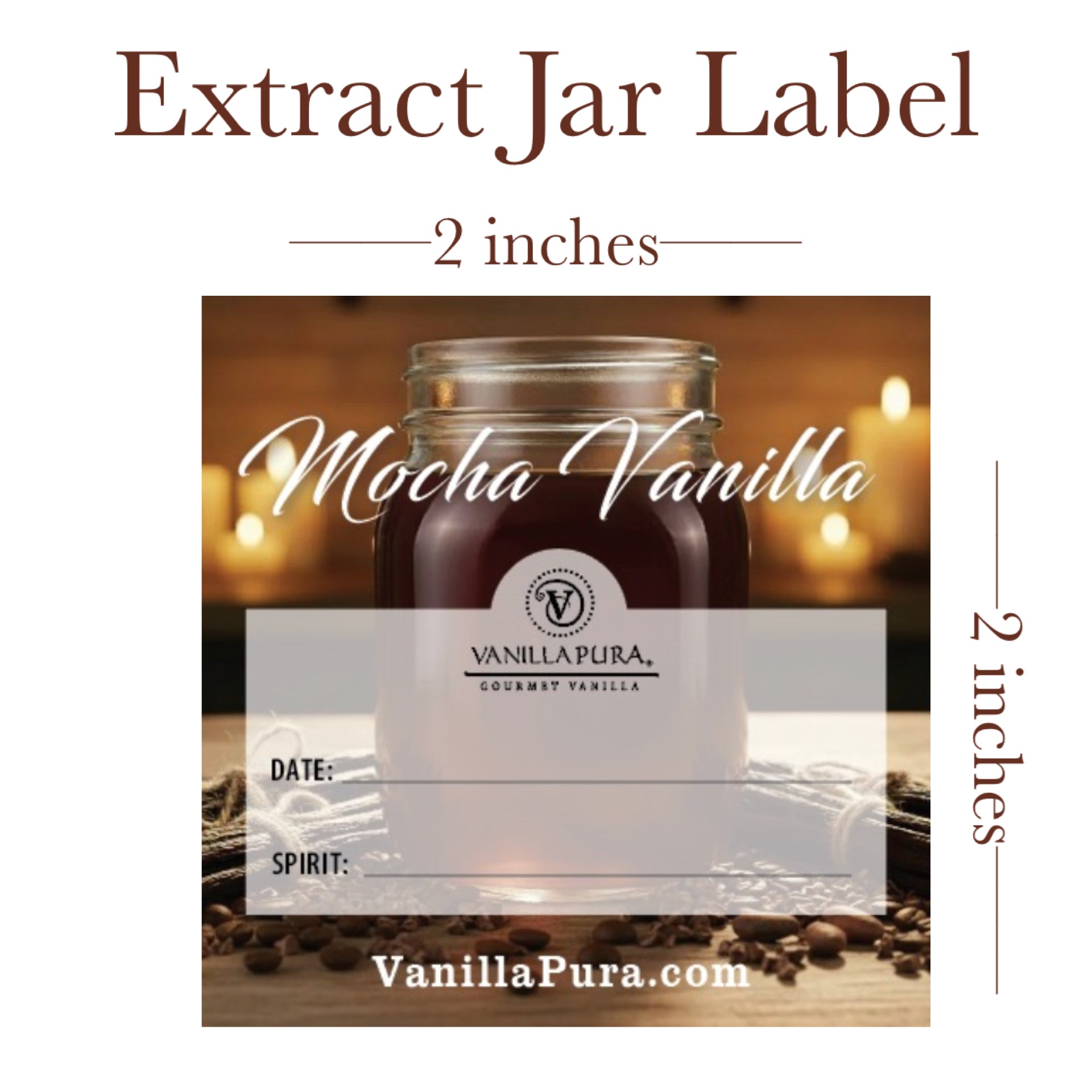Vanilla Bean Care
How do I properly handle, care for and store my vanilla beans? Do I clean my vanilla beans when they arrive? How long do vanilla beans last if they are vacuum sealed? Ho do I know if my vanilla beans have gone bad? If I find mold, are the vanilla beans all ruined? I'm not sure if it is mold or isn't? What if my beans arrive frozen in the winter?
These are some common questions that are discussed occasionally on our private Facebook group with thousands of at-home extract makers. While vanilla is sensitive to environmental changes (heat/cold, humidity/dryness, etc.) it is also naturally durable. Here are a few tips and answers to help you get the most out of every vanilla bean you receive, no matter where you buy it from.

Shipping to Cold Destinations
It isn't uncommon in the winter time to receive your vanilla beans on a cold day. Sometimes they may even arrive frozen. Will that hurt the beans?
While we don't recommend freezing or refrigerating vanilla beans as a long-term storage method, if your beans arrive frozen, simply keep them in their vacuum-sealed pouch and let them defrost slowly at room temperature. Sometimes they may form a white frost (it can look like powder and is sometimes mistaken for mold) as they thaw. That is normal and that white frost will go away after several minutes to an hour and then your beans are ready for use.

Do I clean my vanilla beans when I receive them?
Generally, the answer within most online communities is, no. Their logic is that the vanilla bean pod is full of vanillin, the naturally-occurring oil that gives vanilla its sweet taste. Through the arduous process of harvesting vanilla beans the bean is heated, bacteria has been killed and the oils sweated out to give the vanilla its sweet aroma and protective coating that keeps bacteria from growing. Rinsing them in water or alcohol may remove some of the oils or dry the pod unnecessarily, especially if they are going into your alcohol immediately to make vanilla extract.
However, if you are using the beans for frostings or other applications that do not include cooking or soaking in alcohol, we do recommend giving them a rinse right before use, just as you would with fruits or veggies purchased from the grocery store. If you see any debris on your vanilla beans, it's recommended that you give them a quick rinse. Also, in the occasional instance where small imperfections are present, many people wipe the outside of the bean with a towel dampened with alcohol to give the pod a quick cleaning before use.
So, while most online communities say no need to wash, we don't see a problem in giving them a quick water or alcohol rinse right before use, just as you would with store-bought produce. It may remove some external oil, but most of the oil for extracts comes from within the pod skin itself.
Care and Storage of Vanilla Beans
When you receive your vanilla beans, we recommend that they are used quickly. If you are using the beans to make vanilla extract, it's a good practice to have the spirits and bottles before you buy the beans, so you can put the beans into the spirits immediately upon arrival. Do not remove the beans from their vacuum-sealed pouch until they are ready to be used. Once the pouch is opened, the clock is ticking.
Within their vacuum-sealed pouches, the vanilla beans can be stored for several months in a cool/dry place away from any direct sunlight. We do not recommend storing them in the refrigerator or freezer for long periods of time. We have successfully stored vanilla beans for more than a year in our tests when vacuum sealed properly and stored in a cool/dry place.

Some of our vanilla pros store their vanilla beans in their vanilla extract spirits. By immediately submersing the vanilla beans in alcohol, you not only get the benefit of homemade vanilla extract, but you are also storing your whole beans in the safest possible place, since the alcohol kills and prohibits bacterial growth. Simply toss your new beans into a mother jar until you are ready to use them for vanilla sugar, vanilla paste or any other culinary treat that calls for whole vanilla beans or vanilla bean caviar.
Remember, your vanilla bean was harvested somewhere within the world's "Bean Belt" where average temperatures are always above 80F and humidity is high. From the bean belt, the beans are packaged and sent all around the world. They have been on a long journey to get to your home, so we always suggest using them quickly.
Always use proper, safe food handling techniques. Cut the beans on a clean surface and wash your hands before and after use.
Has my vanilla gone bad?
A vanilla bean is an organic product and, like any organic product it can go bad. However, given the nature of the tough outer skin of the vanilla bean and the protective, naturally-occurring vanillin oil, it is surprisingly durable.
Mold can occur as a result of temperature fluctuations and/or the inclusion of excess moisture, poor harvesting practices or bacteria growth during the harvesting/drying process. Like any mold, the vanilla-bean mold feeds on oxygen and bacteria as it grows. This is why we ship our vanilla beans in vacuum-sealed pouches with oxygen removed.
It can often be difficult to distinguish mold from naturally occurring imperfections on the bean pod, or damage caused to the bean pod during harvesting. In addition, one bad bean does not necessarily mean that the entire batch is bad, but the entire batch should be inspected further if one bad bean is found.
Of course, if mold is present and if you are concerned about the quality of the bean, the bean should be discarded and we will always replace them at no charge if the beans were purchased from us.
Here are some images of vanilla beans where the mold has grown substantially and the bean should not be used:

Can Vanilla be Saved if Mold is Found?
The picture above is an extreme case of mold. However, when mold is present in very small quantity the vanilla beans can sometimes be saved, according to the USDA. Specifically, some fruits and vegetables can be saved if they are firm with lower moisture content. The moisture content of grade-B vanilla beans is typically less than 25% and grade A is typically not greater than 35%. Moisture is needed for mold to grow so the lower the moisture content, the more likely it is that mold is localized. Based on the examples used in the chart below from the USDA, vanilla beans likely fall into the safe for use category, when following the instructions below:
|
Fruits and vegetables, FIRM (such as cabbage, bell peppers, carrots, etc.) |
Use. Cut off at least 1 inch around and below the mold spot (keep the knife out of the mold itself so it will not cross-contaminate other parts of the produce). | Small mold spots can be cut off FIRM fruits and vegetables with low moisture content. It's difficult for mold to penetrate dense foods. |
|
Fruits and vegetables, SOFT (such as cucumbers, peaches, tomatoes, etc.) |
DISCARD | SOFT fruits and vegetables with high moisture content can be contaminated below the surface. |
Here is the average moisture content of each example used in the chart above:
Safe for use:
- Cabbage: 80%
- Bell peppers: 80%
- Carrots: 86%
Not safe for use:
- Cucumbers: 96%
- Peaches: 88%
- Tomatos: 92%
Given the fact that vanilla beans have a maximum moisture content of less than 40% and are firm, but pliable like a bell pepper or cabbage, if mold is observed on just the tips of the beans, we believe it is safe to cut them as instructed above and still use the pod. Also given the fact most vanilla beans are going into 35%+ alcohol for a year or longer, any existing mold would not grow and likely be killed.
Sometimes It Looks Like Mold - But It Isn't
Vanilla beans that are vanillin rich may show other signs that are "mold-like" but not mold at all, so be cautious when throwing out your beans. You don't want to discard a perfectly-healthy bean! In fact, the presence of these abnormalities often indicates a high quality vanilla bean.
One of these occurrences is a vanillin crystal (or vanilla frost) that can form on the outside of the bean. Usually white with the appearance of a spider web, this crystal forms from the vanillin's response to temperature changes. Here is an image that we took of unusually-high formation of vanillin crystals so you can see in detail what it appears like. These are very healthy vanilla beans with vanilla frost and crystal formations:

Another occurrence that can appear like mold on a vanilla bean is "vanilla butter". This is light in color and typically found at the top or bottom of the bean. You can know that it is butter by holding it close to a heat source for a moment, and it will melt just like regular butter. You can also rub it between your fingers and it will feel like butter.
Here is an image of vanilla butter at the end of several vanilla bean pods:

Cold temperatures can also create "speckles" on the beans, or in some extreme cases, it can create a white coating (almost like a white dusting) on the bean. This may happen during shipping in the winter time. In this case the vanillin oil on the skin of the bean hardens (similar to oil hardening when left out overnight or placed in the fridge) and creates a tiny, off-white speck or a white powdery coat. The specks can be easily wiped off or just left alone. If you look closely, the speckles are often a very light brown and crystal-like. The powdery coat is the most deceiving occurrence. It's usually white and can cover a large portion of the bean. To test whether or not the powdery coat is mold, put the beans near a heat source for 15 mins or so and the powdery coat will disappear. (Mold will not disappear with heat.)
Here is a picture of vanilla beans with speckles. You have to look closely to see them:

There may be other imperfections when you examine your beans closely. There can be damage to the skin of a bean where the beans were tied into bundles by the farmers. Bundling requires the use of twine that can erode the outer skin of the beans on the outside of the bundle, as pictured below. The quality of the bean is still great.

Sometimes you will notice an abnormality on the skin of a vanilla pod that looks like a brand...and that is exactly what it is. Farmers will "tattoo" their vanilla beans to mitigate theft. Given the high price of vanilla, theft is an unfortunate reality that farmers in these small countries must deal with. Here is an image of a tattoo:

Finally, at-home extract makers may may notice white fatty-matter appearing on their beans shortly after submersing them in alcohol. It can have the initial appearance of mold, but when you look closely you will see that it is actually the fatty vanillin oils being extracted. They will break down over time. This is typically the sign of a vanillin-rich bean that is sure to be a sweet extract.

If you ever question whether it is fat or mold, simply remove the bean from the bottle and rub the fatty matter between your fingers. Oil will be smooth like butter and will break down easily. Mold will typically be more like crumbs and will not break down and dissolve.
Vanilla bean pod particles may also break down over time, so it isn't uncommon to see specs or "floaties" in your extracts, especially if you sliced or cut your beans before submersing them. This is normal. Some people love the specks, while others choose to pour their extracts through a strainer or coffee filter before use to ensure that it is clear. Either option is great and entirely up to the user.
We individually inspect every single vanilla bean before it is shipped to you. We vacuum seal our vanilla beans to remove the oxygen and mitigate the occurrence of mold growth in transit. We do not rinse our beans in alcohol before shipping to you, because you would be paying for the added alcohol weight and because beans are the very best when their natural, oily surface is left undisturbed.
If you ever have questions about your beans or you are concerned about their appearance, give us a call or send us an email at support@vanillapura.com.
Visit our comprehensive extract-making guide center for more essential extract making tips and ongoing education.


